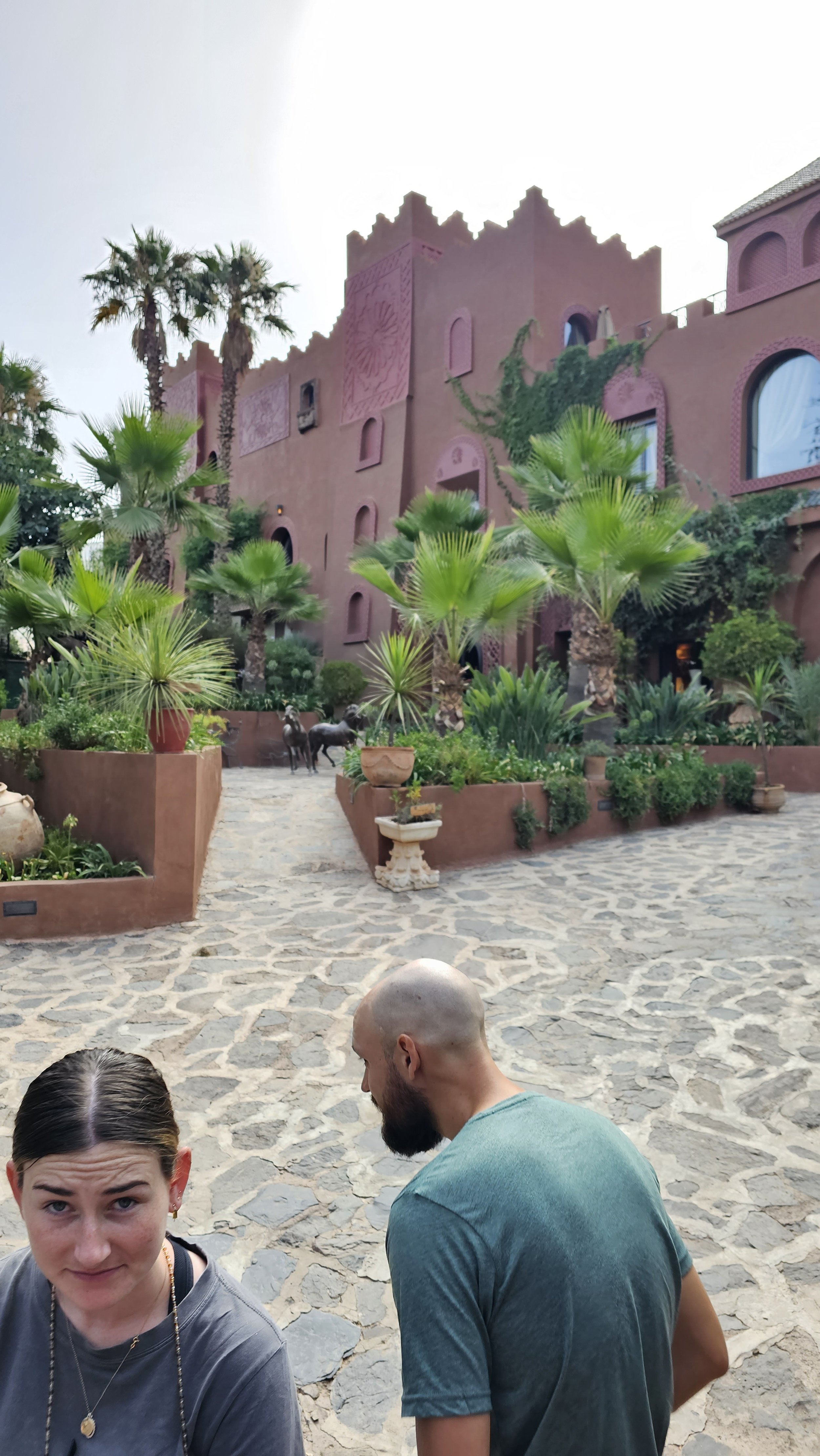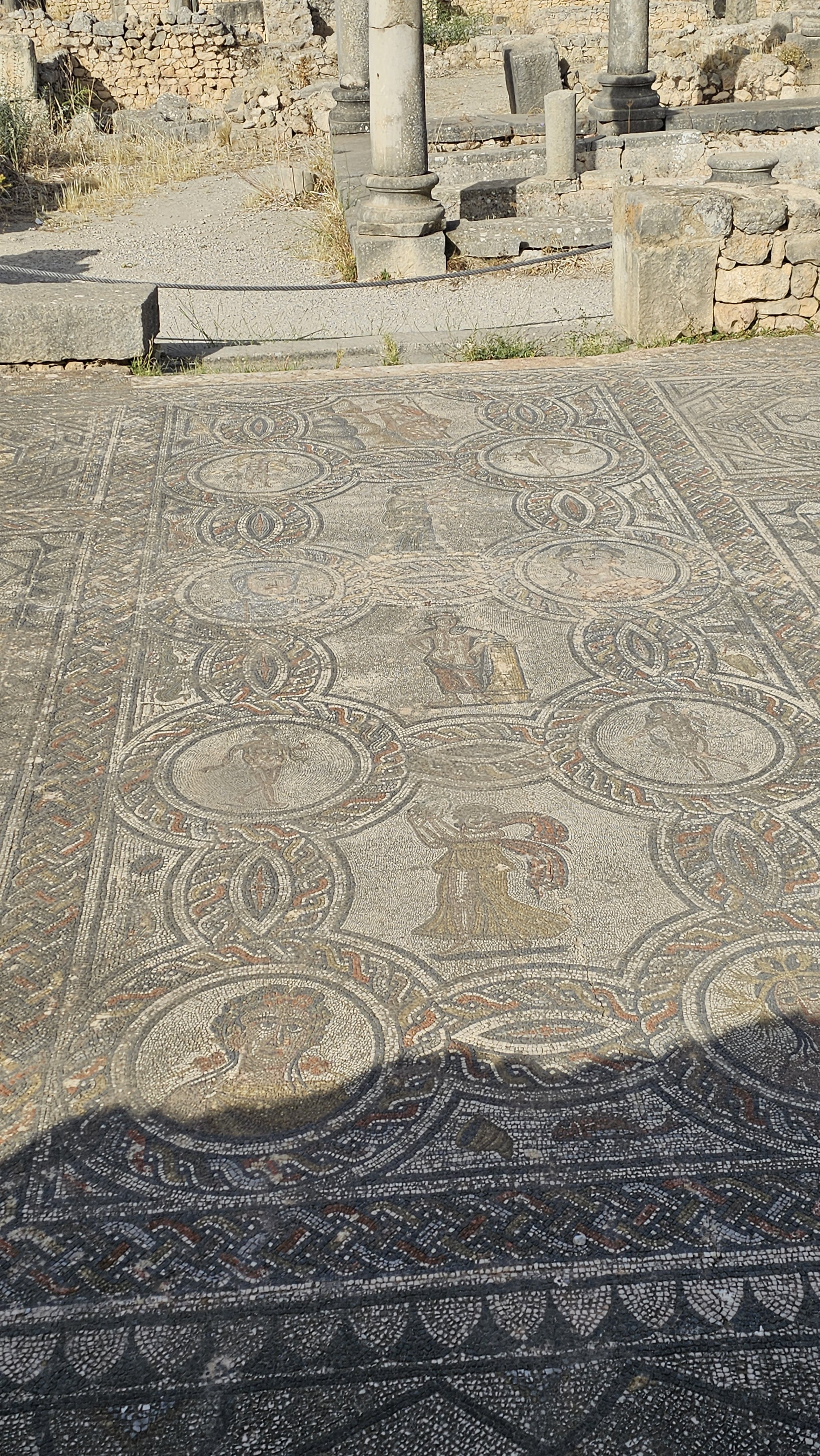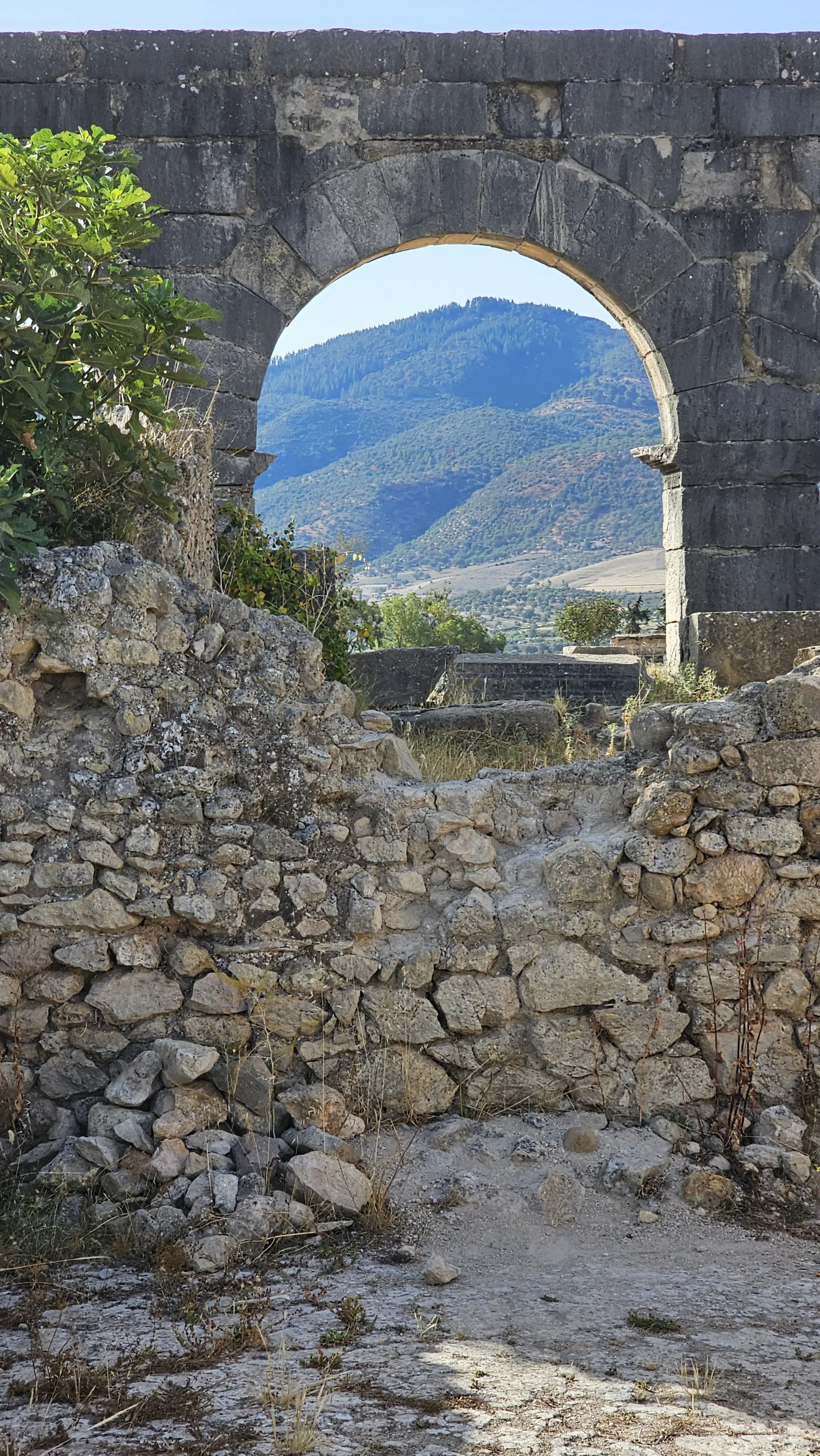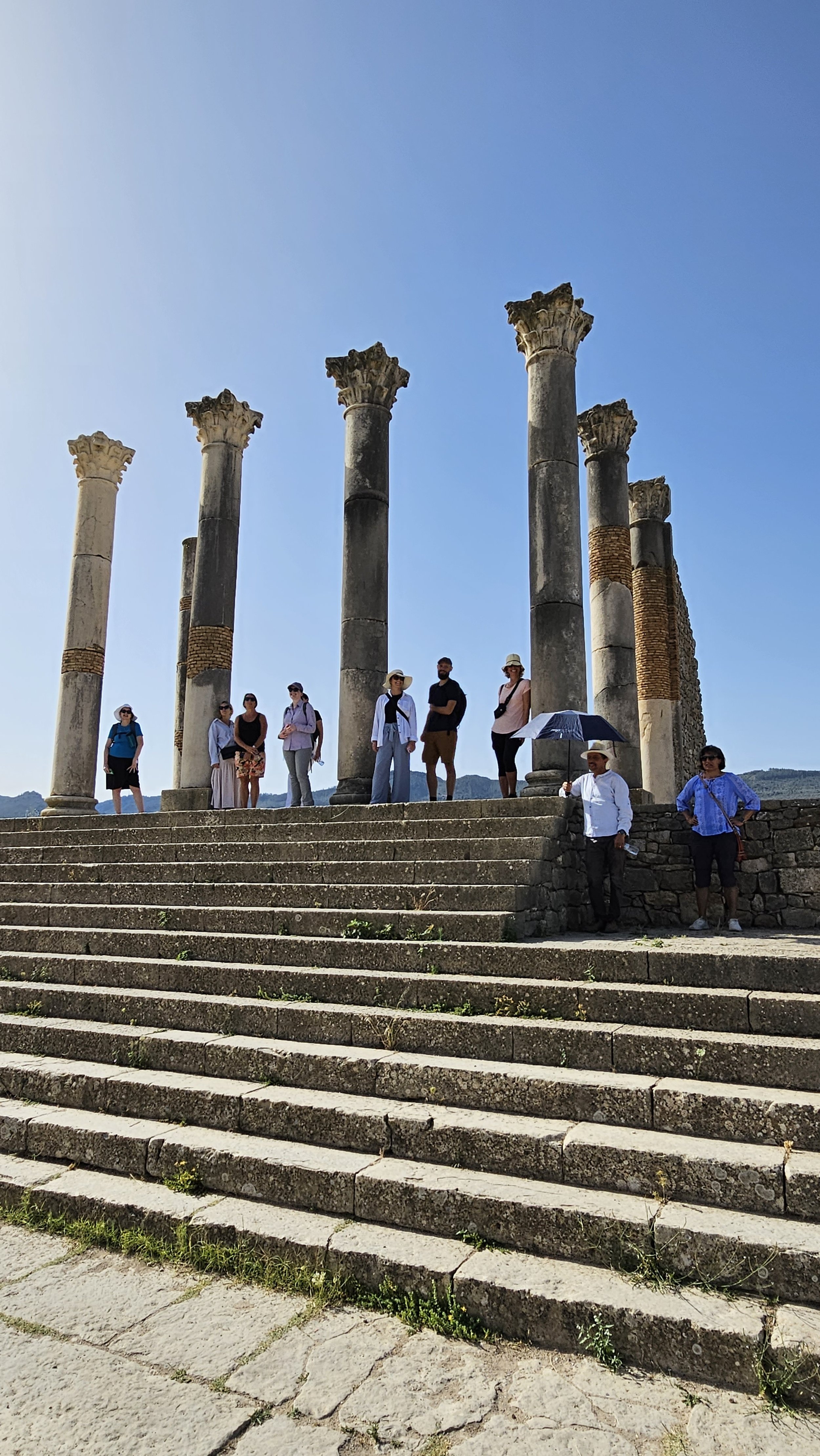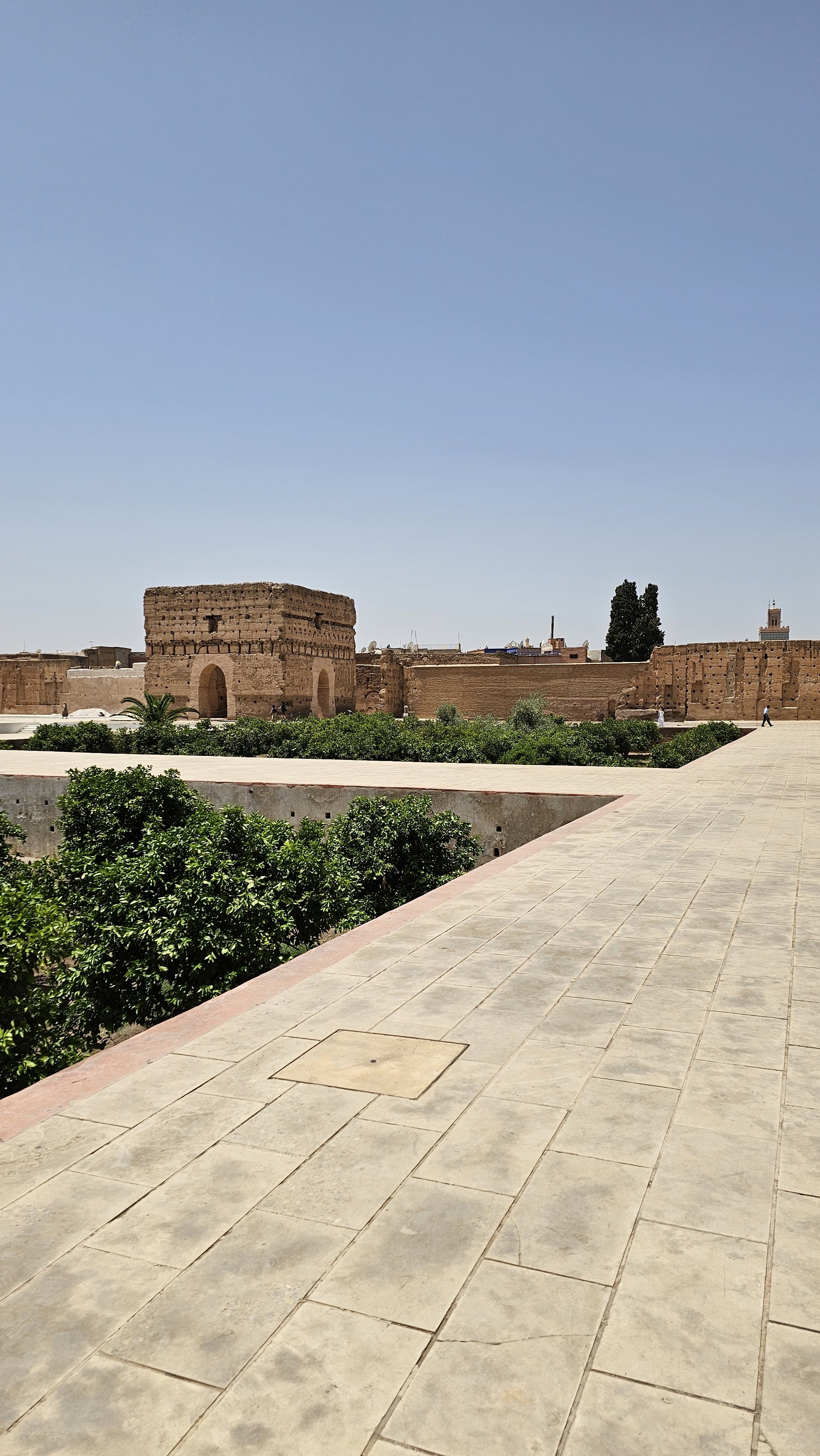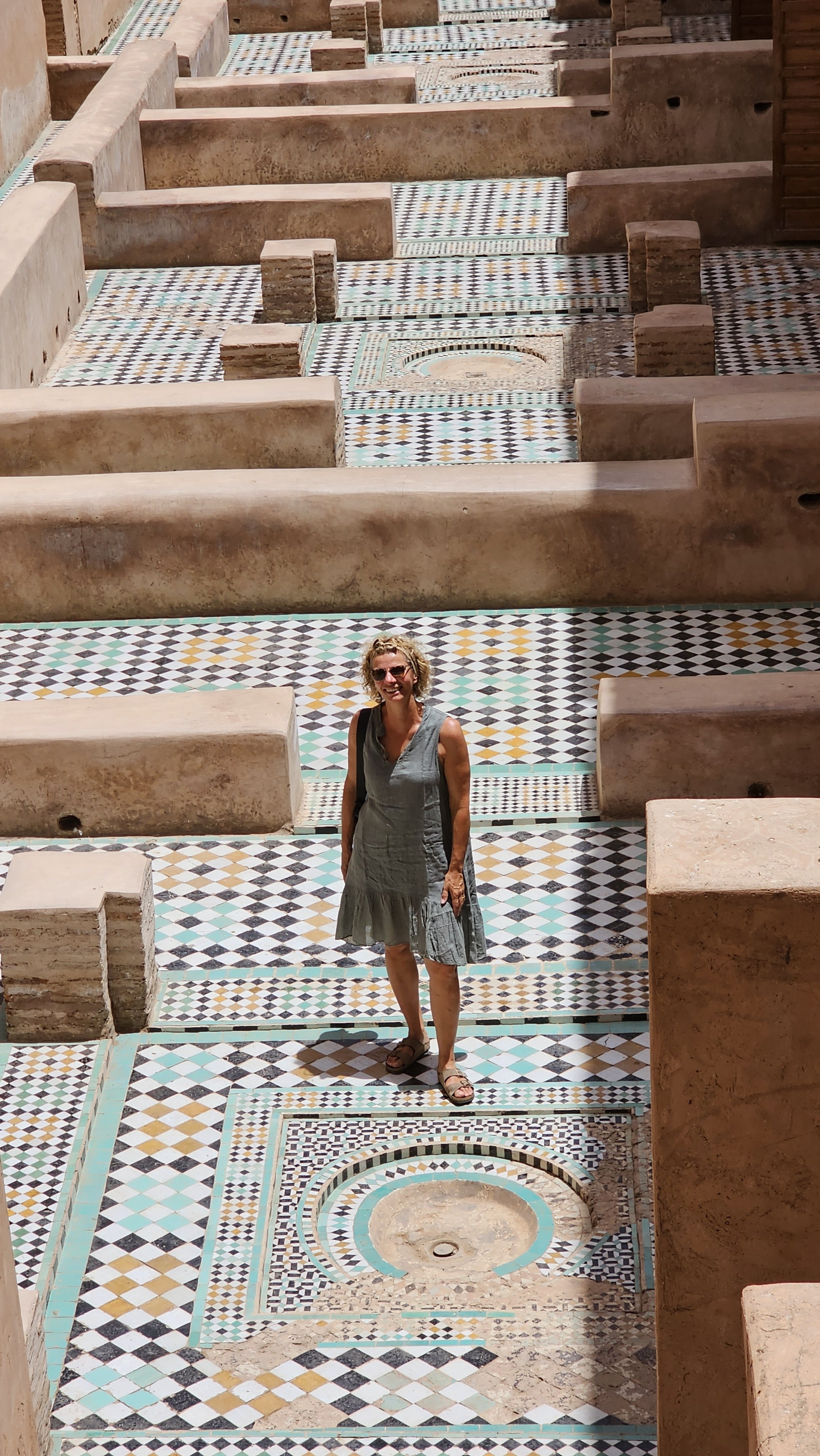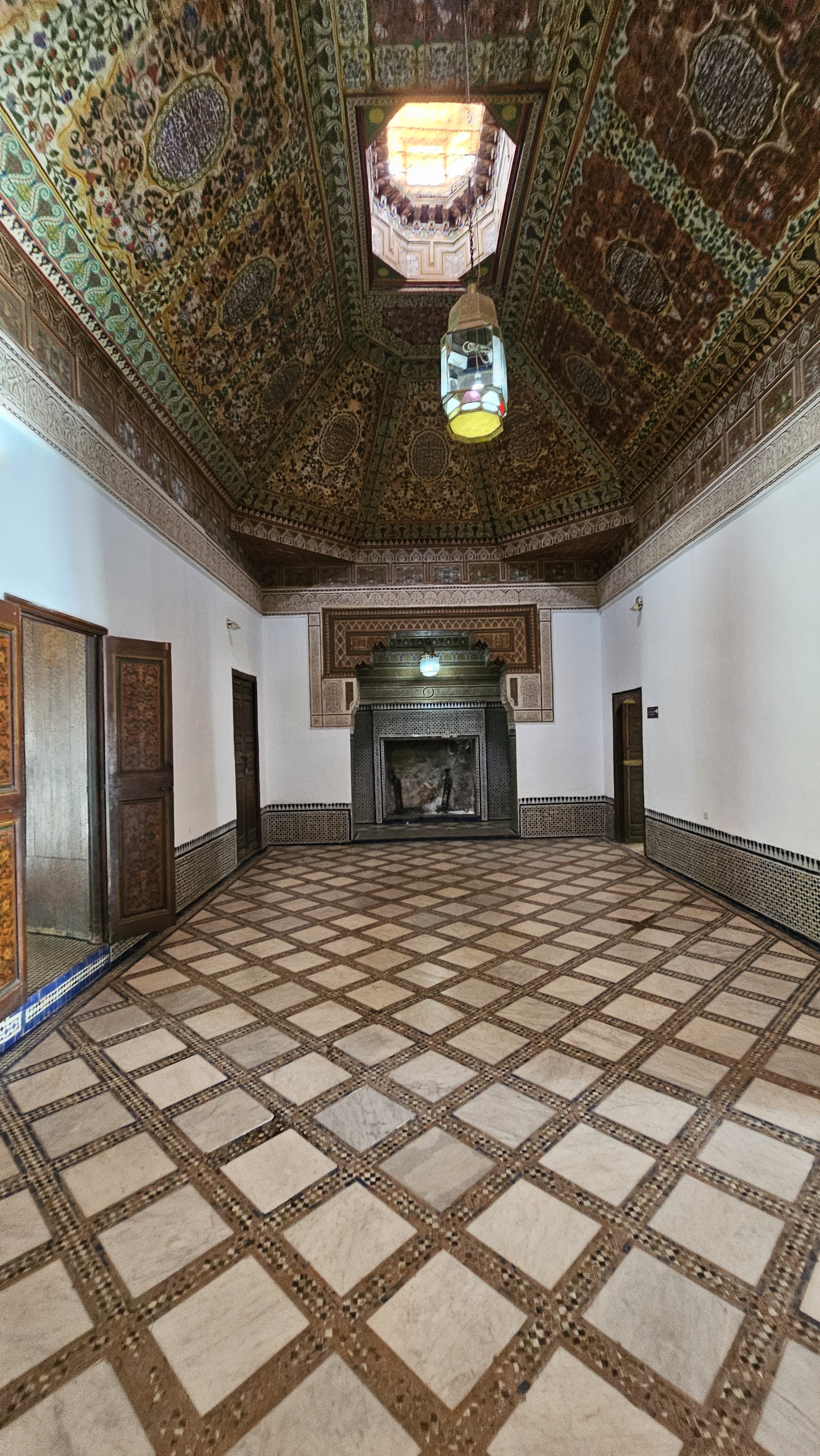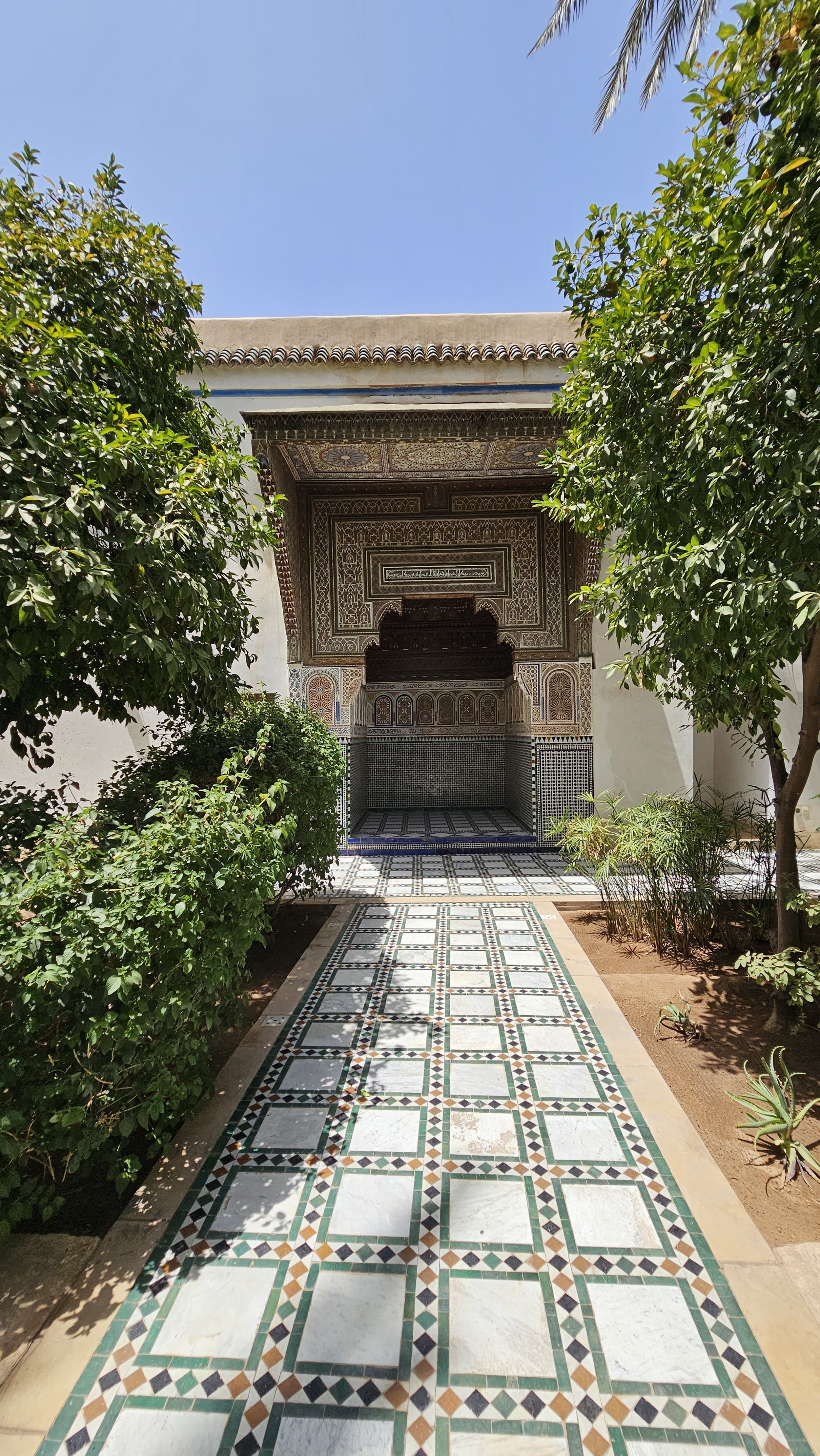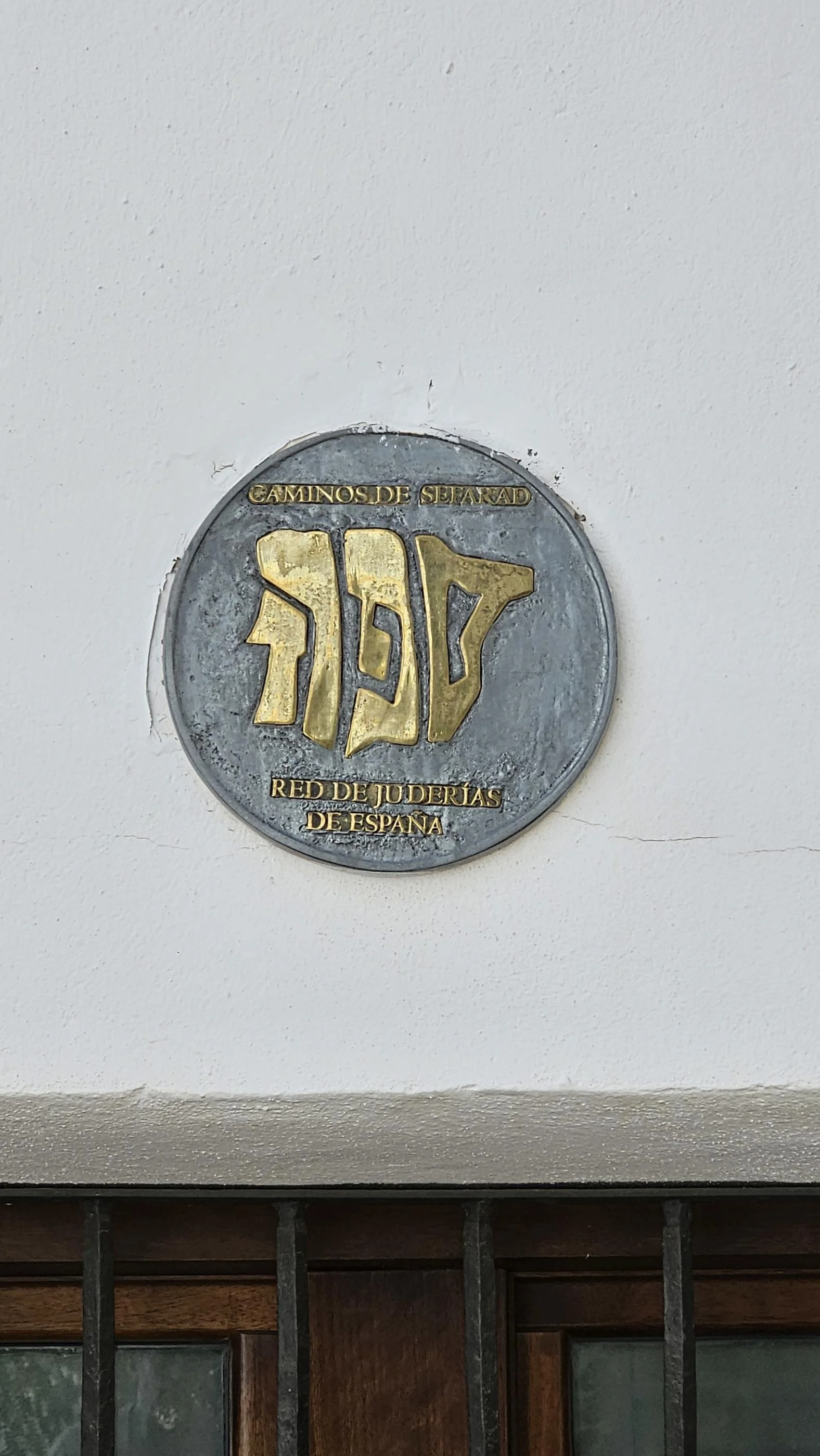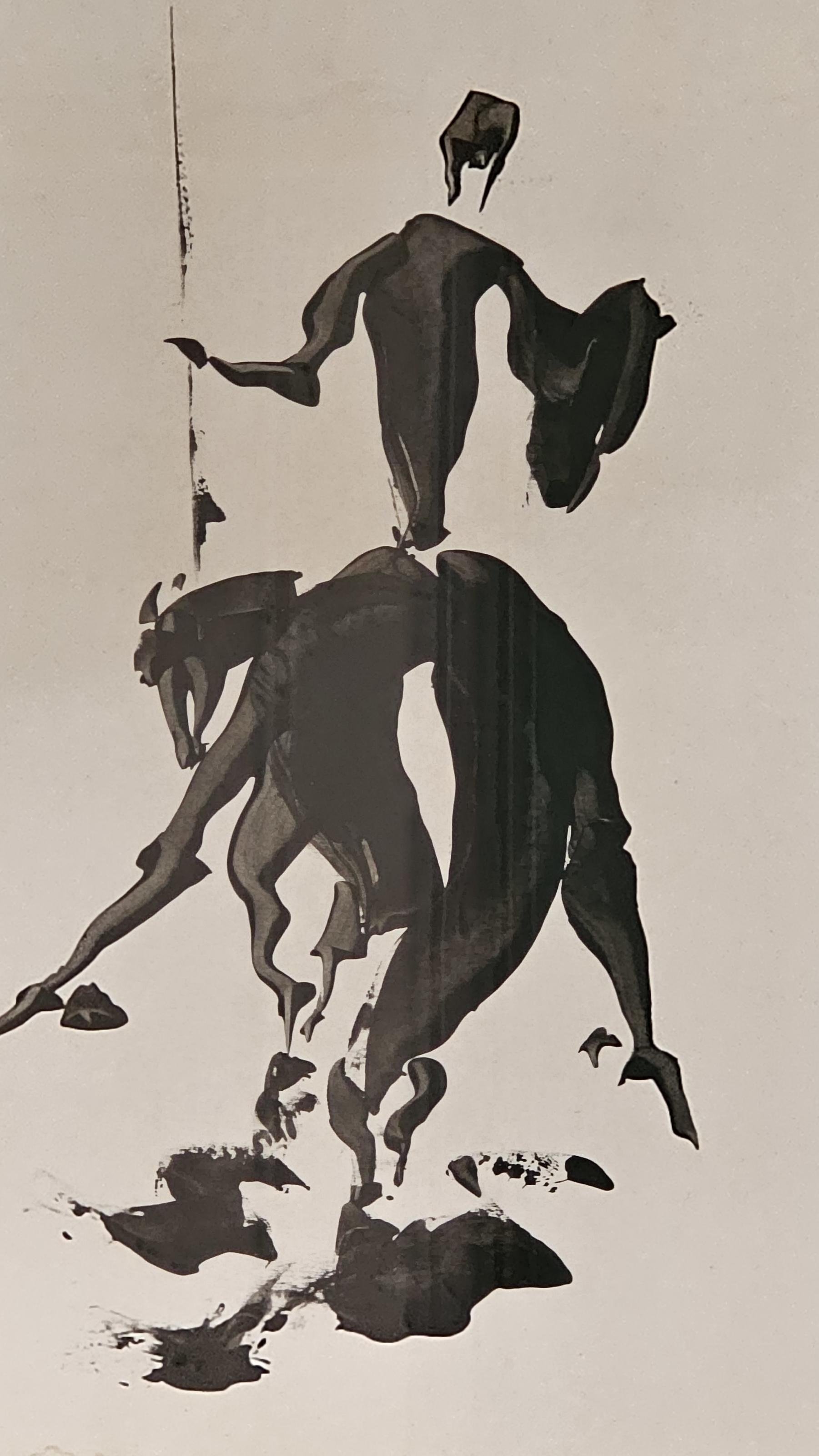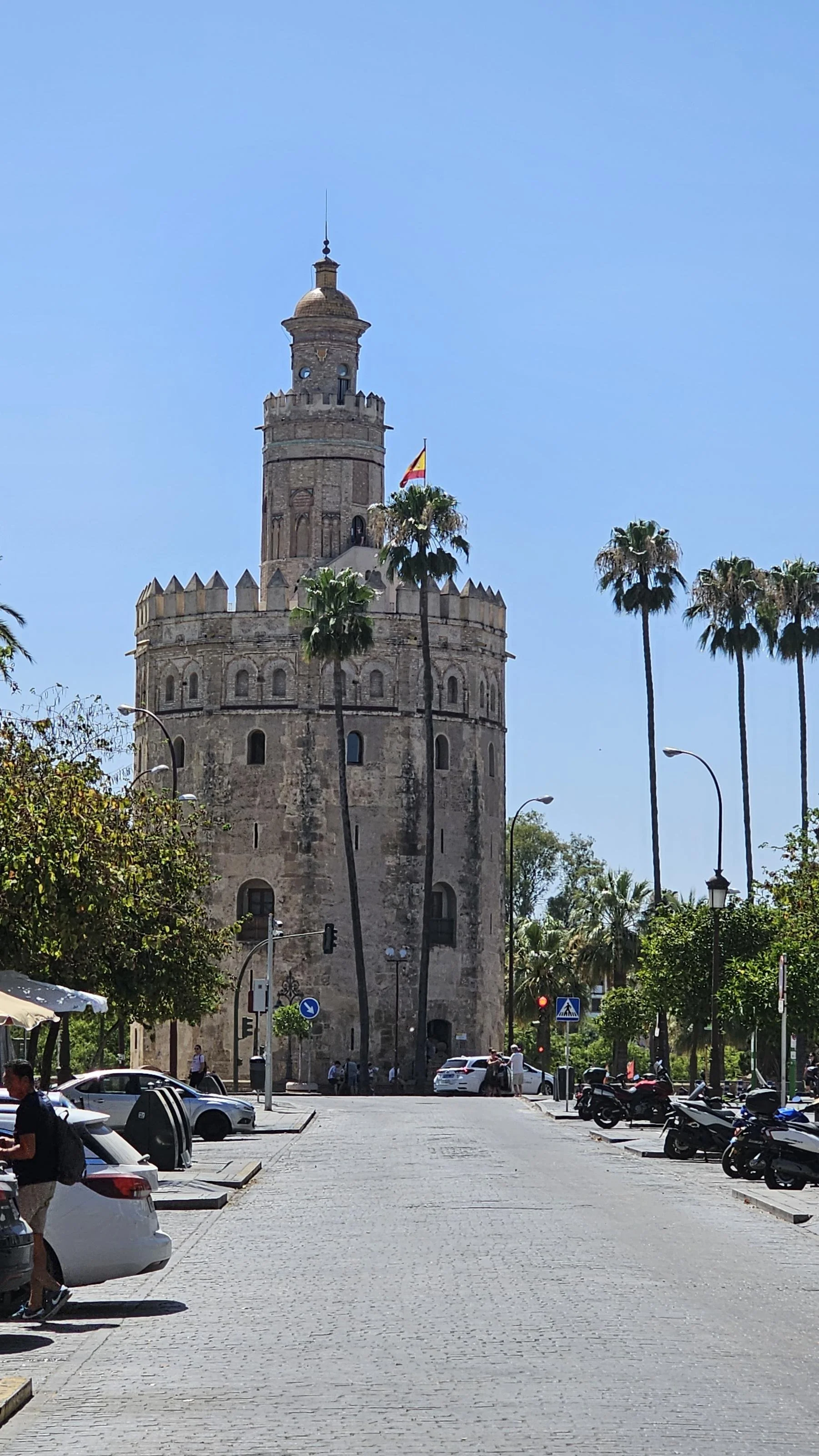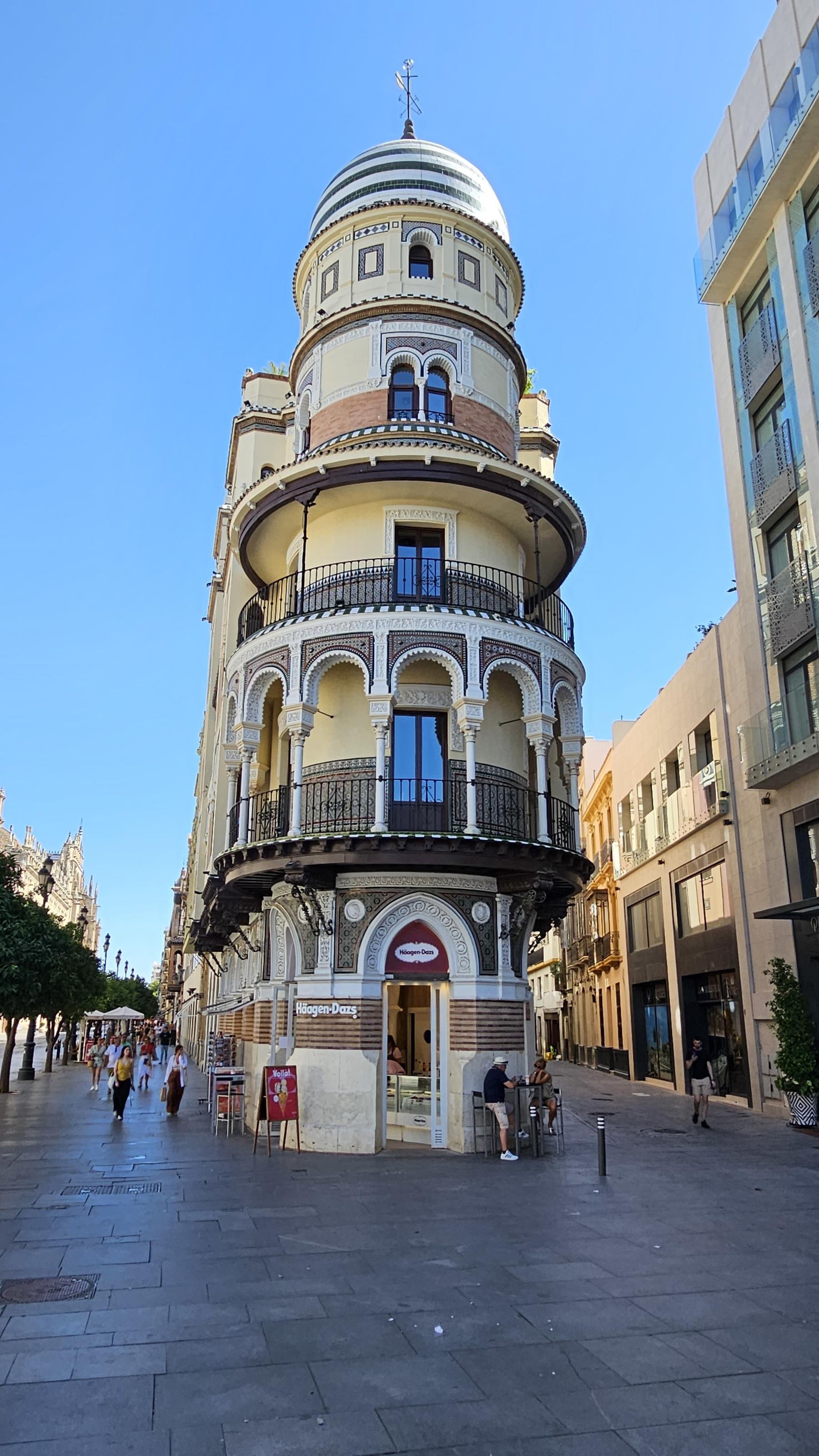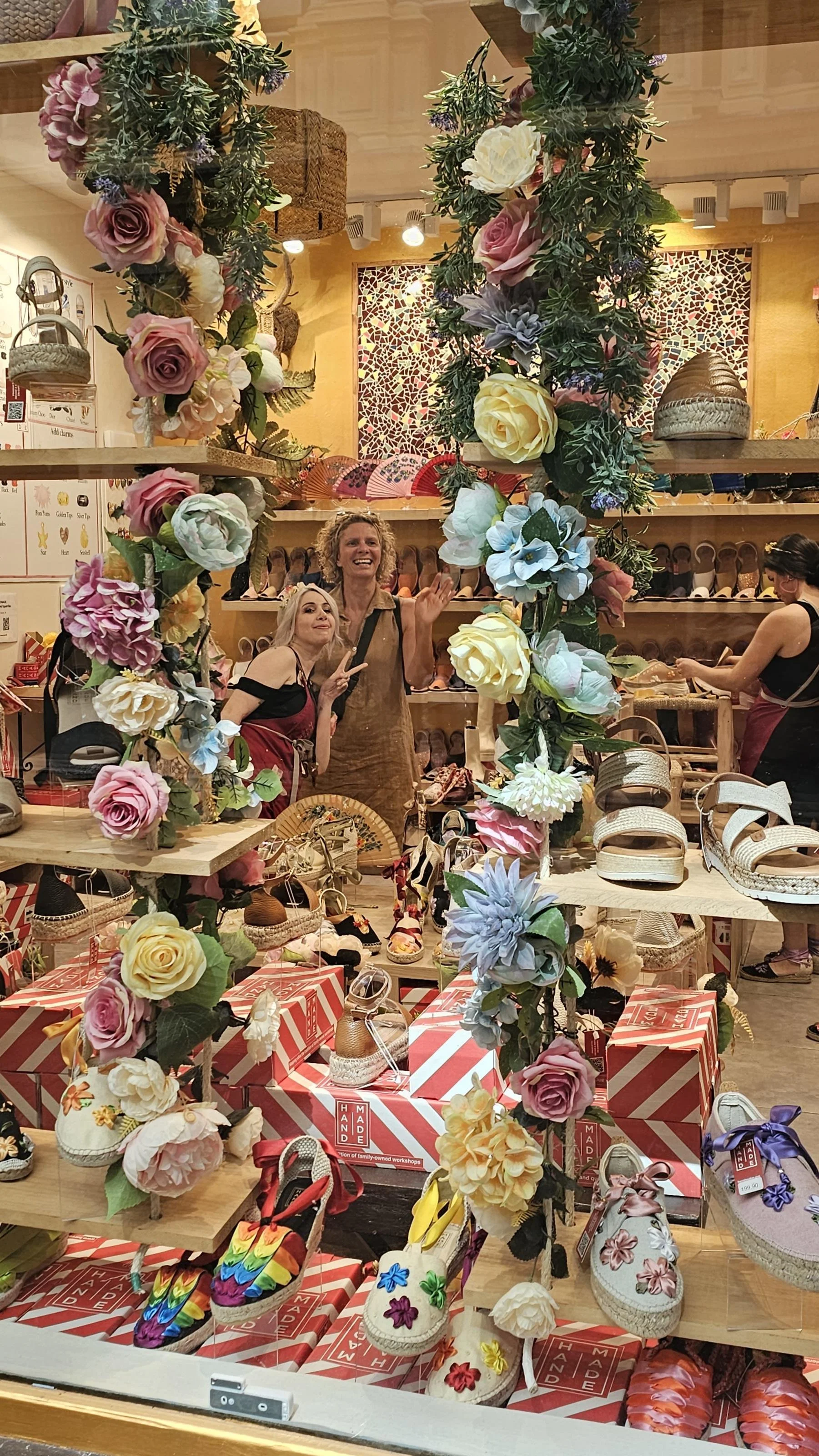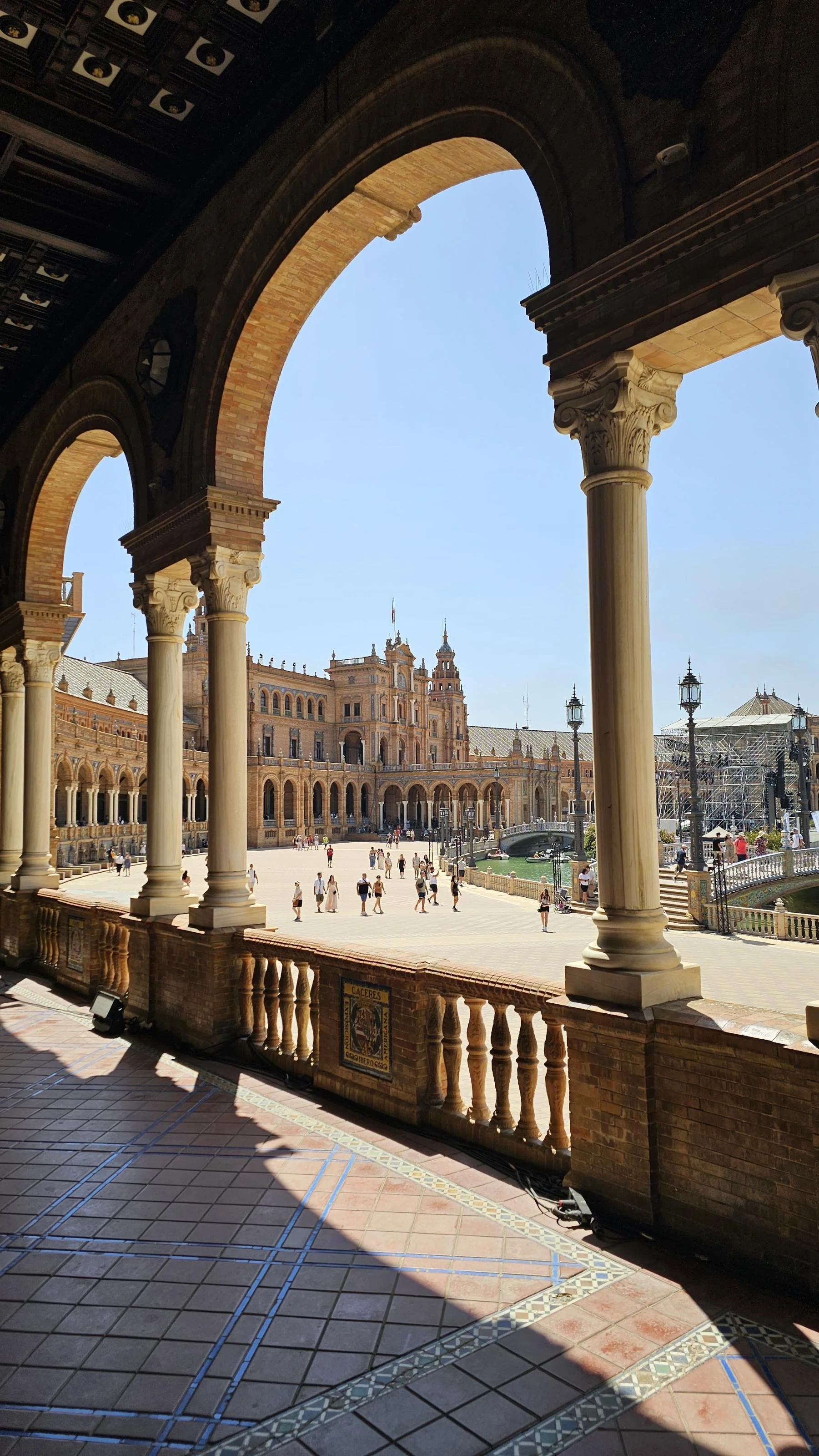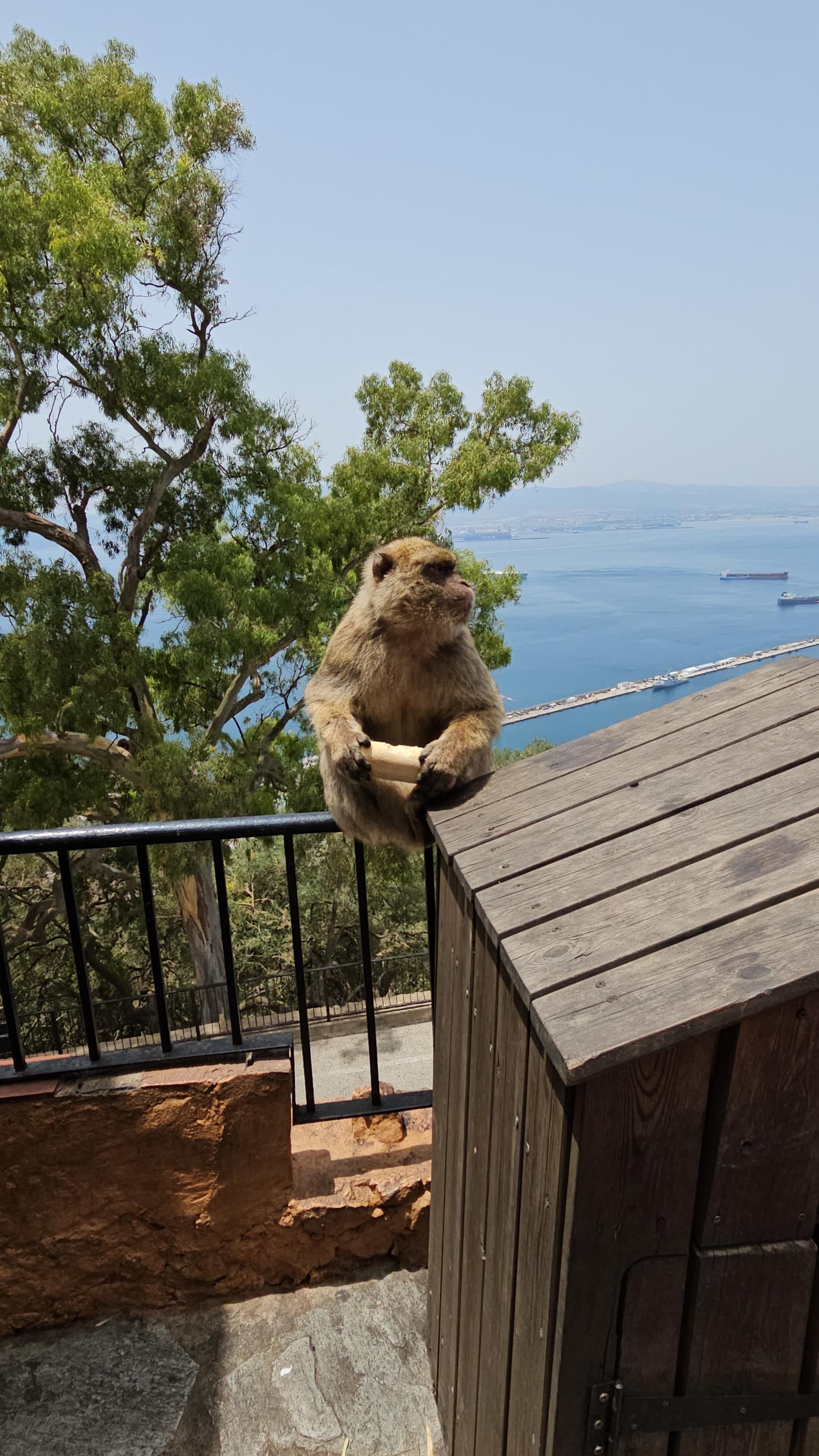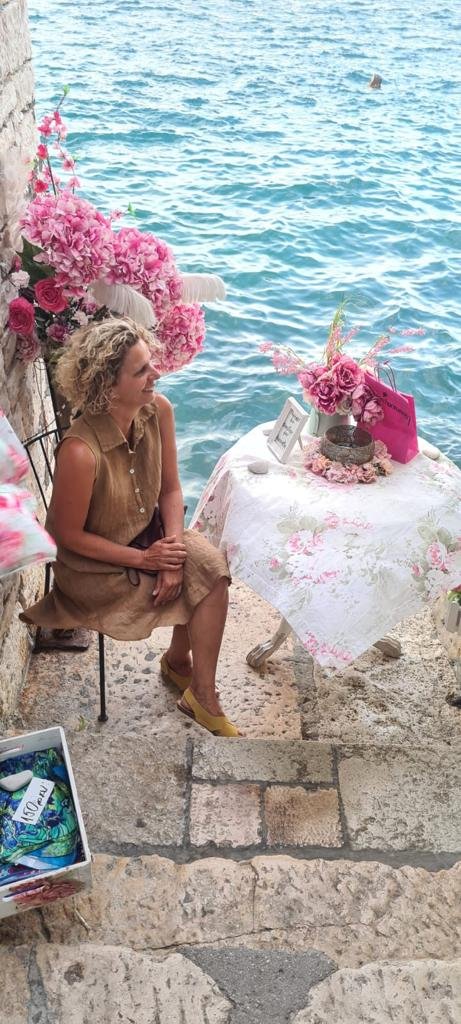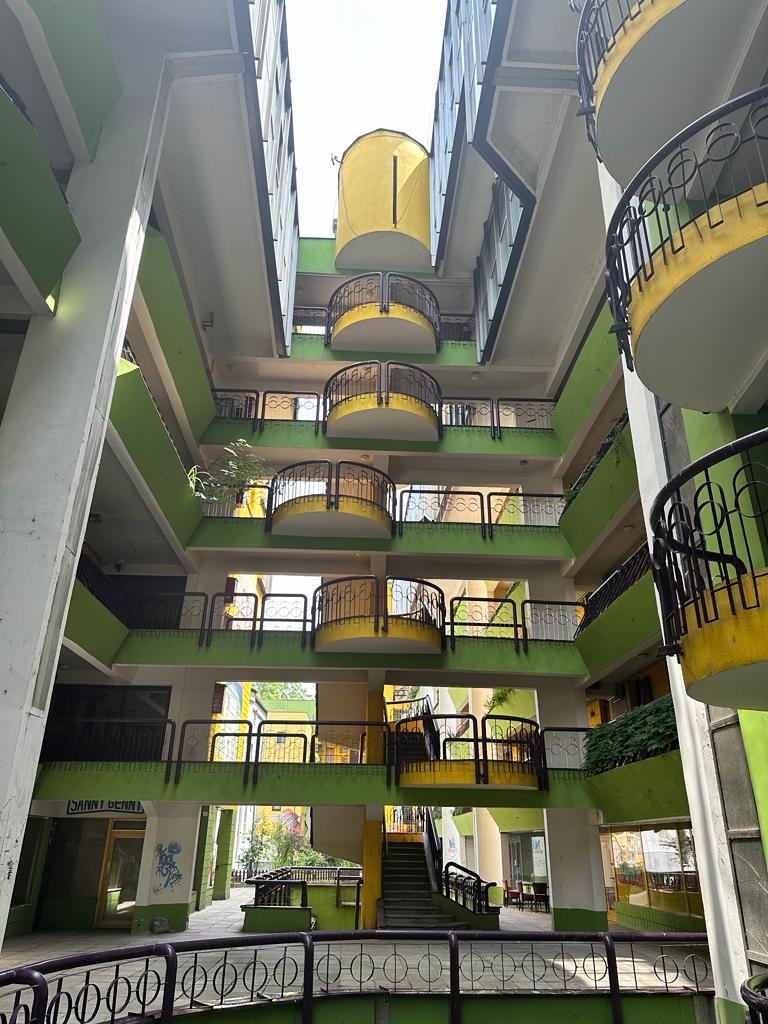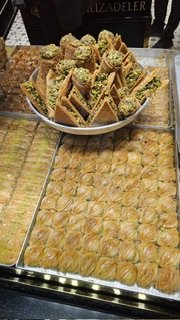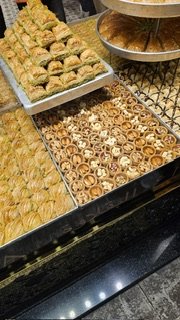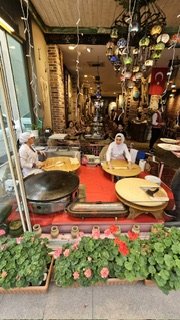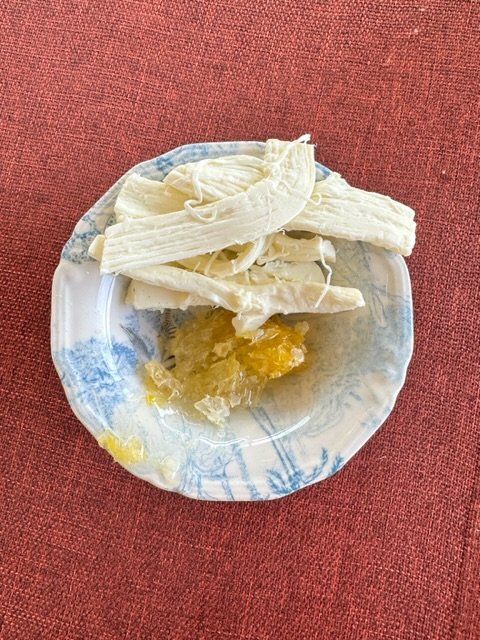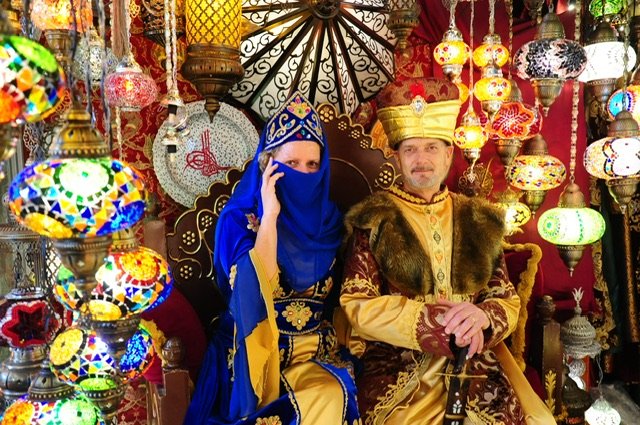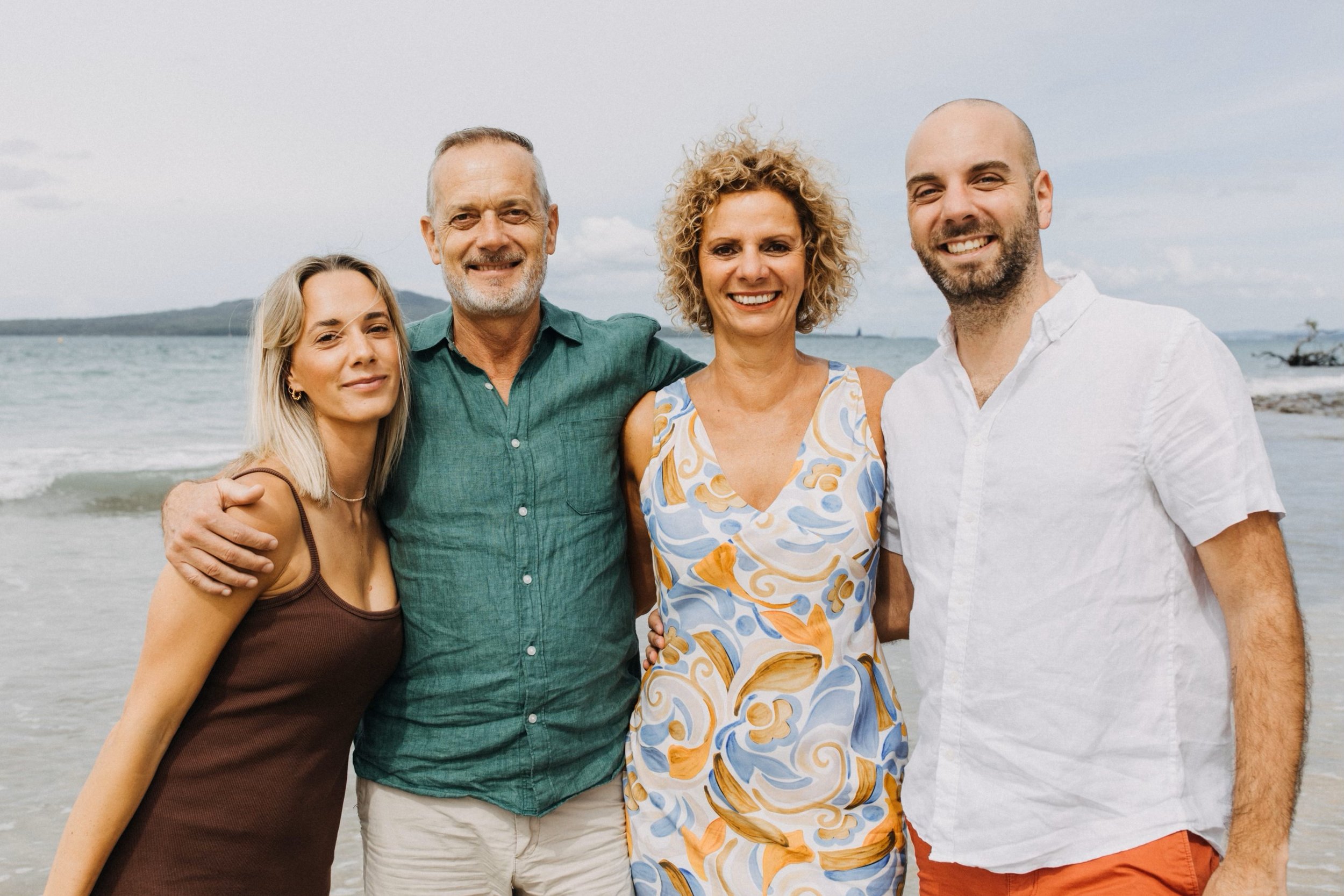Morocco - part 2 of 3
Day 10
We left Marrakech at 9am and took a short drive into the High Atlas Mountains to the village of Imlil. We stored our luggage in the hotel, packed an overnight bag onto mules and started our walk towards the peaceful village of Aroumd.
يله مغربي
Yellah Morocco
Let’s go Morocco
Day 10
We left Marrakech at 9am and took a short drive into the High Atlas Mountains to the village of Imlil. We stored our luggage in the hotel, packed an overnight bag onto mules and started our walk towards the peaceful village of Aroumd. Along a way we saw many walnut, apple and cherries trees full of fruit. This village is 400 years old, perched on a rocky outcrop and offers stunning views of the High Atlas Mountains. It is a special place to explore beyond the reach of the modern world.
I didn’t know there are as high mountains in Morocco perfect for hiking and tracking in spring or autumn time, and ski fields in the winter time, with heaters in the hotel bedrooms for cold winters, believe it or not?!
The mountain summit is 4167m above the sea level!
I thought Morocco was pretty much a desert country while actually Sahara Desert sand dunes make up 20% of Moroccan landmass, the rest of the Sahara desert is rocky mass or dried out lakes, everywhere else is green with huge Atlas Mountains chain spreading across the country. What a surprise!
The visit to Aroumd gave us an opportunity to experience a true Amazigh culture. Since Amazigh people are the indigenous people of Atlas Mountains, it was sooo cool! Lachen our new tour guide is another proud Amazigh!
12 families who live in Aroumd make up 2000 people who live as one community supporting one another in everything.
They have a mosque, Hamam and a school all built together as a community with no help from the government. After waiting for 50 years they simply took charge of their own destiny and went on with it!
Intrepid Tours collects the money and puts it towards the girls education and builds homes and colleges in villages within the Atlas Mountains, 5 are built so far and more to come. I loved this fact, it’s good to know a portion of our money goes for a good cause. I’d say good on them!
We spent a night in a family run mountain gite and enjoyed the hospitality of wooden baked bread, tangine or tajine, Moroccan whisky ( green and mint tea) and amazing peanuts cookies, yummy!
Early morning after breakfast we went hiking for 8km return to the pilgrimage shrine of Sidi Chamharouch!
We have never ever done anything like this and I am super proud of us both!
We hiked uphill on uneven surfaces in hot weather for over 4 hours, and went all the way up the mountain to see the shrine.
We walked from 1930m to 2350m above sea level! We had a freshly squeezed cold orange juice on the way up, saw many mules carrying people and goods, enjoyed the beauty of the nature all along.
Although the shrine is a holly place it carries a pretty bad reputation! The story goes like this: women come to either find a husband or those whose are married to get pregnant. Quran says you believe only in one God, when women start believing in shrine superpowers the troubles start, marriages split, betraying starts, and you can get the rest of the story, not good!
I found it fascinating we got told a completely different story by the local tour guide to what the itinerary stated about the shrine! That’s the best part of having local people guiding you on tours, so much more information and fun!
This day’s memory will last forever! We’ve never done anything like this before, we had sunshine, thunderstorms and refreshing walk back downhill with a bit of rain! Yes the very first rain since we started our journey that lasted 15mins!
On arrival we had delicious home made dinner and slept like the babies!
Photo Album Imlil/Aroumd
…walking towards pilgrimage shrine, at this point we were about 1,980 meters above sea level
… coming back to Imlil after the day walk


















Day 11
After breakfast we walked back to Imlil village to pick up our bags and we continued journey along the mountain roads and over Morocco’s highest pass Tizi n’Tichka (2260m) to Ait Benhaddou, one of the Morocco’s most iconic sites.
On the way we stopped by Richard Benson’s hotel full of people who pay fortune to stay in this beautiful hotel, who would have ever thought he’d own a hotel in Morocco?!
Ait Benhaddou village hasn’t changed since the 11th century although the local tour guide believes it’s even older because of the architecture and exposed external beauty of the buildings built out of terracotta soil, straws and water! And they are still standing strong and proud!
Between the old and a new village there is a river and donkeys are used to carry people and stuff over. But no river today! Drought is so prominent, they have never experienced it as bad, so we simply walked across the river bed to get to the old village.
After 1956 the first family moved from the old to the new village, the year when Morocco declared its independence. Today there are only 8 families who live in the old village.
It used to be a caravan stop for salt trading. In the old days salt and gold had the same value / price and the river is called the Salt River, it was a golden time for the community.
But guess what?! It is a very important site today too, not because of the salt but for the movies production! Yes, this is the site where Gladiator (both movies) were shot, plus Game of Thrones, including our very own tour guide acting in the Season 4 episode 6! We are all now going to rewatch that episode to spot our Mohamed. 🤗
Since 1987 this village has become UNESCO protected site. Since then, if a movie studio builds anything, they need to destroy it after the production is over to keep the site in its original state. A great call!
Mohamed took us to the old village to show us his family home. It’s mind blowing how they make living out of so little and how strong is the community co-life.
Even animals live inside the house area because the land is individually owned so they respect it and don’t want animals to randomly wonder around and eat each other grass. It’s organised farming with pre agreed protocols. We could learn a lot from these people!
Only 10 years ago they’ve got a fresh water in houses. There are many olive trees, and they make a well known extra virgin olive oil out of green olives.
Bread is made every second day, it is a shared responsibility, it means less work and less wood needed to bake it when they work as a community rather than individually. Super cool if you ask me!
Couscous takes 3 hours to make, yes and not 3 minutes! First you stew the meat with onion and water, later you add veggies, and couscous comes last, you must only steam couscous, never cover it with boiled water!
They have a mosque and a synagogue.
Jews and Muslim lived here together for 600 years. In 1947 most Jews went to Israel after the country was formed, and in 1964 the last Jew family left to Jerusalem.
When I asked why today co-life is almost an impossible concept, Mohamed’s response was: it’s never been about religion, it’s always about the money, power, politics and crazy people! I couldn’t agree more!
We stopped by Tawesna Teahouse on the banks of the river. This community run establishment provides local women with income to support their families, who in turn produce delicious pastries, cookies and tea using locally produced ingredients.
Photo Album Richard Benson’s hotel
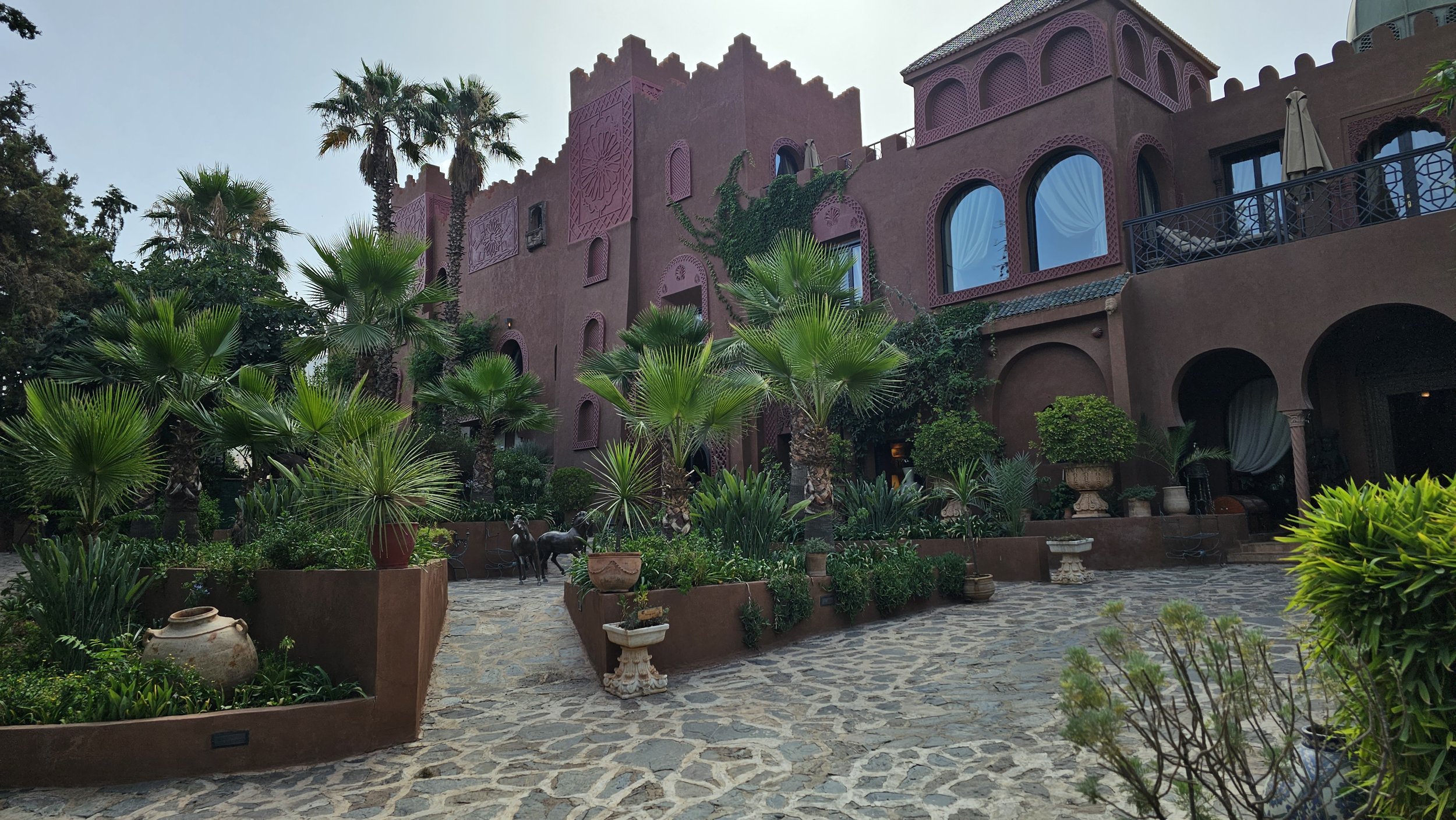

Photo Album Ait Benhaddou

























Day 12
We left after breakfast and went south towards Sahara.
We visited a nice local carpet “factory” where ladies work in their spare time. The variety is phenomenal, all hand made, individually designed and unique. We bought a small rug for Jahorina, couldn’t resist to do it and are so happy we did it as 80% of the carpet price goes to the lady who made it! They only use natural ingredients for dying: white, grey and black are natural colours, green tea is used to get a green colour, saffron and pomegranate produce red and yellow depending on a ratio, and of course indigo gives the blue colour. Natural and organic rug is off to Jahorina!!!
After the carpet place, we drove by the biggest solar power pole in the world, shaped like giant cobra snake, and arrived to The Atlas Movie Studio, the third biggest cinematic studio in the world and the biggest in Africa in Ourarzazate. I had no idea this massive place existed in Morocco! You see how many cool, interesting and new things we uncovered in this trip. Morocco is amazing and had a lot more to offer than a desert and camels!
A few fun facts about the movies screened here:
Jewels of Niles was the first movie
Gladiator
James Bond
Prison Break series
Aladdin
Ben-Hur etc..
Passion of the Christ - Directed here but banned in many European countries due to Jesus relationship with Marija Magdalena.
7 years in Tibet with Brad Pitt - represents Tibet as an independent country and was banned in China. Atlas Mountains were used to represent Tibet.
Versace commercial screened here !
Netflix Cleopatra new series is being screened right now and we shot a video on the actual site - you’d love it!
… from Netflix’s new series Cleopatra set
…from Alladin movie set
Photo Album The Atlas Movie Studio


They use wood and plaster to build the scenes, everything is fake but looks so real!
Some scenes are reused for different movies, economy of scale!
We left the Atlas Studio with tens of photos and videos, loved it!
Our journey continued and we arrived around 4.30pm to Zagora, the last township before the Sahara desert. It felt we were entering a ghost town, no one was out, town was literally empty because it was deadly hot!
We settled into our hotel and jumped into the pool to refresh before the palm trees oasis walk and a dinner.
Palm trees walk was superb, all trees are Date Palm trees and they grow over 23 varieties, with October being the harvest month when the top quality dates are sold for 200 dirham per 1kg. (20 Euros). On average each palm tree produces around 260kg dates! And they come in different levels of sweetness.
Irrigation systems are in place to water palm trees and veggies and sometimes have to go 35 to 65m deep to find the water! The working conditions and ingenuity of these people continues to fascinate me each day!
Photo Album Zagora










Morocco - part 1
After luxuries, clean, beautiful, colorful, mixed and proud Andalusia we took a plane from Malaga and landed in Casablanca, Morocco!
After luxuries, clean, beautiful, colourful, mixed and proud Andalusia we took a plane from Malaga and landed in Casablanca, Morocco!
As we were running through Malaga airport Nebojsa’s legs walked straight into my favourite Spanish shop Desigual! He is a great husband!
I got a new beautiful and colorful leather backpack, but I am told I have to get rid of my existing Desigual backpack bought in New York and I can’t do it! It is worn out but I simply love both tooooo much and they are precious memories from different trips. There is no room in my overcrowded luggage (yes I know I am useless when it comes to packing), we will see how I go, for now I am keeping both🤗
Why Morocco?
So far we have visited every continent but for Africa and Antartica. Morocco was the obvious choice for a few reasons:
Proximity to Europe / Spain
Experience Africa in its full light and do something we’ve never done before
Push ourselves out of our comfort
Get confronted with a different culture, tradition, religion, rituals, economic status, social development, education and health systems, learn and learn more
Visit the country that went mad at the last FIFA soccer tournament supporting their Team playing for the third place v Croatia - we loved watching the entire country backing up their team
Go to Sahara and ride camels
Continue our Islam educational experience
And the list goes on….
In order to tick all these boxes and a few more we decided an organised tour long enough to see everything we wanted to and with enough free time to explore on our own will be the best choice.
Intrepid Morocco Encompassed 17 days Tour was booked and off we went!
Neb was persistent to buy a Sahara cap before our tour to Marocco. I would like you to take a moment and play a little game called “Spot the difference” before diving into a comprehensive reading on Maroccan history:
Courtesy of our son Miroslav who came up with this. Thanks buddy.
السلام عليكم المغرب
(in Arabic caligraphy)ⵜⵉⵣⵉⵖⵔⴰⵜⵏ ⴰⵍⵎⵏⵏⵓⵙⵏ
(in Berber or Amazigh language)Salaam Aleikum Maroc
(in Latin Arabic)Welcome to Morocco
(in English)
Morocco is the mosaic of people and cultures! It’s the country of contrasts! We saw so much variety and visited so many amazing places, some impressed us, some made us incredibly upset with inequity, injustice and poverty, made us feel incredibly grateful for the life we live today and above all made us feel we want to help and make a change for the better future of this amazing country and its warm, welcoming and caring people. We don’t know how to help them but we will figure out what we could do through the Intrepid “Education for all” programs.
Let’s travel through Morocco together 😎
Day 1&2
After arriving to Casablanca late afternoon we met with the tour guide, our new group of friends from NZ, Australia and States. We bonded pretty quickly and started our journey next morning by catching a local train to Rabat and Moulay Idriss.
That was the experience in its own right!
There are soooo many people dragging their suitcases, running around to catch a train, jumping in as there is no tomorrow and sitting down on the first free chair! Having tickets with seat numbers means nothing until the train guy comes in and tries to create some order. None of us sat in our own seats, some had to stand, as Neb said, it looked like when kids open a box of chocolate - you just never know what you’ll find in there! (Forrest Gump line)
On arrival we had a couple of hours to explore Rabat on our own.
As Morocco's capital, Rabat is the home to the country's most important museum, the Royal Palace, and the Mausoleum of Mohammed V, as well as several historical tourist attractions.
As one of Morocco's Imperial Cities, Rabat is smaller in size and less famous than the Imperial Cities of Marrakesh and Fes, but it’s calmer atmosphere gives a nice welcome to those new to Morocco cities.
We stayed together as a group and saw two amazing points of interest, Rabat Kasbah and Hasan Tower.
Rabat Kasbah is the 11th-century fortress with walls and inside is a small neighborhood of winding lanes rimmed by Andalusian-style houses. On one side are beautiful gardens and on the other a big platform offering amazing views towards the Atlantic Ocean and the local public beach crowded by people.
Hasan Tower, or better say unfinished Hassan Tower was the work of ruler Yacoub al-Mansour and would have been the minaret for his grand vision of a massive mosque that was planned to be one of the largest in the world. Upon his death in 1150, construction was abandoned, and this 45-meter-high tower is all that remains of his original ambitious plan.
Amazing carved motifs and designs cover the tower's façade, pointing to the luxuries ideas of what al-Mansour had in mind.
The Hassan Tower, and the neighboring Mausoleum of Mohammed V both sit inside the stunning gardens of Jardin Tour Hassan.
After seeing a bit of Rabat we continued on a different train to Meknes. On arrival we took a taxi through scenic countryside that drove us to the sacred pilgrimage village of Moulay Idriss. We explored the Medina of this ancient town with a tour guide and got such a great insight into Moroccan lifestyle.
This is the place where the faithful gather to pay homage ( respect publicly ) at the tomb of Moulay Idriss I, who was the great-grandson of Mohammed who bought Islam to Morocco.
We have learnt that each neighborhood has five aspects to it:
Mosque to pray
Haman with 3 rooms and 3 temperature levels - hot, hotter, the hottest!
Public fountain - to get water in old times
Medresa - Quran school
Bakery - to feed the community
This ancient village was founded in 790, a year after the first king of Arabic Dynasty ( Muley Idriss) from Saudy Arabia arrived here and married a Berber wife.
Today 15,000 people live here, and this was the first kingdom of Arabic dynasty in Morocco ever!
This is the only place where you can see a round minaret in Morocco that was copied from Mecca. You can see two types of writing on the minaret -one from Saudi Arabia and the other from Iran. Its green color is the representation of Islam.
Coming to this village 5 times in your life counts as if you went to Mecca once. At this time there was the first day of the pilgrimage for Berber tribe. There are four main tribes that live in Morocco - Arab, Rif, Sus and Berber.
Arab and Rif use music inside the mosque to celebrate Moulay’s life, while Berber and Sus do music outside the mosque and men and women are together. It is so interesting how each tribe has different rituals, but they live in piece, harmony and respect.
Did you know there are only five holly cities in the world:
Mecca
Medina
Jerulasem
Kierwan
Moulay Idriss
We can now say we have been to one of the five, Moulay Idriss, and it was a very special experience.
We stayed overnight in the house with the local family who cooked amazing food and made us feel more than welcome.
Berber name is from Roman times, but it has a negative connotation as it sounds like a Barbar - a bad or dodgy person. They prefer to be called Amazigh which means free man. Amazigh people are indigenous people of Atlas Mountains.
This is very important to the local people, our tour guide Hicham is a proud Amazigh.
To showcase the important of this fact, since 2011 Amazigh has become an official language, so now there are three: Arabic, French and Amazigh.
Photo Album Day 1 & 2
Rabat




















Moulay Idriss







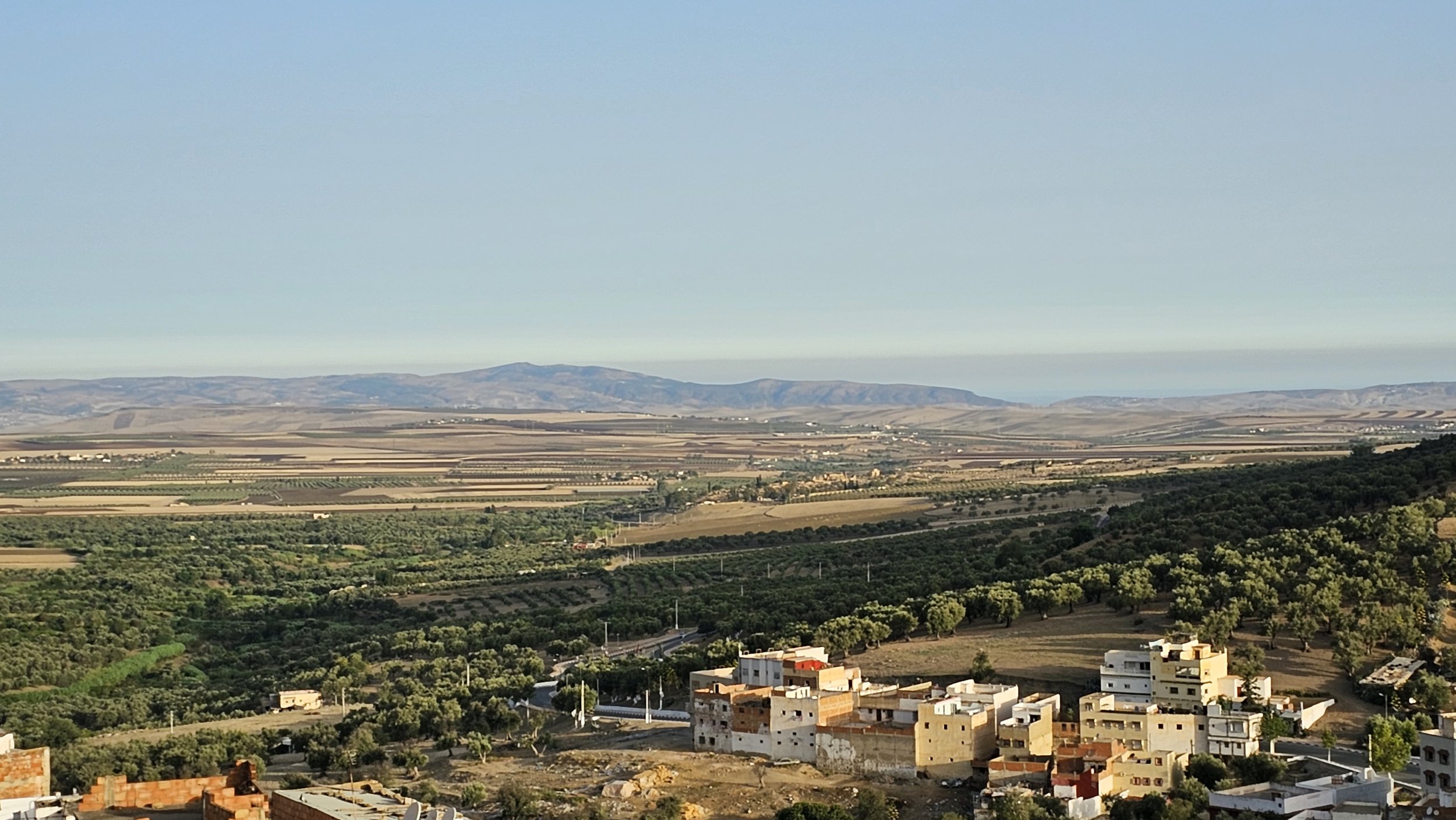








Day 3
In the morning after a hearty breakfast with the family we packed our bags, donkeys took them to the taxis and we went to Volubilis.
Volubilis is an ancient site from Roman times, established in 100 BC, it is over 2000 years old!
When Romans conquered Africa they built cities near the water. When they went inside the countryside they planted olives and established farming. Volubilis was a Roman city where archeological excavations continue to today. It has been declared as the UNESCO World Heritage site! Who would have thought we would come across that in Africa?
With only one third uncovered and excavated there is a lot more work underway and the experts expect to find colosseum, hippodrome and other well known aspects of the Roman cities.
So far, it has taken archeologists 50 years to excavate what we have seen today!
This is what they know today:
Every house had a kitchen, cca 25000 people lived here, Romans left at 4th century due to draught and poor people moved in. It was damaged during Lisbon EQ, military outpost became a city and a big trading center, using river to transport to the Mediterranean Sea with olives exported to Rome.
A few fun facts:
The infinity knot known in the Western world as the love knot that no one can undo, but for the Alexander the Great who cut it through, references to the expression of “ tying a knot “ when people get married.
Aqua duct work was higher than the land level, they used led ( mercury) to clean the water which poisoned many and caused mental illness.
Mad hatters - people who made hats during Victorian times got mad due to mercury used in creating hats.
Dolphins bring good luck and fertility.
Swastika’s origin is Indian, it represents good luck and it’s in the opposite direction to the Nazi one.
Public toilets had marble lids and Romans used slaves to make them warm. People had to pay to use toilets to clean it so it didn’t stink. English expression “spend a penny” originates from these old days.
This was a volcanic place, there were hot springs everywhere and the word “spa” originates from “salute per aqua” - water for health.
Corridor means a city center/ (heart of the city), word Cardiology comes from it - heart is the center of the body.
Forum was a huge open market area - word phobia of open place originates from this word.
We continued our ride to a beautiful city of Meknes. The city is made of two sections
Medina( Arabic term for city) known today as old city walls with maze of narrow streets and a new city developed in the 20th century under French protectorate.
Meknes originates from the 10th century, it was created by Berber / Amazigh tribe and it was a capital city of Morocco.
Squared minarets are visible everywhere and they differ in Morocco compared to other Islamic countries where minarets are round shaped.
1mil people live here, and 60% of Moroccan population live in urban zones today.
The Ministry of religious affairs funds the building mosques supported by people’s donations.
We visited a few tourists points:
Gate - Beb Alhamiz, know is Thursday Gate
Each Thursday there was a market day - weekly market was important for local people. It was considered a commercial and social event to share the news.
This area was under lots of pressure from different powers throughout centuries. On the West it was French, Spain, Portugal mighty powers, in the East side the powerful Ottoman Empire. Moulay Ismail became a well known King who fought hard to push them all away from Morocco. The current Morocco King is the descendant of the King Moulay Ismail, and Morocco is the Constitutional monarchy today.
Jews quarter - Morocco is a popular spiritual destination for Jews” Mellah”
The Jews influence is felt in every regard, but unfortunately from 10% Jews at the end of the 19th century todays presence is under 1%, majority left to Argentina and Chile during the early years of the 20th century.
Dinner stories x 3
We went to a dinner together to a traditional restaurant and three interesting things happened:
1) In our Intrepid group of travelers we have a lovely young couple from USA, Jessica and RJ. We have been travelling together for 3 days, and at the dinner Jessica approached us wanting to share something with us.
We had no clue what she was going to say and she went-" I would like to tell you something and I hope you will be OK." I looked at her, had no clue what she'd say and said - yes please, tell us. She then shared that her grandparents on her father's side are from Serbia & Macedonia who came to the USA in the 1970-ties, and she hoped we would be OK knowing that she has Serbian roots since we are from Croatia, living in NZ! Of course we are OK with that!
Jessica was born in USA in the 1990-ties, she grew up there alongside her grandparents, but her Mum (American) was too scared to openly talk about her roots, she never learnt the language, simply put, her Mum was too fearful during these terrible times. Later on in her adult life Jessica went to Serbia twice with her grandparents, her Dad never went back and she is the only one in the family who is interested in learning more about the Balkans, traditions, food, rituals, music etc. At her wedding two years ago she decided to have some aspects of a traditional Serbian wedding rituals, so so cool!
Here you go, more than 30 years after the war she met two of us on this tour and it took her 3 days to get confidence and courage to approach us since we were from Croatia! I find the story to be a beautiful and sad at the same time, all these years later and people still feel apprehensive. We have exchanged our details and we hope to stay in touch and meet them again somewhere in the former Yugoslavia, NZ or States!
2) We have met two young NZ girls living in Australia. They have been banging their heads for three days trying to figure out how old we are. They didn’t believe we had adult children as apparently we look way too young for that. At the dinner we reveled our age, to their disbelief! They ended up writing food recipes and learning about our nutritional habits and the magic of the good olive oil! So entertaining and fun!
3) The dinner finished with each of having to dance with the owner as we were paying the bills - watch the video to laugh at our expense!
Photo Album Day 3
Volubilis

















Meknes






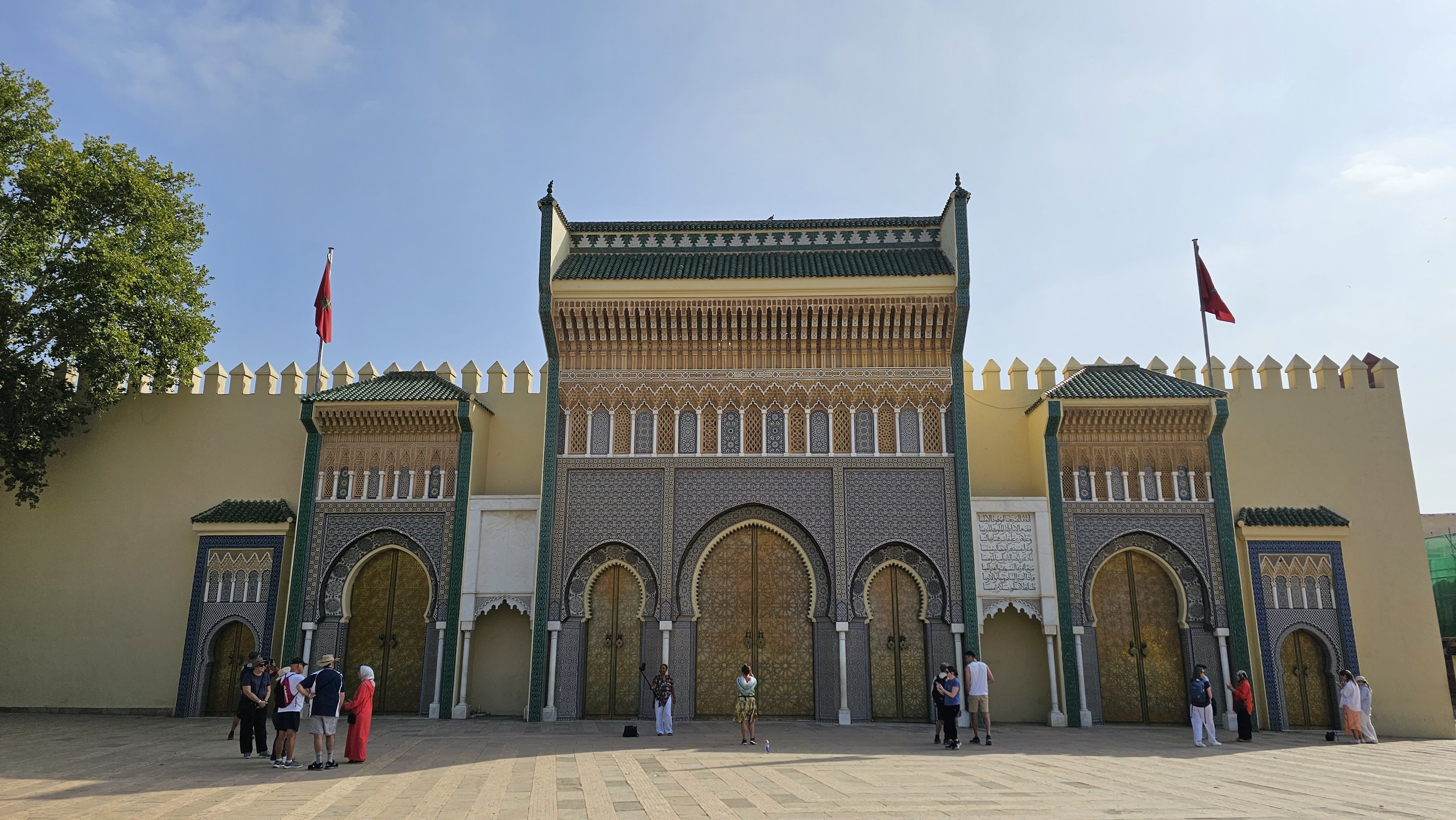


Day 4 - Fes
Medieval city from 14 century with the biggest royal palace in the whole of Morocco.
Old city Medina dates to the 8th century, and the New city was built under the French during colonial times, a common theme through Morocco.
I really really struggled in Fes. I got confronted with inequality and poverty, my tummy got upset and I didn’t eat anything the whole day. I was quiet, felt unwell, uncomfortable and sad.
These people have it so hard, it should not be like this. Our visit to a tannery brought it to life and I have to share it here to make you all aware of what goes on.
A tannery is a place where the animal skins are processed using pigeon waste to soften the skin before it gets treated and used for leather garments, bags, jackets, wallets. People work in open under direct sun and high temperatures with smell I can’t describe. Working conditions are terrible and they get poorly paid to make leather handbags that cost fortune in the Western World and a middle men make all the money. So unfair, it made me sick!
A few interesting facts:
Merhaba means welcome, and people try hard to make you feel welcomed.
Buying anything required bargaining and although we knew that’s what happens, it troubled me. You ask for a price, they say 120 Dirmahs, you say that’s too expensive, they drop to 100, the moment you look away as I am unsure, let me think, the next question is - how much can you pay, we need the money.
We bought a few souvenirs but I simply couldn’t bargain with them, my tummy got upset each time. Maybe I am overly sensitive and naïve but I didn’t like it.
Jews dominated in salt trading for marble in the 14th century. It was a golden time.
Seville bitter oranges are even today used to clean brass doors and olive oil to clean silver.
A star means prosperity and richness, shades of blue are local colours and green is the Islam colour.
The city is dominated by the España Moorish architecture.
Back in a day woman could go out twice in her life - to get married or when she passed away. That changed in 1912 , under French influence / protectorate - not that long ago when you think about it!
Despite this approach to women, the Bride’s Mum decides if gifts are good enough, if not she can stop the wedding. Powerful!
Henna is believed to come from paradise, it’s an antiseptic and is used in Hamman.
Andalusian part of the city was built by people from Granada who were expelled, 8000 families moved to Fes.
Caravan Saray is the city part established by those who were forced to leave Tunisia, 2000 families moved to Fes.
There are three parts to Fes:
Intellectual where the first university teaching Arabic language in the world was built by a lady
Spiritual with 300 mosques
Capital of artisan - handcrafts and pottery
Medina has 10,000 streets, it is the largest and the oldest Medina in Morocco.
3m people live in Fes today.
Pottery is impressive! I wish I could buy lots, but no luggage space whatsoever!
To memorise the holy book takes anywhere between 9-13 years of practicing!
Agava thread is used to make clothes and I have got myself a beautiful blue agave silk scarf, so so nice!
The next day we jumped on a public bus and arrived to the most beautiful blue city called Chefchaouen!
Photo Album Day 4
Fes



























Day 5 & 6
I love Chefchaouen, these blue buildings mixed with white lime walls and original terracotta buildings are stunning!
Love it, love it, love it! So, so, so pretty!
On arrival we settled in the most beautiful hotel designed in a true Arabic style. Our room was so pretty 🤩, Nebojsa felt like a sultan!
Went on a Medina tour and learnt a few things:
Jews quarter was established by the Jews who escaped from Spain, but then moved to Tangier, Argentina and to Chile in the end of the 19th century, cca 10% of population back then were Jews, there are almost none today.
Zoia is a small mosque with no minaret.
In the 16th century a woman ruled this region for 30 years. She is known as The Nobel Lady or Pirates Queen, depends whose history books you read: if it’s Moroccan she is The Nobel Lady who led resistance against Portuguese invasion for 30 years, if it’s Portuguese she is the Pirates Queen who fought and killed many pirates, ie a bad lady!
Experiencing a 45 degrees and high humidity it sounded absolutely impossible to learn that within a 20 mins drive in winter time there is heaps of snow. Our hotel had heaters in each room and in the city stalls you can buy summery dresses and winter coats, gloves, woolen socks! Hard to believe but true! During a winter there are big temperature differences from minus 5 to plus 29 in one day!!!
As the city was established in 1490 by those who escaped Spain its built in the Andalusian style. Initially the houses were built by natural materials, clay and water then they added “nila” ( indigo colour from Pakistan ) and lime to make them blue and white.
Firstly narrow dead end areas were painted blue to indicate it was end of the road. Then they started painting blue areas around windows and doors and a meter high walls. There are so many shades of blue, deep indigo blue with oranges provide the most beautiful contrast I’ve ever seen. I have taken so many photos, will need to buy extra cloud storage space and we are only a month into our travels!
Hats with pom-poms are typical here. The size and colours of pom-poms and women’s aprons tell what tribe they are from and how they wrap apron tells if they are married or not. Love these little quirky traditional facts!
We did an early morning hike and it was great. The mountains surrounding this small city are so high and steep, Nebojsa said it felt we were climbing Kozjak back in Croatia, not knowing that this mountain range belong to European Alps and its separated by the sea. Who would have ever thought that could be possible?! This mountain range is the National Park with over 1300 endemic plants including the black pine tree that only grows in Morocco. There are so many caves and mountain water springs, despite draughts they have never had water shortage issues.
Interestingly, this area of Morocco was also conquered by Vikings so there are many people with ginger hair, pale skin and blue eyes.
They are famous for their Mediterranean diet that’s recently been recognised by UNESCO. I didn’t even know there is such a thing as a diet that is UNESCO recognised. They eat a lot of veggies, fruits, nuts, fish and olive oil and they grow grapes.
Cannabis is the main plant that’s exported and people who drive flash cars are usually involved in its production/ distribution/export. It’s legal to grow it here, and as we hiked we could see cannabis plantations.
In the morning we got picked up by a private bus and drove to Tangier.
Photo Album Day 5 & 6
Chefchaouen












































Day 7
Tangier is Moroccan Hollywood!
I could not believe the difference and contrasts between these cities, it’s like a different planet, unbelievable!
Tangier is a typical Mediterranean city that could be anywhere in the Mediterranean. It is a place where the Mediterranean Sea and the Atlantic Ocean meet. It’s the opposite side of Gibraltar.
A wealthy city where Moroccan King has done lots of investment, such as cars manufacturing to slow down the brain drain. He has also made it very easy for other European businesses to open up here, like Germans, Belgium, French etc, and it is a ferry ride or a plane ride so close to Spain!
We haven’t seen as many top range new cars on the roads in a long time. Registration plates from different European countries.
We stopped by the supermarket to buy food for a picnic lunch, the size and varieties of the food in the supermarket blew us away. Think of it as Kmart and Countdown combined and doubled! You would never think you were in Morocco we visited so far. So so different and it felt and looked like any other luxuries Mediterranean city.
Picnic in the park with amazing sea views felt as we were in Croatia, pine trees smell, nice temperature around 28 degrees after 43 in Chefchaouen felt great!
The first USA ambassador brought eucalyptus trees from Australia here to enjoy the scenery and they have now spread everywhere. So interesting to see them around the city.
Most of the beautiful houses are actually palaces that belong to different kings and presidents around the globe. This is a Monaco of Morocco!
We went to the beach for a swim and we swam in the Atlantic Ocean for the very first time ever! So refreshing and enjoyable with camels walking alongside us, a spectacular view and amazing experience.
We listened to their traditional music and uncovered this great artist Ahmed Alshaiba- a Moroccan performer of cover songs in Arabic tone, google him , his music is amazing 🤩 !
At the end of a great day we went to our bus driver’s sister home for a home made dinner and were treated as royalties. So much beautiful food presented on silver trays, and big serving dishes. As the food was served the hosts left the dining area, it felt strange but that’s their way of doing things we had to respect.
By 11.45pm we were on the overnight train to Marrakech! Another crazy experience where group got divided into girls versus boys as there is no mixing in the sleeping cabins! I slept better than I expected but couldn’t wait to reach the hotel in the morning to have a long cold shower!
Photo Album Day 7
Tangier










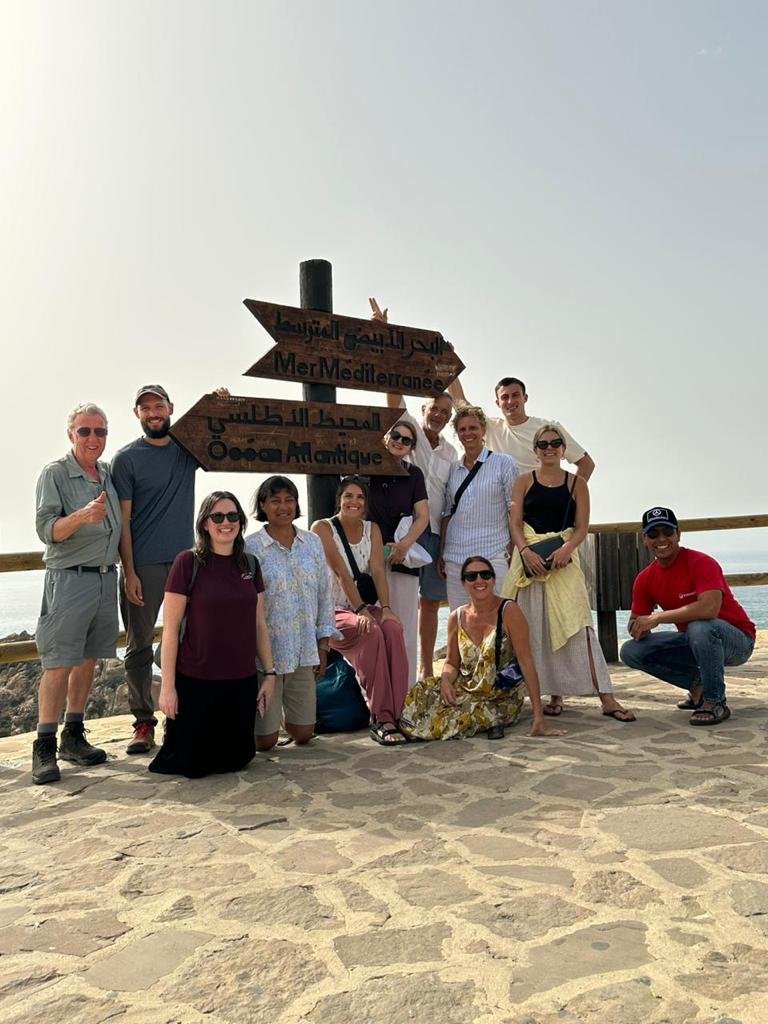



Day 8 & 9
We took it easy today! Nebojsa went to Hammam for a nice scrub and massage, I relaxed in the hotel and we went to wonder around the city on our own. We had a lovely dinner all together and said goodbyes. Some people continue with us, others have left Morocco.
It was our last day with the current group and our great tour guide Hisham and tomorrow evening we join the new group of travel buddies and continue to travel to a different part of Morocco!
Before we depart from Marrakech let me share a few things:
Also known as the Pearl of the South or the Red City, it is the gateway to the delights, dreams and colors of Arab-Berber-Muslim culture. Marrakech, sits proudly facing the largest desert in the world, the Sahara.
First capital of the Kingdom of Morocco, Marrakech is today one of the most visited cities in the country. Between tradition and modernity, it has succeeded in skillfully blending its thousand-year-old history with the cosmopolitan and trendy atmosphere of its new city. If it is well known for the maze of its medina classified as a UNESCO heritage site, it has many other treasures to discover such as monuments of Hispano-Moorish architecture or its green gardens.
We visited a few:
Medina - all roads lead to Medina! You can’t come to any of the Moroccan cities and not wonder the Medina narrow streets, colourful shops that sell everything and anything, with everyone inviting you to come in. Bargaining continues, and with a bit of practice I am feeling a bit better. It’s usually half the price to begin with and then goes up by cca 25%, you do the math’s but that’s a kind of a rule unless the prices are visible.
Taxi ride cost must be agreed before you jump in, there is no meter reader or anything like that. And you bargain again!
Colours of red are everywhere, buildings, carpets, cushions, if Chefchaouen was a blue city, Marrakech is a red city!
I love their colours, brightness and happiness, they try hard to make you feel welcomed, and are grateful for the visit and want us to tell everyone how great it is to be in their Morocco.
We attended a permanent show of the Jemaâ El-Fna square.
This was on Wednesday evening after a group dinner! What a crazy chaos!!!
I don’t know how to describe it but think of it as a big square with thousands of people walking, singing, performing rituals, playing with cobra snakes, monkeys, selling souvenirs, yummy juices (loved them), Tshirts and clothes and who knows what else! Never seen anything like this, and it happens each night, work day or a weekend! We left the square at 11pm and the show was still going on!
In the morning we left a bag of our unnecessary stuff in the hotel, and went on the second part of our Moroccan Tour exploring the nature, mountains and desserts, and the clock starts ticking again.
Photo Album Day 8 & 9
Marrakech





















La Rendición de Andalucía ~ Andalusia's Surrending
I don’t know about you but we have forever had an endless travel wish list!
Spain has finally made it and Andalusia was a deliberate choice!
More than 800 kilometers of coastline, two National Parks and a number of cities such as Seville, Cordoba or Granada, are the great presentation of Andalucía, but this land is much more.
Before we embark onto our next adventure I have decided to write a series of short blogs lumped into one mega blog that covers Andalusia.
Nebojsa has cracked the code, made amazing albums and we hope you’ll enjoy a read over a cup of coffee.
If I was to sum it up I’d say:
Lovely people, slow pace ( heat has to do something with it), amazing food, stunning atmosphere, architecture, history and natural beauty.
Spanish people are proud of their language and many don’t speak English.
Finally, I have never expected to see Islam influence to be so prominent, to see Christianity weaved with Islam and Jews quarters in each town. Muslims have ruled this territory for so long, and as Christianity came they surrendered to protect their citizens and towns. They gave the keys to next rulers and left. There is something sobering and graceful in this, it is hard to explain my emotions but hopefully through the blogs you’ve got to understand the sentiment.
Happy reading!
Muslims handing over the keys of the city
We have forever had an endless travel wish list!
Spain has finally made it and Andalusia was a deliberate choice!
More than 800 kilometers of coastline, two National Parks and a number of cities such as Seville, Cordoba or Granada, are the great presentation of Andalucía, but this land is much more.
Before we embark onto our next adventure I have decided to write a series of short stories lumped into one mega blog that covers Andalusia.
Nebojsa has cracked the code, made amazing albums and we hope you’ll enjoy a read over a cup of coffee.
If I was to sum it up I’d say:
Lovely people, slow pace ( heat has to do something with it), amazing food, stunning atmosphere, architecture, history and natural beauty.
Spanish people are proud of their language and many don’t speak English.
I have never expected to see Islam influence to be so prominent, to see Christianity weaved with Islam and Jews quarters in each town. Muslims have ruled this territory for so long, and as Christianity came they surrendered to protect their citizens and towns. They gave the keys to next rulers and gradually left. There is something sobering and graceful in this, it is hard to explain emotions but hopefully through the blogs you will understand the sentiment.
Happy reading, as we pack bags to the next destination…
-
Stunning! Beautiful! Hot! Calm and peaceful!
Friendly and welcoming locals! Superb food! Free tapas with beer! Location of my dreams - an hour to the stunning beaches in the Mediterranean and an hour drive to Sierra Nevada ski resort! You recon I could live here, yep 👍!
Let’s start with a quick summary of this beautiful small city, walking distance everywhere as long as you are fit to climb steep cobblestone streets in the hot weather! We did it and used every fountain along the way to refresh ourselves, drank over 2 litres of water per day and continued to break new step records each day.
Highlights
La Alhambra, Nasrid Palaces and Generalife Gardens
AlHambra = “the red one” because of the reddish color of the earth used in its construction.
The Alhambra represents the zenith of Arab art, one of the most visited monuments in the world, and certainly the most visited in Spain. It has up to 8000 visitors a day, 2.8 m visitors a year!
The Alhambra is a monumental complex made up of palaces, towers, gardens and aqueducts. It is a medieval fortified city, residence of sultans and kings from the 13th to the 16th century.
The main language was Arabic, Islam was the main religion, between 2-5,000 people lived in the Alhambra city.
It was the last Moorish kingdom. Moors stands for a group of Muslim people from North Africa who ruled Spain from 711 to 1492, 700 long years, the longest period ever!
Moorish = the style of architecture used in Spain between 13th and 16th century relating to the Moors characterised by the horseshoe arch.
Interesting facts:
Granada’s symbol is a pomegranate!
There were 22 Sultans, only 13 didn’t die natural death, poison was very popular tool to gain the power.
Concubine and wives was the way to go. Sultan didn’t know when his wives or concubines will come in. The ladies owned the roster, so no fight among themselves.
Granada was the capital city, perfectly located in a valley, close to a quarry, Mediterranean sea and surrounded by the mountains.
It was a self sufficient city, with its own food production, organic fertilising and harvesting twice a year.
Everything in this city was developed in a sophisticated environment.
It was a powerful economical and political force. Jews and Christians paid Jizya to practice their religion and rituals and lived a peaceful life. Historians largely agree Jizya was the fee for protection provided by the Muslim ruler to non-Muslims, for the exemption from military service for non-Muslims, for the permission to practice a non-Muslim faith with some communal autonomy in a Muslim state, and as material proof of the non-Muslims' submission to the Muslim state and its laws.
Described as a Golden age, using the Silk Road from Middle East to Europe via Malaga as the entrance to the Mediterranean Sea brought the money they used to fund the construction of palaces.
Persians knowledge of maths, chemistry, physics and medicine enabled them to build these palaces with such a precision and symmetry, you wouldn’t believe it!
A quarry nearby provided materials, wooden frames used to build constructions, filled with red clay and tick walls, wooden sticks used as scaffolding, later filled with earth. Lime (calcium phosphate) made them look white to protect the citizens from the heat and insects. Stones used from 4 rivers around the area added the richness to the facades.
Although walls were originally white (lime) over the years became red due to the impact oxygen had on red clay. These buildings today look pink. Tradition continues to current days, Spanish people use lime in spring to keep their houses white. Before we knew this fact we thought for a minute they washed houses just for us! 😉
At the entrance to the Palace there is a Hand symbol, white symbol of protection ( Hand of Fatima), with each finger representing one of the Five Pillars of Islam.
Sour oranges were planted to decorate gardens and courtyards in the city to smell beautifully. They taste bitter and sour. Spanish people don’t use them, instead they export them to UK, so that English people can make the famous English breakfast Marmalade.
It can be 46 degrees in summer here!
Water Pools in the palaces were used as air conditioning and to show off, representing the power of the Sultan.
Small windows on the palace protected the intimacy, while courtyards and gardens with pools were used for gathering, relaxing and entertainment.
Throughout the palace walls are covered with poems, verses and stories from Quran celebrating the power of God. I have never seen anything like this, it leaves you speechless when you understand the story and you see the artisans masterpieces, 80% handmade.
Mundeha was a period of the peaceful coexistence between Christian’s and Muslims that lasted 7 years, then Spanish Inquisition came and Muslims had to leave or convert.
The history narratives indicate Muslims were seduced to believe in co-life, while Jews were sent away straightaway, many left to todays Netherlands.
Muslims were allowed to stay but had to publicly eat in open place, follow the rules, that contradicted with what they were promised.
Uprising happened as they refused to convert to Catholicism, but then eventually surrendered for the greater good of their citizens.
A total of 22 emirs and sultans reigned in the Alhambra until the arrival of the Catholic Monarchs in 1492. In 1492 the last Islamic ruler left.
After it was abandoned poor people moved in and lived in the complex with no appreciation to the place. It suffered fires and some destruction but today it is beautifully restored, we wouldn’t know any better, but for the wooden ceilings instead of glass mosaics from the original times.
After visiting this magnificent complex and an absolute must do when in Granada I ask myself - is our civilization really moving forward on a liner partway? The knowledge and skill of people from these old times continue to fascinate me. I believe we have to give our predecessors more credit and respect for their inventions and smarts that leave us speechless even today!
Flamingo show
You can’t come here and not go to one of the shows!
With the help from the locals we picked an authentic flamingo show!
We went up the hill again and in the hurry to enter one of the Sacromonte caves that have been home to gypsies, bohemians and Flemish artists for centuries.
The show took place in the actual cave, spectacular!
The passion, the energy, body movement, rhythm, facial expressions and their feet mastery are phenomenal!
I’d say if this is not erotical I don’t know what is! So so special, bursting with emotions and incredible 75 mins went in a heartbeat!
Videos are worth watching, trust me!
-
There’s no city in the world quite like Córdoba.
Cordoba is mixed and different!
Córdoba’s past is so turbulent due to its geo strategically important location. Despite careful listening and questioning I wouldn’t do it justice to retell the full story without the help of Wikipedia.
Instead of citing Wikipedia I would rather share my observations, impressions and a bit of learnings I do remember.
Let’s’ go!
Situated in the south of Spain, Córdoba has all the charm of a muggy summer town.
330,000 people live here, different religions lived peacefully here for centuries, remember this fact as I explain more!
It was 36 degrees today, but thanks to tall white houses there is shade everywhere, so it is actually ok!
The hottest city in Spain, where it’s legally forbidden to work in the afternoon if you work in open. We witnessed this rule in real life! After a long guided morning tour we went back to the hotel to refresh and returned to the old town to wonder around, well pretty much everything was closed. The only busy area was children’s playground with families enjoying picnics on the grass at 10.30 pm!
Cordoba is famous for its Patio flowers competition. This historical event was the reason the town wasn’t destroyed during the Franco era. The colorful baskets of flowers hang from hooks on whitewashed walls outside homes and businesses. It’s most beautiful in May when flowers are in full blossom, today we have enjoyed colourful geraniums.
It’s easy to get lost in the narrow roads, cars hardly fit through and the houses boast beautifully decorated patios. If you were to build a house in Cordoba today, you would be required by law to arrange for an excavation to determine if there were any historical archeological ruins on your site and you would need to build a house with a patio ( inner garden).
All the houses are white with bright yellow and baby blue fringes as if the whole city had a color scheme.
Strolling through the streets of Córdoba in July, I could have easily surrendered myself to the city’s ambiance alone. However, I wouldn’t be able to truly understand Córdoba without knowing its history.
History in a few paragraphs:
Córdoba is situated in the south of Spain, also called the Andalucia region, it was a part of the Roman Empire, and the last Roman colony.
Andalucia was conquered by the nomadic Visigoths from northern Europe during the Dark Ages.
The Moors soon took over, spreading Islam and building lavish mosques throughout the region.
After a brief period of Jewish rule, the Reconquista of the 13th century converted Spain to Christianity.
The Andalucia region was one of the last strongholds of the Moors ( Granada surrendered last) before Catholicism reigned.
The Reconquista is the historical term used to describe the military campaigns that Christian kingdoms waged against the Moors from the 8th century until 1492, in order to retake —or reconquer— the Iberian territories which were lost due to the Umayyad conquest of Hispania ( Muslim conquest of Hispania between 710-780).
From these religious upheavals came the Córdoba of today: a blend of Christianity and Islam —much like how Istanbul serves as the crossroads for the world’s three major religions (Christianity, Islam and Judaism). As we continue to travel we are connecting history dots, it’s very cool!
Cordoba is the only place in the world with 4 UNESCO World Heritage sites:
• The Mezquita, Mosque-Cathedral of Cordoba
• Gardens of the Alcázar de los Reyes Cristianos
• Archaeological Site of Medina Azahara
• Courtyard - Patios with flowers, there are 100 in Cordoba, 3 in Madrid!
During the train ride from Granada to Cordoba all we could see were olive trees. UNESCO is currently considering whether to declare this land area as another world heritage site.
St Raphael - the name means “God heals”. It is believed that in 1578, the Archangel San Raphael (St. Raphael) appeared to Father Roelas and swore that he would protect the city and its inhabitants, and he did!
15% population are called Raphael, including our tour guide!
Two interesting facts about our tour today:
Our tour guide Raphael was born and raised in Cordoba. He studied Humanities and Art degree and later Tourism. His graduation theses at the Tourism University was about Croatia!
One couple was from Israel. The gentleman’s father came to Israel from Ex Yugoslavia after the Second World War!
Wherever we go we find connections to our roots!
Seneca, the most important philosopher was born in Cordoba.
Columbus lived in Cordoba for a few years. It was in Cordoba that he was sent to explore and find new territories for Spain kingdom to continue expansion and to bring back gold.
Orange trees, bitter and sour are planted across the city because when they bloom they smell beautifully and their shade is better.
Sweet orange trees are planted in the fields, smell and shade are not important.
Oranges are harvested in winter to help us get vitamin C to fight cold - nature is wise!
Sour orange have two leaves ( small one first, the large one second) .
Within one square meter in the Cordoba Sinagoga we can find Hebrew writing, Arabic writing and a cross - this is what symbolizes Cordoba - coexistence of different cultures and religions.
Writing a blog about Cordoba and not telling you a bit about the Mosque Cathedral in Cordoba, the Mezquita would be a sin!
I have never ever seen anything like this, and I know you’ve heard me say this before.
What do I mean by this:
After seeing Istanbul, Sarajevo and Granada I recognized arches with geometric patterns instead of religious figures and the wide open spaces between them, classic to Islamic architecture.
There is mihrab, a traditional Islamic prayer room in rich gold. Everything pointed to the Mezquita being a mosque.
Half an hour of exploring later, I was surprised to come face-to-face with a grand Christian chapel.
Each section was unique from the rest, and each seemed to embody Christian architecture, Islamic architecture or a blend of both.
The architectural styles conflicted with each other but coincided at the same time.
Some parts are distinctly Islamic, others distinctly Christian.
Christian tower was built around the minaret, the only place in the world you can see something like this.
This is the only mosque left and preserved in Spain, built over different stages using recycling materials.
It experienced 4 expansions during Muslim rulers, and further expansions under Christian rulers, each leaving their own stamp of importance.
The world’s largest religions were supporting each other instead of tearing each other down. There would be no baroque ceiling without the support of the red and white arches below. The mosque provided the foundation, the church made the Mezquita unique.
Córdoba is comfortable with its roots and embraces all that has made it unique. While Spain is predominantly Catholic, Córdoba knows that its Islamic influence has shaped the city today.
Still, nothing is perfect. While technically labeled as a Mosque-Cathedral Monument Complex, Muslims are not allowed to pray in the Mezquita today.
At one point, Visigothic Christians and Muslims split the building as a place of prayer, but modern religious wars have made this impossible.
It makes me wonder: Have we, in recent years, ruined something that used to work?
It was certainly possible for both groups to pray at the same site before. The architects of the Mezquita embraced the idea. Why is everything distinct and divided now?
The original intent, however, shouldn’t be lost on us. Places like Córdoba and the Mezquita — while not flawless in modern times — still exist.
The world is a melting pot of cultures, but religious tolerance has a long way to go.
Deep inside me lies a hope that, if Córdoba managed to house two different religions under the same building hundreds of years ago, if Sarajevo was a happy place with three religions coexisting during my upbringing, we can do it now too. The choice is ours!
-
Everywhere we went over the years we would normally say we wouldn’t come back, only because we are curious to explore what else is to see and experience, until now!
Seville is beautiful, beautiful and more beautiful. Can you imagine waking around the Plaza de Espania crying, yes crying out of the majestic beauty around me🥹
As we are wondering around the city there is no moment in a day that we are not taking photos. Everywhere you look you see another beautiful building, park, promenade covered with white sheets to protect us from the sun and heat, beautiful artisan shops, restaurants and cafes with water spraying to cool us off, fountains, monuments and more historical points of interest.
I don’t know how many days is enough to fully surrender yourselves in this beauty, but I know we would love to come back, and if the stars align it will be in April or May to experience a different season and smell oranges blossom. We are thankful to those who planted these bitter orange trees, their strong shade saved us this time!
Highlights
Seville, ancient Hispalis, is the capital of the province of Sevilla in the Andalusia (autonomous community).
Sevilla lies on the bank of the Guadalquivir River, 87 km north of the Atlantic Ocean.
An inland port, it is the chief city of Andalusia and the fourth largest in Spain.
Sevilla was important in history as a cultural centre, as a capital of Muslim Spain, and as a centre for Spanish exploration of the New World.
Seville is the birthplace of flamenco and bullfighting. More in both later on.
The town is world-famous for its enticing mix of Moorish, Christian and Jewish architecture and history, as well as some of the most delicious tapas found in southern Spain.
The oldest tobacco factory in the world was built in Seville in 1760, today the same building is Seville university.
An interesting story about this tobacco factory:
Tobacco initially arrived from Cuba, Spanish colony. Only men were able to work in tobacco factory, 700 men walked 5km each day to Seville port, brought tobacco bags to the factory, made cigarillos not to smoke, but to chew.
In the 19th century 500 men were fired and 6000 women employed to roll tobacco and make rolled cigarettes, on Napoleon’s request. Why women? Because they had smaller hands, delicate fingers and could beautifully roll cigars so men can smoke them, and no longer chew. Women worked for 14 hours a day, fully exploited.
Gypsy Roman women from Tirana were called “cigaretta “, and became the first feminist group who organised riots, requested a kindergarten and a chapel to pray while at work. After years of discrimination in 1920, 6000 women circled the building, other women came to help, at the end there were 25,000 women who held the factory under siege, no one was able to enter, until they got their requests addressed. Enough is enough!
The most famous employee was Carmen, known from the opera Carmen. She was known for the fact that she could roll the cigars between her thighs.
Over the years, the building was abandoned and in 1949 became the university.
Plaza de España
Interestingly we started our tour at this site, the youngest historical landmark.
Its construction began in 1914 with the aim of serving as the central area for the Ibero-American Exposition of 1929.
It is the most monumental work of the brilliant architect Aníbal González. Built in a style reminiscent of the Renaissance and Baroque, symbolizing the embrace of Spain to the Ibero-American.
It is difficult to point one thing but the 50 benches, each one dedicated to a Spanish province, with ceramic representations of its territory on the ground and a relevant historical scene alluding to it on the wall left me speechless 😶
I cannot believe this plaza was used as a car park from 1930 to 1968, thank goodness someone was wise enough to get rid of the cars and made it to be what it is today, officially the most beautiful square/plaza in the world!
Alfonso Hotel( named after the king)
It is a luxury accommodation, with 126 original rooms where Spanish King resides when visiting Seville and all famous football (soccer) clubs!
3800€ for the most expensive room per day at any season!
We wanted to pop in for a coffee but haven’t had the time!
The Golden Tower
I love this story and have to share it😎
The Golden Tower is known as the Muslim tower.
As we know this area was under Muslim domination between the 8th and 13th century.
The tower was built in the 13th century when the Muslim Sultan already knew they were going to get conquered by the Catholic Kings. They ordered to build it to protect the city and its citizens. They also built a “Bridge of boats” from Triana to Ishbiliyah ( Arabic name for Seville), connecting two parts of the city and acting as a link for trades.
In 1247 Ferdinand the 3rd Christian King conquered the city after one year of battles.
After destroying the Bridge of Boats in 1248 Muslims gave the key of the city to Ferdinand. Interestingly, it took 10 years to conquer Granada! There is a beautiful painting in the Cathedral that illustrates this historical moment.
And the history repeats itself, they lived together till the 15th century when inquisition started at the market of Triana.
Jews and Muslims ran away from Seville.
Glorieta Curro Romero
Bull fighting is the most controversial topic in todays Spain!
This is the second oldest bull arena in Spain with 11500 seats. Today there are 3 stages of the fight:
1. Dance with a red mantilla to confuse a bull with its movements and it lasts 30 mins
2. Stage of luck - the luck of sword and mantilla lasts 30 mins - this is the period when a fighter can get help if he needs it
3. Stage of death - people are in a complete silence out of respect, no moving, no speech, total silence. A bull fighter keeps a sword inside his mantilla. Sword is used to kill a bull, it must be a clean kill with no suffering!
If a bull is strong to fight back in the second stage it can be forgiven. Between 1881 to 2023 only 10 bulls were forgiven !
Bull fighter gets two ears as his award and a tale is used in cooking with a bull tale stew available in restaurants. Skin is used for leather manufacturing.
Curro Romero is known as the best bull fighter in Spanish history but he was known to be very afraid during the stage of death but with a black magic help from Triana he continued to successfully kill bulls for years.
I didn’t like any of this and wanted to understand where has this tradition come from. Here is what I’ve learnt:
In the 15th century animal Aurochs ( Uro) was used for entertainment, only dance, no killing. People would sacrifice a different animal to feed families, like a chicken or a goat.
In the 18th century Uro became a rare animal, a bull looked similar and replaced Uro.
Nobel families used it for dance and introduced killing for two reasons:
1. Rather than sacrificing another animal they sacrificed a bull because it was more aggressive than uro?!
2. After killing a bull Nobel families gave the meet to poor/ normal people as a feed. Killing a bull became a Nobel thing to do in order to feed poor citizens!
And, if a Nobel family had a son he would often be a bull fighter who after killing a bull would receive a Nobel title at the age of 16/17 so young and so important!
Conservative Party today wants to keep the bull fighting tradition live and are introducing compulsory education at schools about it, as well as flamenco.
Young generations are against bull fighting and want the tradition to stop.
In Portugal there is no killing, just dance, in Mexico there are the biggest bull fighting arenas in the world.
My guess - bullfighting will continue to exist.
Cathedral & Alcazar ( similar to Alhambra but smaller )
Seville Cathedral is the biggest Gothic cathedral in the world. The story repeats itself, it was an ancient mosque but when Christians conquered Vatican asked them to use the mosque but use a different orientation to look to Vatican not Mecca. During a few earthquakes the mosque was damaged. Vatican gave cash to build a cathedral temple instead.
For 150€ you can have a wedding at the royal chapel but you need to wait 5 years! After Sergio Ramos football player had his wedding here the waiting list has doubled!
Tomb of Christopher Columbo can be seen in the Cathedral with a bit of a mysterious story behind it. It is believed that his ashes are spread across the last Spanish colonies, Cuba, Portorico and Filippine. However, 175gr of Columbus body ashes are buried in Seville with a massive monument built around his tomb.
Cathedral Tower was a minaret back then, it is 104 meters high, and guess what?!
Ramps are used instead of stairs so that muezzin, the official who proclaims the call to prayer five times a day, at dawn, noon, midafternoon, sunset, and nightfall didn’t need to climb the stairs. Ramps were made to make it easier to climb, so clever!
Triumph square
Celebrates the Victory of Christianity over nature ( EQ of Lisbon ). The only area destroyed was a royal chapel, and only 9 people died in earthquake who were in the chapel at the time. This is considered a miracle compared to thousands of people who died in Portugal.
Flamenco
We decided to see another Flamenco show in Seville, performed in one of the local theatres in the old town.
The show was okish, nowhere near as good as the one in Granada. This was a perfect example of producing a show for tourists on mass. It lacked emotion, passion and engagement with the audience. There was no introduction to the show, a few sentences to explain its origin and meaning, simply nothing.
Flamenco is an art form based on the various folkloric music traditions of southern Spain, developed within the Gypsies subculture of the region of Andalusia who have contributed to its origination and professionalization. It is focused on evoking and communicating passion, love, sadness, despair, joy, and more. We saw all of this in Granada and noting in Seville!
Flamenco has recently been recognised as the UNESCO Intangible Cultural Heritage.
Living on the budget!
It’s a very different experience when you travel for a long period, change destinations every few days, knowing that the money put aside for a long trip has to last to the end!
I am the Finance Minister and Nebojsa is the excel spreadsheet mastermind! Every few days we have to reconcile numbers and that is lots of fun, not! Just kidding, we argue and we laugh💰
So far we are tracking within the budget, but I am glad we left Seville as shopping paradise started to bite us😉🛍️
-
Malaga is a great destination for one off day trips around southern Spain. We took the opportunity to visit Gibraltar!
The second tour we wanted to do was cancelled due to hot weather, it’s on the “ next trip list”. Instead we have enjoyed a beach day, quiet and relaxing for a change!
Highlights
Gibraltar is a straight between Europe and Africa and the closest point is only 14km distance between the two continents!
Super cool!
There are two families of orcas living in the straight, they love red tuna, but don’t like yachts or cruisers! Tuna size are enormous, a 600kg tuna is just a normal thing here! The orcas are attacking yachts as they enter the straight, an interesting development that marine experts are researching as it is a relatively new thing!
The Rock is 426m above sea level and it is an entrance to the Mediterranean Sea, on one side is the Northern Atlantic Ocean and on the other is beautiful Mediterranean Sea.
Initially established by Tarik, a Muslim in 711 who built a castle in Gibraltar and gave the straight its current name.
In 1492 Christians took over. It was under Spanish rule, until yet another war and in 1713 became the sovereign UK country.
George Rooke was the first governor of Gibraltar in 1713, a powerful army man.
It was an important strategic base for the two world wars.
Today there are 30,000 habitants, English is the official language but people predominantly speak Spanish, or better say Spanglish!
It was an interesting experience crossing the border today! Since Great Britain is no longer in the EU there were two lines at customs - EU passports and All passports. Since we have both we took a faster lane and entered GB on Croatian ID. It felt this is a border just for the sake of it, but we still had to cross over. Weird feeling.
There are five monkey colonies living in Gibraltar and they are very, very important.
There is a story that says Spanish tried to re-seize Gibraltar under the ruling of the Great 6th, but monkeys felt something was going on and woke up people to defend it and keep under GB sovereignty. As long as monkeys are in Gibraltar it will stay under GB!
Shopping deals were great but not any more, taxes are now introduced, people mostly buy jewellery, tobacco and whisky.
It is a massive port with tens of cargo ships and many beautiful private yachts.
A little town just before the border is called “ La Linea- The Line “. It got the name from old days when it was a physical line separating Spain from UK.
There is not much land to build anything in Gibraltar. A few years ago they brought a massive cruiser boat and converted it into a permanent hotel docked in the port with a big casino that’s very busy all the time!
There are many man made caves in the Rock with galleries, and there are a few local beaches around.
Unless you are interested in shopping you’ll quickly see it all. Luckily we booked the Rock Tour. The tour guide was so passionate, it was so much fun.
We were lucky with the weather too, it wasn’t too hot, little bit foggy, we could clearly see Morocco mountains. It is an incredible feeling leaning on the fence, behind me Africa and Europe and I can see a line in the water! Super special experience! It reminded me of Cape Rēinga.
There is a Big Ben here, a tiny brother that sounds like a text message 😂
There is a suburb called Little Monaco with very simple houses but very expensive, remember you are waking up with a view of Africa!
Government desalinates sea water and each house have 2 set of pipes - fresh for consumption and salted water for cleaning, washing and toilets.
There are no rivers here, waterfalls are artificial, and yet everyone rushed to take a photo of a man made waterfall 😇.
A new mosque recently built was a present from Saudi Arabia, there are 1000 Muslims living here, and there are 21 religions, with Anglican,Catholic,Jews and Muslim being the top four. They have and continue to live in piece and harmony. I guess it is easier to control such a small area…
St Michael cave trip was nice. It is located inside a natural reserve called “An upper Rock” to protect monkeys. I have never seen a natural cave with a light show and music to enhance the experience. It felt to me like a man made intervention into something beautiful by nature, but Nebojsa was impressed so here you go, different people different perspective!
There are more tunnels than roads here, and they are so narrow. Rocks from tunnels were used to build artificial new part of city.
It is so expensive to eat here, two thin pancakes and a coffee $30!
I am glad we visited Gibraltar and with a bit of luck rather than careful planning saw what interested us. Nature, cave, monkeys, views, Morocco mountains, Africa continent and history!
Granada Photo Album






































Cordoba Photo Album







































Seville Photo Album











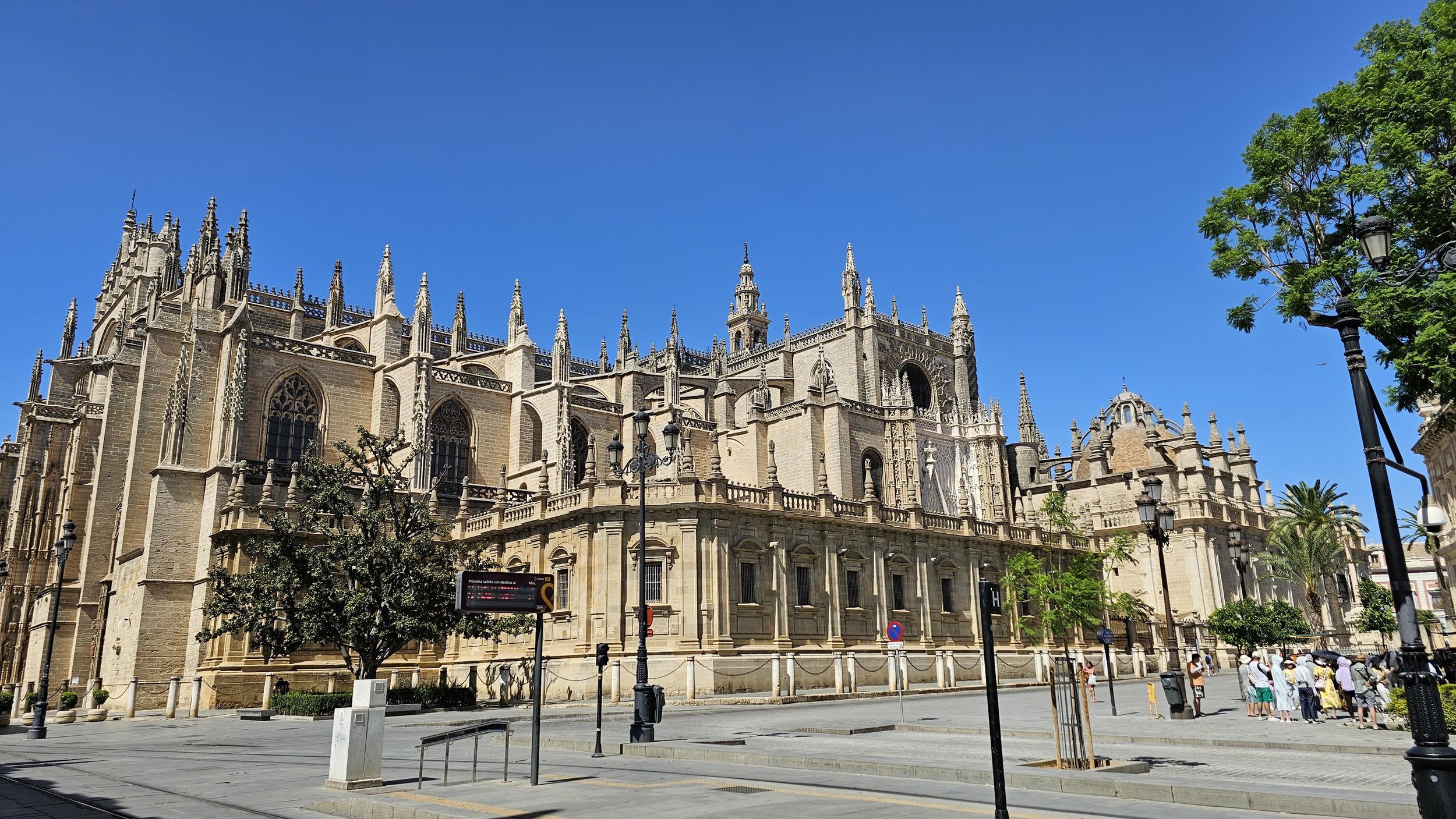

























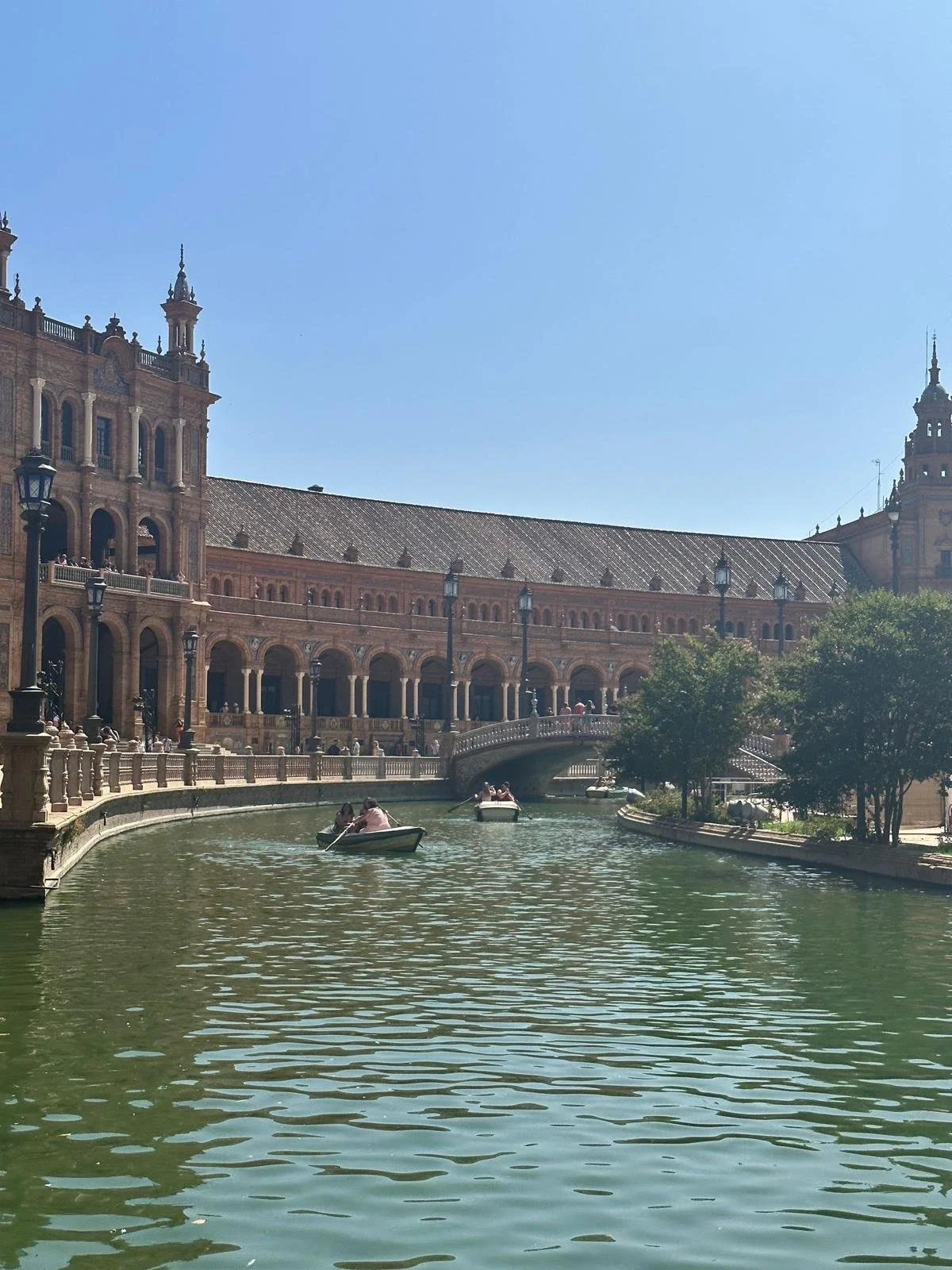
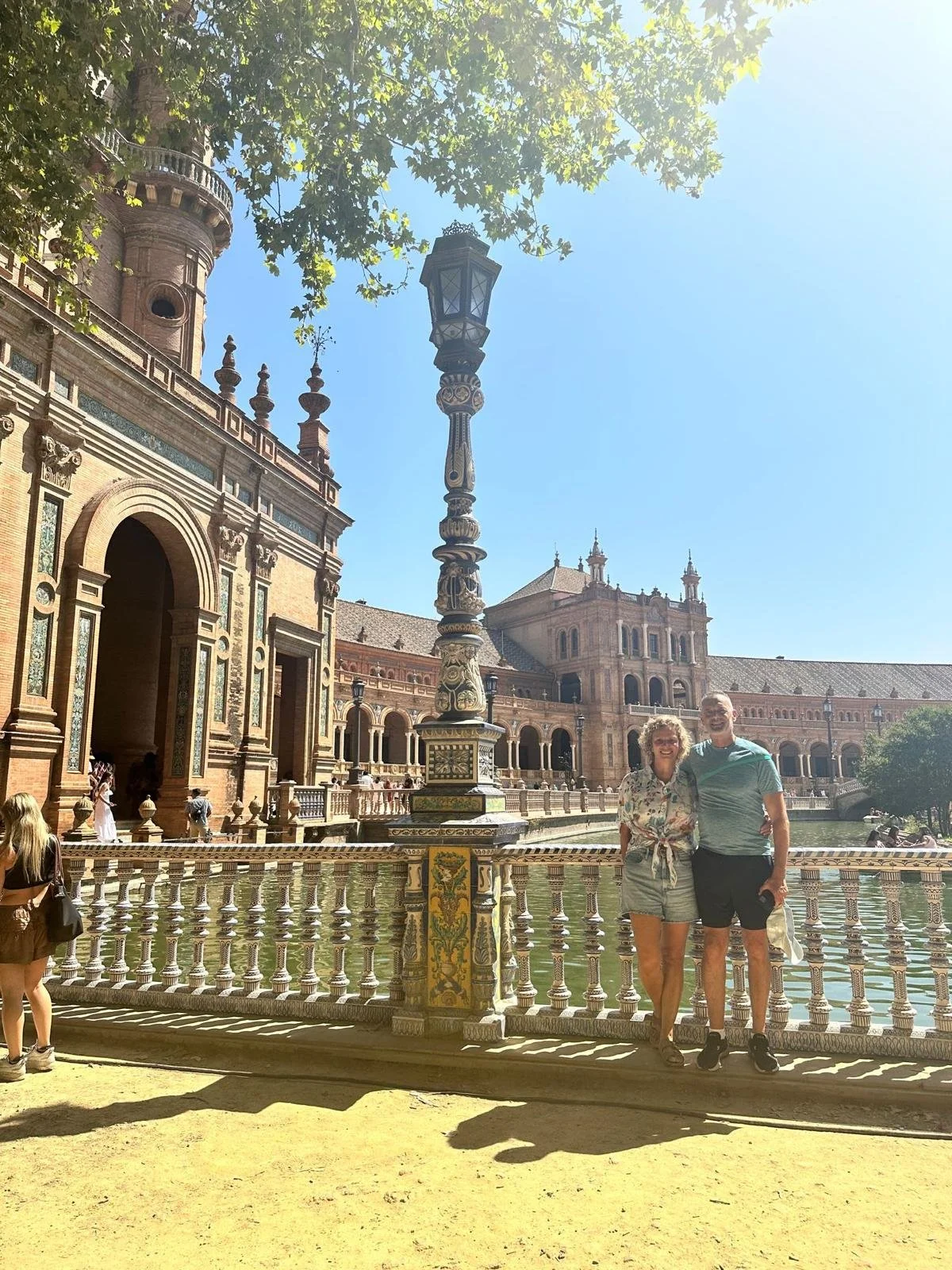








Malaga/Gibraltar Photo Album
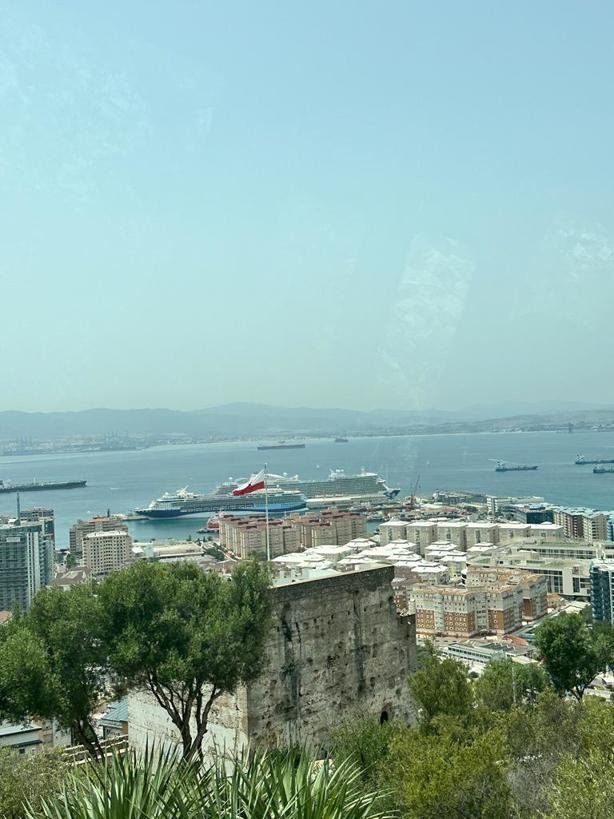



















Food Photo Album
















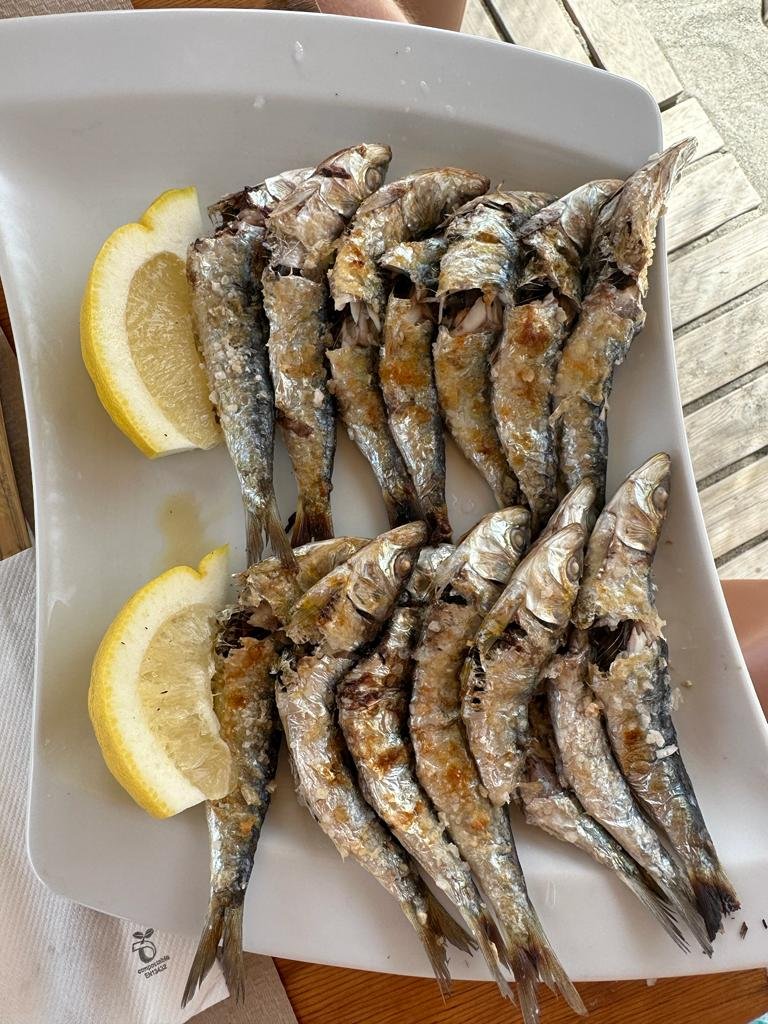








Hola desde Barcelona! ~ Hello from Barcelona!
The next lot of our adventures has started!
When you get two active tourists together and they want to maximise their time at any location you get a combo of planning in advance, deciding on the spot and walking on average +20km a day! Your feet burn and your head is about to explode 🤯 but you feel amazing, fulfilled and exhausted, all at once!
The next lot of our adventures has started!
When you get two active tourists together and they want to maximise their time at any location you get a combo of planning in advance, deciding on the spot and walking on average +20km a day! Your feet burn and your head is about to explode 🤯 but you feel amazing, fulfilled and exhausted, all at once!
Barcelona in two days!
I would say it feels as it is overcrowded by tourists, you can see many graffiti “f..c of tourists”! To be honest, I don’t blame them!
At times, it reminded us of Rio De Janeiro during the carnival weeks full of tourists, hot weather and urine smell. An interesting combination!
Metro amazed us, with a two days pass we could see so much with ease.
We have learnt the city is particularly renowned for the architectural works of Antoni Gaudi which have been designated UNESCO World Heritage Sites.
We planned our stay around history, culture and fun!
A bit of history and culture:
The capital and largest city of the autonomous community of Catalonia as well as the second most populous municipality of Spain.
Barcelona has a rich history and cultural heritage. Founded by Romans, today it consists of 10 districts with 1.6m people.
The city developed around three neighbourhoods:
El Raval - created in Roman times where criminals and prostitutes lived, today the most vibrant area
Barri Gothic - where nobles lived built in Medieval times, today the historical old town area
El Born - craftsman district, still the same today, my favourite!
Fun fact:
Municipal buildings were built in the Barri Gothic square that allowed nobles to be separated but very close to El Raval, an easy access to crime, drugs and prostitution. You do the maths!
Who was Antoni Gaudi?
Another Mr “G” was a Catalan architect and designer known as the greatest exponent of Catalan Modernism.
Gaudí's work was influenced by his passions in life: architecture, nature, and religion.
Gaudí had a deep appreciation for his native land and a great pride in his Mediterranean heritage for his art. He believed Mediterranean people to be endowed with creativity, originality and an innate sense for art and design.
When handing him his degree, the director of Barcelona Architecture School, said: "We have given this academic title either to a fool or a genius. Time will show."
Well, the time has shown he was a true genius!
We have chosen to see a number of his masterpieces. I’d say he was very quirky, in love with nature and religion.
The Basílica i Temple Expiatori de la Sagrada Família
It is the largest unfinished Catholic church in the world.
Designed by architect Antoni Gaudi (1852–1926), his work on Sagrada Família is part of UNESCO World Heritage Sites.
The construction started in 1882, and Gaudi took over as chief architect in 1883. Gaudí devoted the remainder of his life to the project, and he is buried in the church's crypt. At the time of his death in 1926, less than a quarter of the project was complete.
Relying solely on private donations, the Sagrada Família's construction continued, got interrupted twice - during the Spanish Civil War and Covid.
It is estimated that the construction will be completed by 2032, although locals say it should never get finished as that will be the end of the world!
It is the only church in the world that has three facades (birth, crucifixion and resurrection of Jesus) , it is devoted to the life of Jesus Christ. The exterior narrates the story of his life and interior celebrates the space and is an ode to light.
This masterpiece was Gaudi’s last work. He was hit by a local tram at Passeig de Gracia and subsequently died in the hospital being confused to be a homeless person due to his attire.
My initial impressions were mixed. From the outside it looks huge, unfinished and a combination of so many different styles, like kitsch. It’s only when you get to learn the story behind it and you go in on a guided tour that you get to understand and appreciate it.
Definitely worth a visit and with an audio tour guide to learn about the years of work by different architects who built upon the Gaudi’s visions and continue to do so.
Park Guell
Another UNESCO World Heritage Site of Antoni Gaudi.
While the Sagrada Familia church embodied Gaudi’s passion for religion, Park Guell reflects his passion for nature.
Built in the actual native park it bursts with mosaics expressing Gaudi’s love for nature and is designed to bring the peace and calm that one would expect from a park, if it wasn’t for hundreds of tourists!
Really nice and I am glad we managed to squeeze it in!
Gaudi’s Modernism masterpieces:
A number of buildings designed by Gaudi at request of different wealthy families who used his talents to show off their luxuries!
Casa Mila built in 1912 and designed by Gaudí who was inspired by the sea ( check out balcony waves). It took six years to built it and he never finished it, carved directly from the ground. It is his last private works.
Renting an apartment of 205m2 in this building costs only 400€ a month. A fixed rent on a life time contract that passes from generation to generations, cheap today but not back then!
Casa Batllo, a textile industrialist, built in 1906 and designed by Gaudi, who was inspired by the guardian of Barcelona, Sant Jordi (St George). The legend says he drove his lance into the dragon and a bush of red roses sprang out of the blood that spilled. His bold and selfless gesture changed the course of the town's history and gave birth to this legend. Ever since it has been the custom in Catalonia to give your loved one a rose.
Check the balcony design and you’ll see the bones of the dragons victims.
The building was sold three times, today it’s owned by the Chupa Chops Coy.
Casa Amattler, a chocolate industrialist with links to Argentina. The combination of colours and materials makes this building stand out even today.
That ends our explication of Mr “G” masterpieces, simply amazing!
A trip to Monserrat = Serrated Mountain
We took a half day bus tour to this sacred place and the National Park.
It is a multi peak mountain range near Barcelona, 1236m above sea level, the highest point is St Jeroni.
It appeared 25m years ago due to tectonic movements raising up from the depths of the sea.
The mountain is composed of pink conglomerate, a form of sedimentary rock, with lots of rare bird life enjoying the clean and green areas. It’s wonderful for hiking and peak mountain climbing due to its unique curves and smooth surfaces.
The Monastery of Montserrat at the footsteps of the mountain peaks and it houses the virgin that gives its name to the monastery and is on the mountain, although it is also known as La Moreneta ("the little tan/dark one" in Catalan.
The story says back in 880 Black Madonna was found in a cave by a shepherd who heard angelic sound noises. Bishop ordered to take her down to the sea level but with every step forward it became heavier and heavier. Shepherds convinced the Bishop it was the God’s message the Black Madonna wanted to stay in the mountains!
It is the only black Madonna in the world.
Why black?
Two theories:
It changed its colour due to the candles smoke or they simply coloured her black! You decide 💨😉
There are between 70-80 monks living in the Monastery at any one time, all incredibly musically talented, with the largest collection of music going back to 1400.
We enjoyed the trip and a half day was good amount of time to explore on your own.
Warning - thieves are present at the most sacred places! Nebojsa left his drinking bottle in the basilica for a couple of minutes, by the time he went back it was gone! And security is everywhere, but no lost property section. 😕
If you have ever visited Ostrog Monastery in Montenegro, then Monserrat might look familiar. Definitely gets a tick from us!
Jews quarter
As expected, the Jews quarter existed in Barcelona.
During the black plague terrible times it became obvious Jews had a much higher survival rate. Catholics became intrigued why that was and the history narratives point to two facts:
They lived in a ghetto therefore were simply more protected
They had better hygiene habits
Unfortunately, Jews were used as ones to blame for black plaque death tolls, became a blame victim which resulted in terrible destinies for hundreds of Jews families who got killed unless they couldn’t escape. There is a massive Jews cemetery in the outskirts of Barcelona, we saw it on our way to Monserrat. This is noted as terribly sad times of the Spanish history.
WARNING: Fun part - R 18+!!!
I have left this one for last to make you learn something first🤗
We visited the Erotica Museum, one of its kind in the world!
So much fun, and even though you may think at our age we should know it all, let me tell you we learnt a lot!
It offers an extensive historical and cultural record of the influence of eroticism in mankind from the beginning of time.
14 rooms of explicit paintings, photos, inventions and sculptures that illustrate how sexuality has been a source of inspiration throughout history.
My take on it - they had way more fun than modern humankind obsessed with the look and on line presence. I’d swap today for Greek era any day!
It now comes down to practising the new learnings, flexibility aside! 😉
After the museum we felt very hungry (weird?) and found the restaurant of our choice - Madre Taverna Moderna. We started our dinner with cocktails. Try to guess which one Neb ordered.
While I leave you to imagine what happened after the cocktails, we need to run and jump into a speed train to the next destination.
Happy days!
Barcelona Album













Sagrada Familia Album



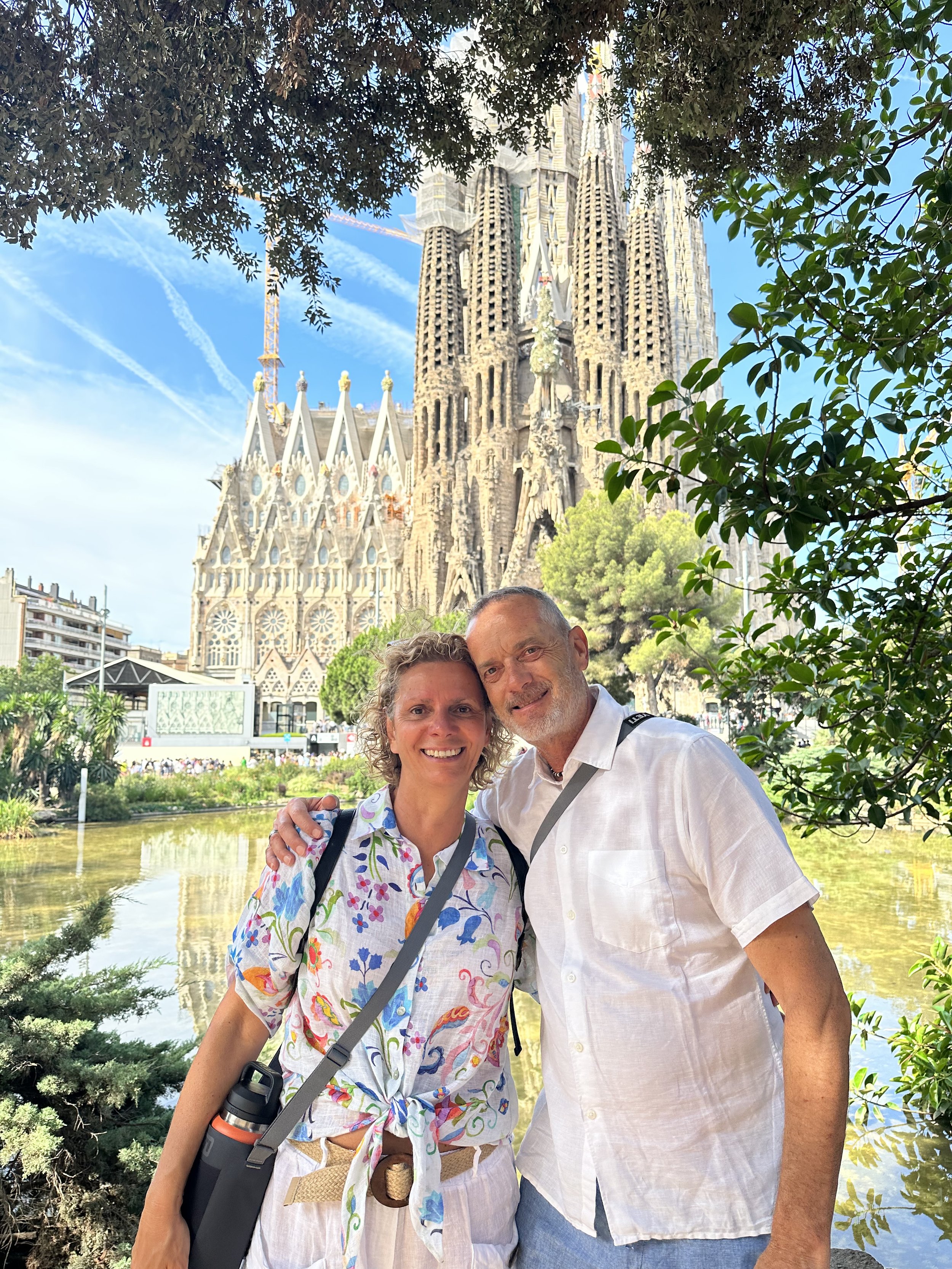






Geuell Park Album










Montsarrat Album

















WARNING R18 - Erotic Museum













Buongiorno da Rovigno ~ Dobar dan iz Rovinja ~ Good day from Rovinj
Let’s start today with a continuing story that will explain what are we doing in Rovinj all of a sudden!
Let’s start today with a continuing story that will explain what are we doing in Rovinj all of a sudden!
So, my parents and I arrived to Split in July 1969, and we lived between Sarajevo, Jahorina and Split for 22 happy years. We had a good life style and I had unforgettable childhood for good!
And then one day, everything changed, overnight. From living a great life in piece, harmony and happiness to experiencing unimaginable things.
Why? I don’t have a better explanation but to say because we had a “wrong surname”. Once again, I won’t talk about the dirty politics but our lives changed forever.
The 1990-ties war was declared just at the time we were ready to spread our wings fresh out of university and build a family nest together in the town we both grew up in.
But no! That’s not how the world rolls!
We learnt quickly others can destroy everything we own and everything around us but a hope for a better life is in our hands. We took a brave or a crazy step forward and immigrated to Aotearoa with a suitcase and a three years old Miroslav. From nothing to nothing with nothing.
With my Dad’s blessing we left him on his own in our apartment in Split hoping we will make it down under, he will survive the war, retain the apartment and one day come to NZ for a visit.
We had no clue how the life story will evolve and promised one another to put our family first, always!
In 1996 we welcomed Petra to this world, Nebojsa’s parents followed us and immigrated to NZ in 1999, after having lost everything in the war. Nebojsa’s Mum passed away and his Dad who we all call “grandpa” is well enjoying his life at the Greenvalley Rest Home in Auckland going strong at the age of 92.
My Dad came for a short visit in 2000 to check on us, I still think he never believed his princess was ok, and came to NZ not to live but to get assurance things were fine.
During his stay we agreed he would sell the apartment in Split, after winning the battle with the government, buy a smaller one in Istria, and enjoy his life. We had one of our “family board meetings” and deal was sealed.
On his return to Croatia, thanks to the support and guidance from our close friends parents, late Zlata and Lovre Vranješ, he found a lovely apartment in Rovinj and the rest is history.
Whenever we arrive to Europe, we visit Split. I always go to my Mums grave with the most beautiful bunch of flowers, we say hi to a few remaining friends and we leave. Too many horrible things happened to us and our families during the war years, mental scars are too raw despite many years gone by.
We now call Rovinj our home, as we do for Jahorina and Auckland. We always travel home to go back home and it works in every direction. Home is where your friends are.
What we have been up to?
We are here only five days, a short administrative stop over before we embark on a next adventure. We will return later on to enjoy the summer, more on this another time.
What can I tell you about beautiful Rovinj?
Rovinj was under Venetians for 500 years rather than Otoman Empire, one could argue a better option!
It’s a small coastal township with 14,000 inhabitants, and on average, 3.5 million overnight stays during the three summer months.
Situated on the north Adriatic Sea, located on the western coast of the Istrian Peninsula, it is a popular tourist resort and an active fishing port.
The town is officially bilingual, Croatian and Italian, hence both town names ( Rovinj and Rovigno) are official and equal. Here you go, now you know why I’ve been studying Italian!
Main industry is tourism, tobacco and sardines.
Rovinj flag is a yellow goat with red socks - because of the terracotta soil.
“Tabacine” and “Sardinele” were the names for ladies who worked in Tobacco and Sardines factories years ago. No one needed to ask ladies if they worked back then, by-passers knew by the smell!
Rovinj was built with narrow streets, high buildings, no balconies in old town, it was an island to begin with.
The Church of St. Euphemia, often known as the Basilica of St. Euphemia and by locals as the Church of St. Fuma is a local gathering point. Built during Venetian times, in the Baroque style, located in the heart of the historic part of Rovinj. St Fuma statute was built in the 18th century, its wooden with a brass on the outside. She rotates daily depending on winds. When she looks towards the sea everyone is in a good mood and happy, always after the wind “bora”.
We can see Alps in Italy and Slovenia from St Fuma church after the wind bora.
City hall today was a tobacco factory.
Bafi door is the entrance to old city named after Daniel Bafi who decorated the entrance door with lions in the Venetian style.
Battinade is a type of local singing.
Tourism started with a hospital built by Austrians in 1883 for kids with respiratory problems, it was a health resort at its early beginnings.
Rovinj has been cited as the number one touristy destination of Croatia for a number of years in a row! Amazing and each time we come something new surprises us.
First ever Michelin restaurant Monte opened in Croatia, now there are 3 in Rovinj.
A few fun facts!
Batana is a wooden boat with a flat bottom protected by UNESCO. It is built with a flat bottom to allow people to use it in shallow waters in Rovinj’s archipelago. When Batana go out they use decorated sails to represent family who owns them, today there are 100 sails preserved.
Battere means to hit, to slap in Italian ( flat bottom slapping the water ) 😊
Adriatic hotel is 110 years old, it has a whiskey bar with 110 bottles from all the world and each Saturday they offer a tasting with a live classical music - superb!
Malvasia is a famous white wine. 60% of all wine produced here is Malvasia. Colours are golden and yellow. Tasting the wine will produce fruitiness and mixed flavors of apricot, peach, apple and jasmine flowers, 14% alcohol.
Temperature for white wine needs to be 7 degrees Celsius, red wine 18, and olive oil 28 - aren’t you impressed with my knowledge?!
Fish must swim three times - sea, olive oil and wine. We love it when it does exactly that!
Istrian Olive oil - Buža my favorite flavor. Smell it first, feel the grass, olive fruit, tomato leaf and apple flavors. Taste it by breathing it through your teeth then swallow ( must be warm) 👌
Rovinj soup - red wine, a bit of sugar or honey, warmed up and add bread croutons with olive oil and pepper. Can add fruits, can add pelinkovac or dried figs toasted and a bit more olive oil.
Bisca is Istrian traditional grappa.
Pelinkovac is made in Rovinj, think of it as a Croatian version of Jaggermaster.
There is a lot more to say about this paradise, if interested check it here and even better come for a visit, I guarantee you won’t regret it! And we will welcome you with open arms.
https://www.rovinj-tourism.com/
That’s us for today, tomorrow a new chapter starts, we are off to our next adventure, wish us good luck as we have no idea if we are up for it!
Rovinj Album







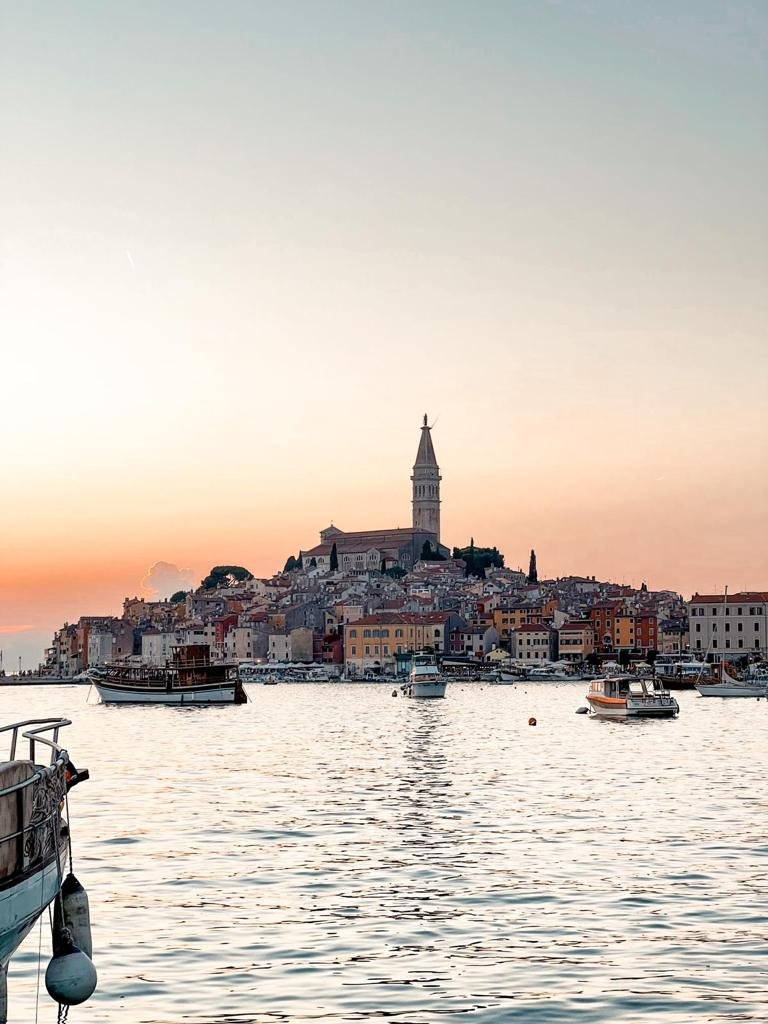










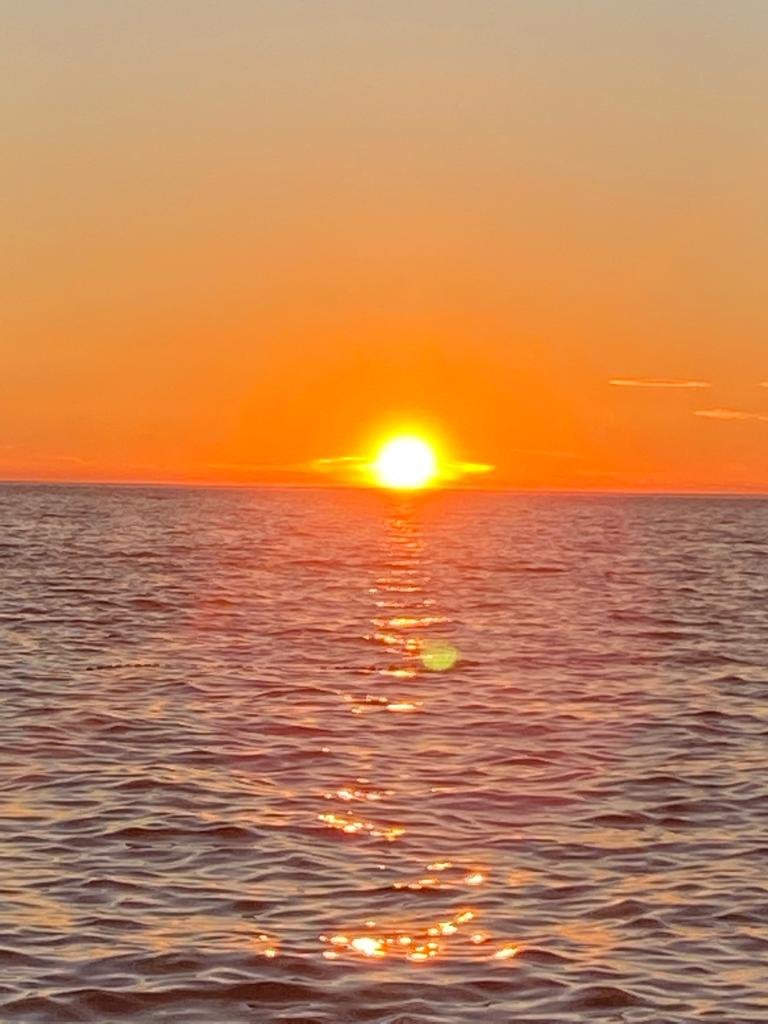
Waiting for Robbie Willaims to come up on the stage:
Watch some of his performances here:
Dobro došli u Sarajevo & planinu Jahorinu
I am an emotional bubble today.
I feel happy, sad, troubled and grateful to be back to where I always feel the happiest!
How can all these emotions run through all at once I can’t explain, but I feel them each and every time I come to my birth place Sarajevo and to the most beautiful mountain in the world Jahorina.
Welcome to Sarajevo & Jahorina mountain
I am an emotional bubble today.
I feel happy, sad, troubled and grateful to be back to where I always feel the happiest!
How can all these emotions run through all at once I can’t explain, but I feel them each and every time I come to my birth place Sarajevo and to the most beautiful mountain in the world Jahorina.
Let me share a bit of a personal story!
My father Savo Golubovic was born in Mostar, he joined the Second World War as a young 15 years old boy to defend the country from the Nazis. He was wounded many times, received a number of bravery medals, but as a consequence his health was compromised.
After the last surgery he settled in Sarajevo, graduated a law degree at a latter stage of his life, met my beautiful Mum Miroslava Rechter in Sarajevo and I was born in 1964.
The story says everyone was ready to welcome a baby boy (based on mum’s belly shape), his name was going to be Dražen and then I arrived as a surprise. Mum’s creativity kicked in and she sent a letter to Dad from the hospital and signed it “with love from Miroslava and Dražen-ka”! A female made up version of a popular male name Dražen!
Mum passed away when I was young and Dad passed away at the age of 92. I have had the best parents and the best childhood one could ask for. Love them both and am forever grateful for their love and inspiration.
Do you know who discovered Jahorina all these years ago?
During Dad’s partisans days and post war, together with a few of his partisan friends, Dad walked across the mountain Jahorina, 31km away from Sarajevo. He fell in love with its beauty and quickly realised a potential to build a ski resort. He was a passionate skier and mountain lover.
One could say, Jahorina ‘s development started with Mum and Dad building a small family batch, an A shape mountain house.
After a while Dad engaged engineers and the very first ski lift and a ski slope was planned and opened in 1969.
Sarajevo ski club, and later Jahorina ski resort were kickstarted by Dad, and he gave 50 years of service to this paradise here in the middle of Bosnia and Herzegovina.
The story says I started to ski before I walked, can’t tell you if it’s true but I grew up believing it was true!
At the age of four we moved to Split in Croatia, and we continued to live in between Sarajevo, Jahorina and Split. We would come to Jahorina each summer during the month of August to pick up field mushrooms, blueberries, raspberries and native plants and of course we spent winter months skiing.
As a young girl, the only child and Dad’s princess, I had to do three things:
Be respectful of elderly
Be great at school ( so that I can do well in life but also so that I can skip school often and spend as much time in Sarajevo with my mates and ski during winter months)
Be helpful at home
If I did these three things all other little white lies, mischievous behaviors were forgiven! And did I push the boundaries - oh yes!
When Nebojsa, 3 years old Miroslav and I emigrated to New Zealand in 1994 I promised my Dad that I would never ever sell our batch, instead I would look after it and pass the love and respect for what he did onto our children. I am happy to share both Miroslav and Petra love coming here and that gives me the utmost joy.
Let me tell you now a little bit about my Sarajevo!
Do you know how Sarajevo got its name, who founded it and why?
It was established at the end of the 15th century by the Ottoman Empire.
Saray = palace in Turkish. It was an administrative center, a palace in the valley.
Ottoman Empire was big, powerful especially during the 16th century under Sultan Suleyman the Magnificent. His Nick name was “ a sick man of the Europe” for his ruthless rulings.
Ottomans ruled this area from the end of the 14th to 19th century - 400 years!
In 1878 Austrian Hungary Empire came in and ruled till 1918. During their 40 years of ruling they invested a lot of money, it was a very productive period for the region. They wanted to show to the Muslim population they were not bad occupiers, they were modernising Bosnia. They preserved all mosques, the market area and kept the Heart of the city called Baščaršija.
On 28 June 1914 Franz Ferdinand was killed near the Latin Bridge in Sarajevo which triggered (not caused) the First World War. The event put Sarajevo on the world map.
In 1918 Yugoslavia was established as kingdom, known as the first Yugoslavia, ruled by the King Karađorđević. Belgrade became a capital city which resulted in not as much investment in Sarajevo.
When the Second World War started in 1940 the King Karađorđević ran away and found exile in London.
Tito with the partisans troops liberated Yugoslavia and established the second Yugoslavia known as Socialist Federation Republic of Yugoslavia (SFRJ).
Russians wanted to take over Yugoslavia but Tito said the famous “No” to Staljin, became a life long president and died in 1980 at 88 years of age.
Tito controlled nationalism on every side, although he used repression at times, we lived the best life!
Soon after his death, nationalism started to erupt, there were economical and political problems, followed by a break up of USSR. Yugoslavia known as a great socialist country started breaking up.
Slovenia broke off first in 1990, followed by Croatia in 1991, then Bosnia and Herzegovina in 1992. These were republics during Yugoslavia days, and became independent states through the war.
I won’t go into dirty politics, but will say it was a horrible war, each side did terrible things, innocent people died, we lived through it for three years before we could legally and gracefully leave to New Zealand.
A little bit more about Bosnia and Herzegovina!
It was always a melting pot, during Ottomans times Jews and Catholics could practice their religion but had to pay higher taxes.
During Yugoslavia times, ethnic Croats, Serbs, Muslims, lived together, had similar traditions, were the same people, the only difference was religion.
After Bosnia and Herzegovina declared the independence in March 92, the war started on 9/4/92, Sarajevo was under a siege for 44 months, till December 1995.
The system failed to protect people, people felt let down which culminated in anger and frustration that still exists against UN, Western World and those who came to help but didn’t.
Today, demographics are:
78% Bosniac , interestingly not all practising Islam
12% of Serbs ( was 30% pre 1990ties war)
8% of Croats ( was 25% pre 1990ties war)
2% of Jews and others
There is still a lot of denial of horrible things that happened during 90ties, at some point we must confront the past to move forward, but mental scars are the worst scars and I will forever wonder if they could heal.
Today, people are getting fed up with 90ties stories, they still follow politics but want to enjoy the life.
Polish Pope John Paul the 2nd came to Sarajevo in 1997, he was the first catholic pope who came to this territory. He came to send a message of piece and co-living. People say he was the first “tourist “ who opened Bosnia to tourism after the war.
There are many important and beautiful buildings in Sarajevo, I will mention a few:
Hotel Evropa - built by Austrian Hungary in the 19th century, known as the best hotel for many years with a number of famous people staying in the hotel.
Next to the hotel is the mosque and a building built in socialist Yugoslavia - this spot is known as a place where East meets the West!
The Ugliest building in Sarajevo
Built during socialist times in 1982 - as a new building just before the 1984 Winter Olympics. It is described as a modern and fun building, built in a Funky Socialist style, but now has got its nick name, a parrot building!
Jews synagogue built in 1901 is the only remaining active synagogue in the country. Jews history is 400 years old, first Jews came here from Spain following extradition in the 16th century.
Many Jews left this area during the Second World War, with only 700 Jews living here today. Back in 1983 there was a last Jew’s wedding in town, and next week after 40 years there will be a wedding between an American Jew and a local Jew girl. The Jew community is stoked!
I would like to share an incredible true story from the Second World War that depicts the happiness and co-life irrespective of religion, nationality and culture. This story represents Sarajevo I remember and will love forever!
This photo from 1941 illustrates two ladies, Zejneba Hardaga a Muslim woman and a Jew woman from Kabiljo family walking close next to one another with Zejneba burka covering a yellow star of David to protect her so she could walk freely.
Zejneba helped Kabiljo family to escape Nazi - occupied Sarajevo and then move to Jerulasem.
Many years went by, and in 1992 the same Kabiljo woman helped Zejneba’s family to leave Sarajevo and arrive safely to Jerusalem.
A full story here:
https://aish.com/muslim-and-jewish-families-save-each-other-50-years-apart/
A movie based on this true story:
Righteous Among the Nations is an honor recognition used by the State of Israel to describe non-Jews who risked their lives during the Holocaust to save Jews from extermination by the Nazis for altruistic reasons.
Zejneba was the very first Muslim woman to ever receive this prestige recognition for her sacrifice in rescuing Kabiljo family.
And finally a few interesting facts:
Baščaršija (pronounced like Bashcharshia) = main market, when established by Ottomans was used only for business, not for living. It was too busy, too noisy to live there. Back then people lived in Mahala = neighborhoods.
During Austria Hungary times the living concept changed. They brought living and working together in one place. Shops were downstairs and people lived upstairs.
Baščaršija is a network of 50 streets and each street was a different trade / craft.
Clock tower built in the 16th century. It’s a countdown clock tower, counting hours to sunset. It needs to be manually adjusted every day, and it’s one of a kind in the world.
Gazi Husrev Begova mosque, library, Medresa ( Islam school) and a clock tower. The “G” guy funded all these buildings. He was the most famous local governor during the 16th century.
Gazi = a warrior, originally from Greece
Husrev = a Nobel man
Caravan style hotel - Morića Han
Downstairs it was a horse stable, people stayed for a few weeks but the first three nights were without charge during Ottoman times. There is saying in our language “Svakog gosta tri dana dosta” which means for every guest three days is enough.
They offered three free days to stimulate trading and hospitality was very important.
Ćejf = Zen moment with a coffee
Ašćinica = cantine style ( food on displays )
Coffee culture is very important. Three types of coffee in Bosnia:
Welcome coffee - strong good quality - dočekuša
Second - open discussion coffee - razgovoruša
Third - goodbye coffee - sikteruša
Served with sweets Lokum ( rose flavour most popular)
Town Hall and national library
Constructed in Spanish style to make a fusion with markets and to tribute Jews.
It was destroyed during the 90ties with over 2m books burnt to ashes.
Known as Sarajevo Fenix - today reborn from ashes and fully restored. It was reopened on June 28 2014, a 100 years from the First World War, with a desire to send a message of no more wars, ever!
Inat kuća
Inat kuća - a small house across the road from the Town Hall. The story says when the Austrian Hungarian rules wanted to build the Town Hall they had to pay local people to move to a different location and free up the land. One man took the money but asked that they move his house across the road too!
People say this house represents mentality of people of Bosnia.
Inat = I struggle to translate this word, and have landed on a definition of illogical stubbornness. I welcome English professors to correct and improve the translation in the Comments box. 😊
Enjoy the photos 🤗
Sarajevo photo album











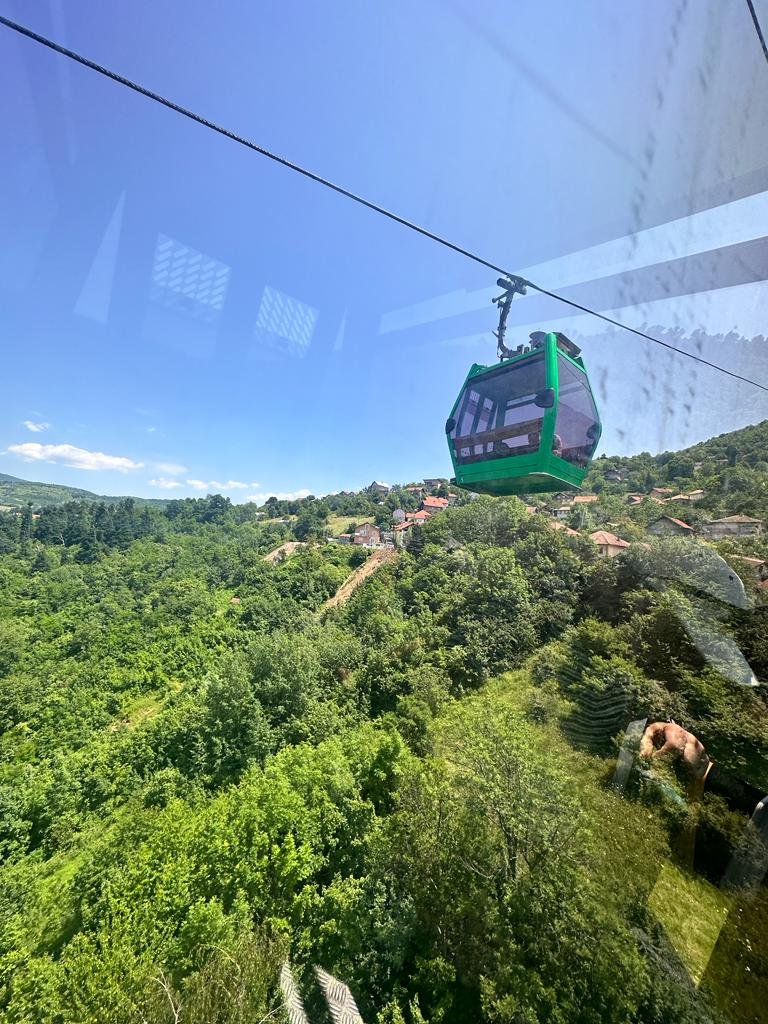
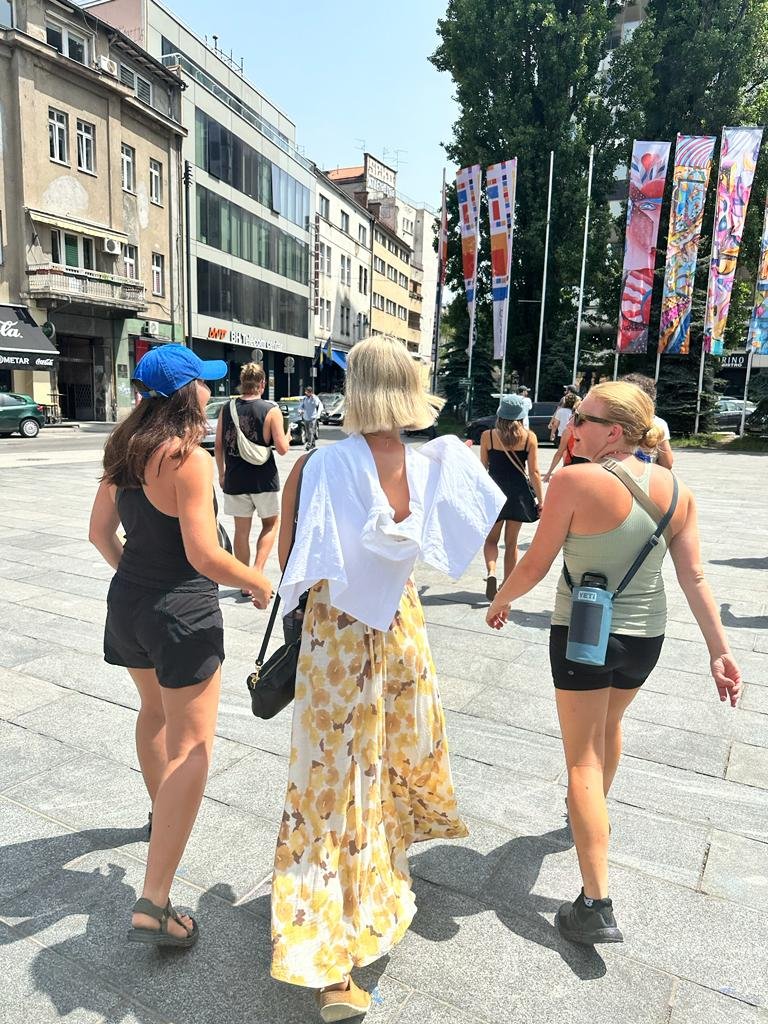

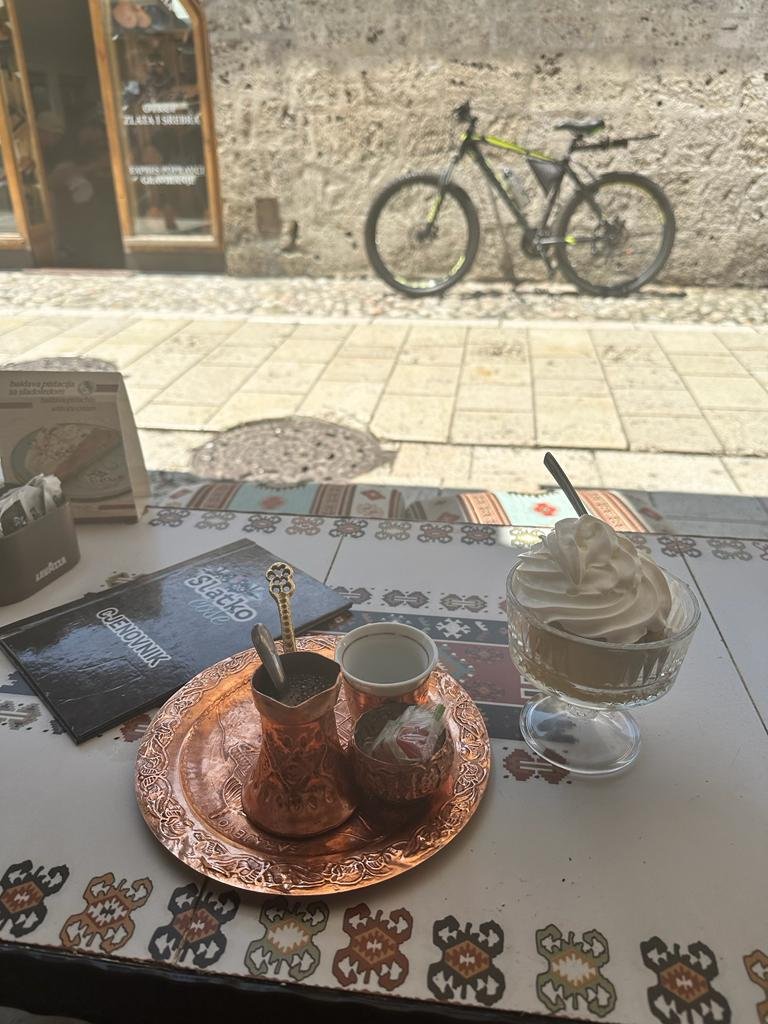
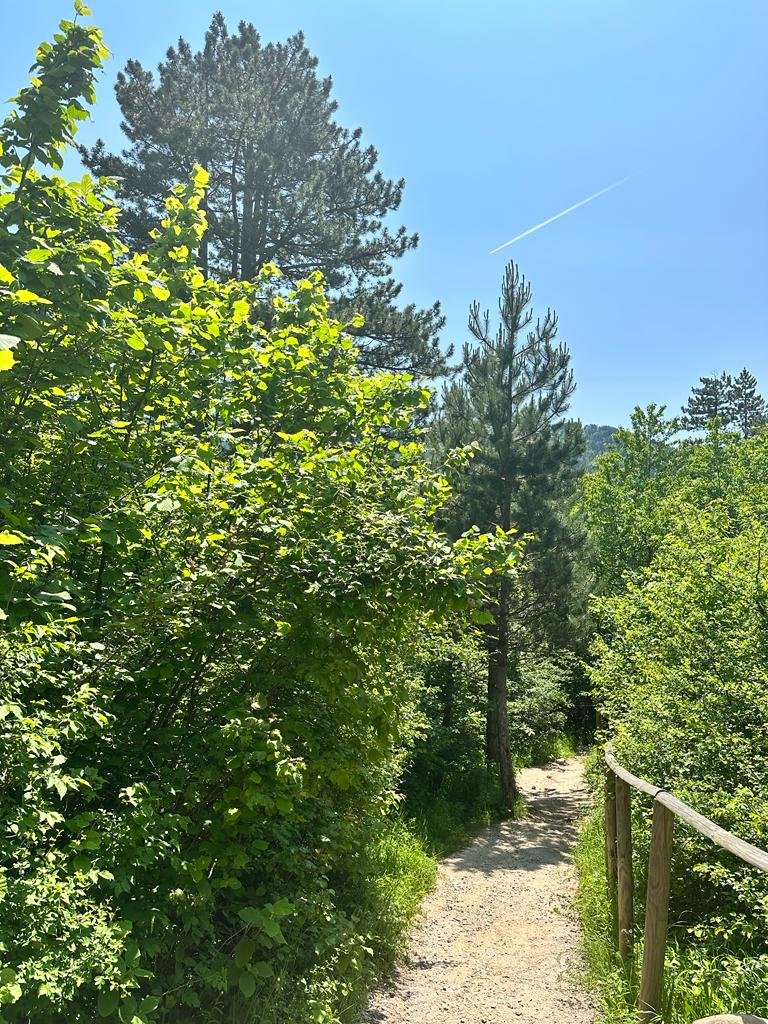






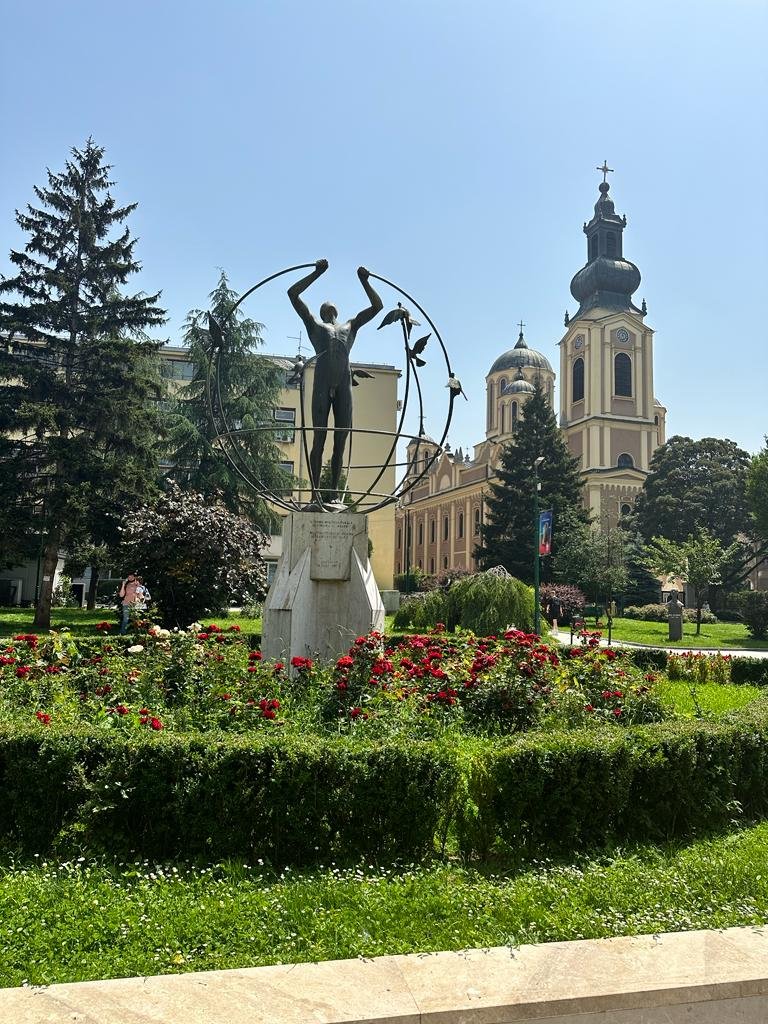
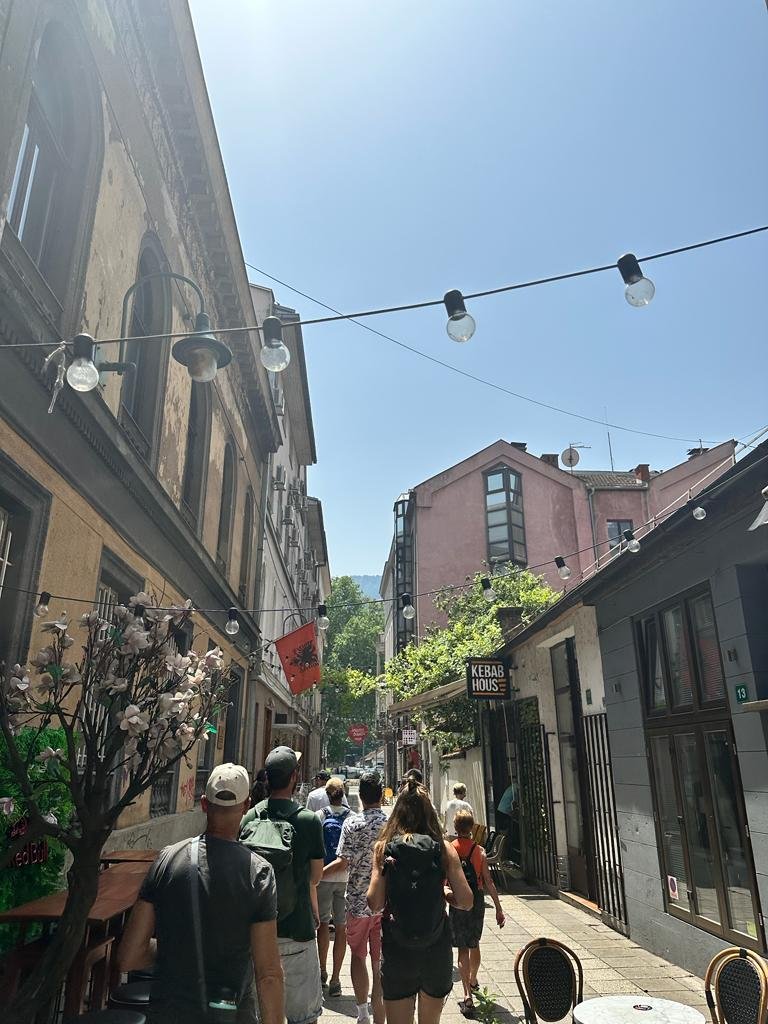












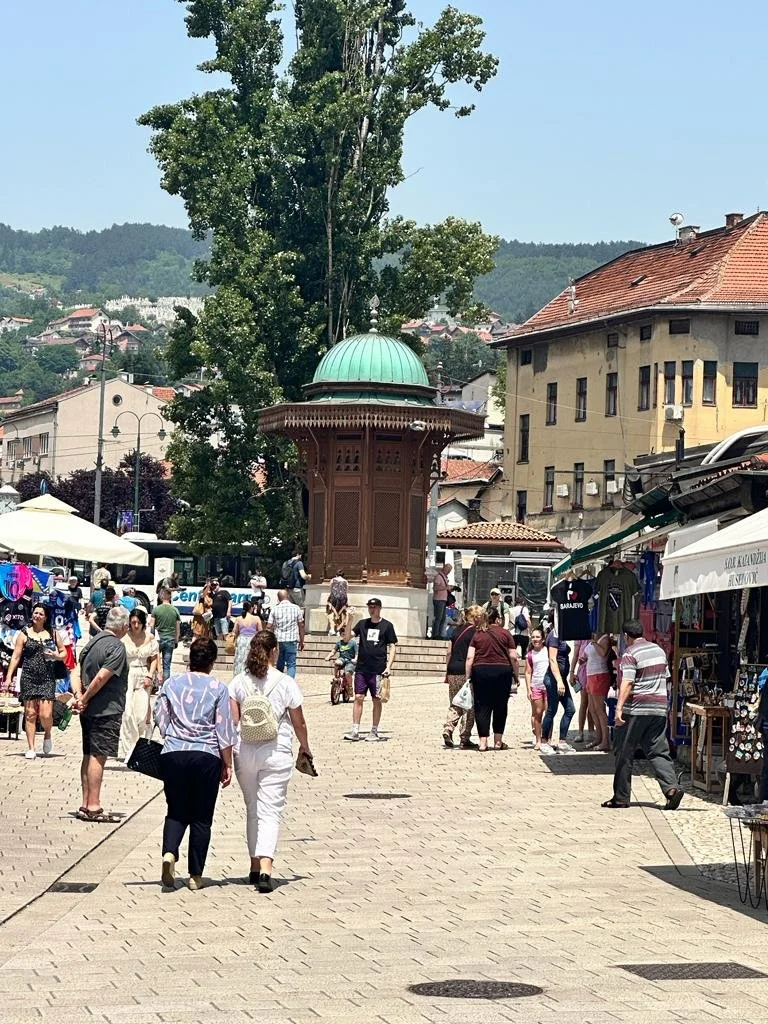

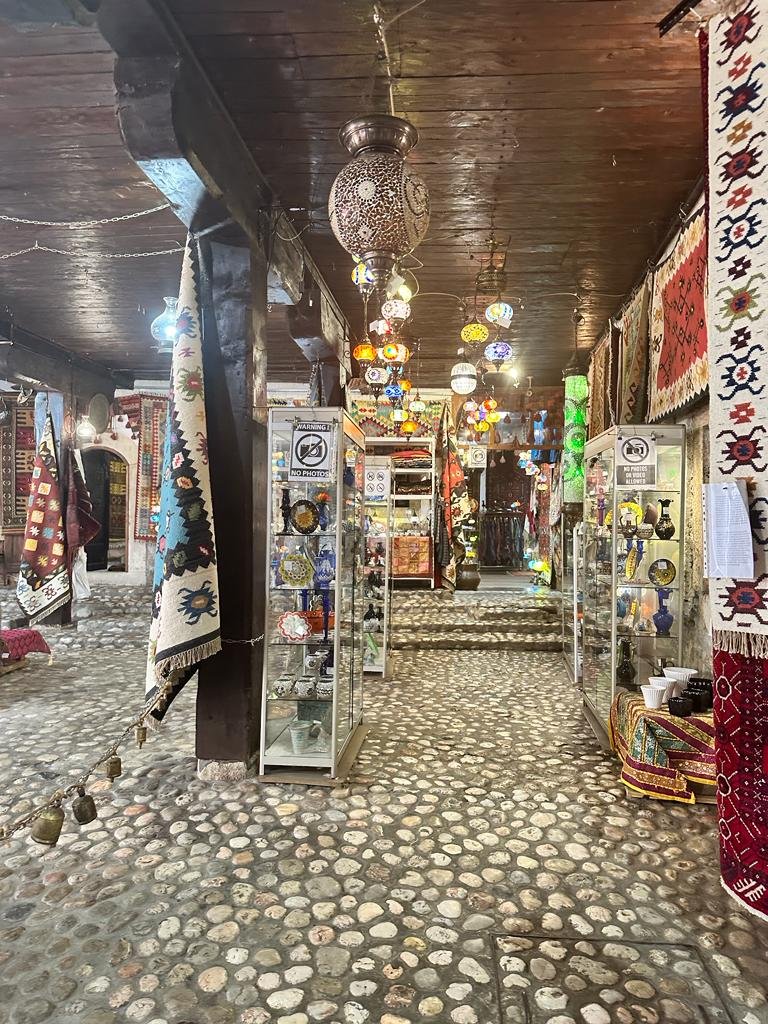



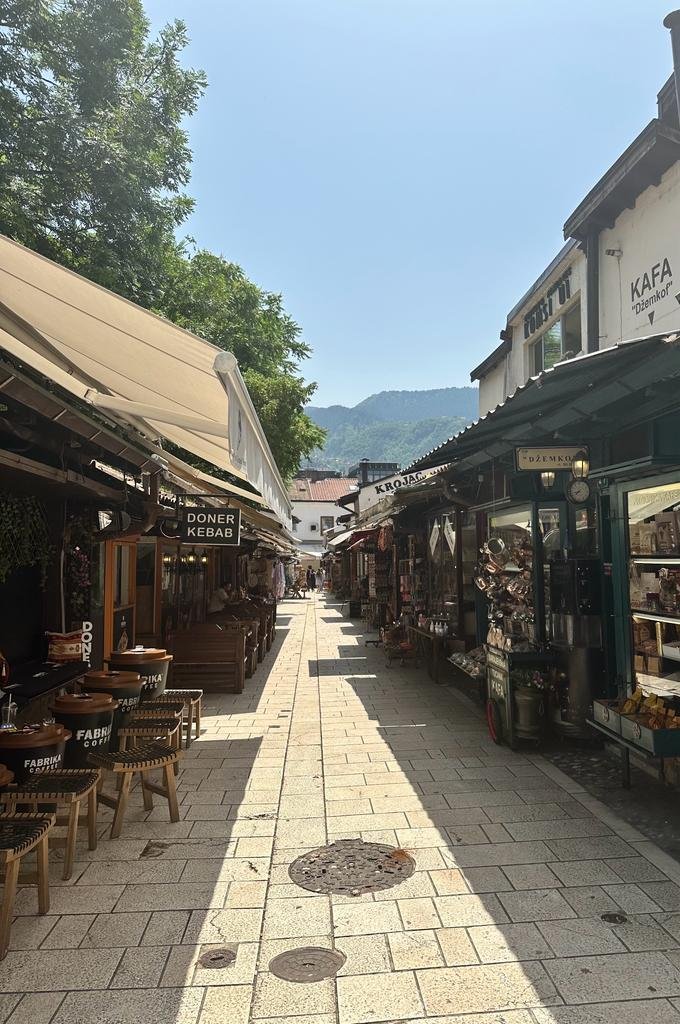








Jahorina mountain (1916 meters above sea level) photo album


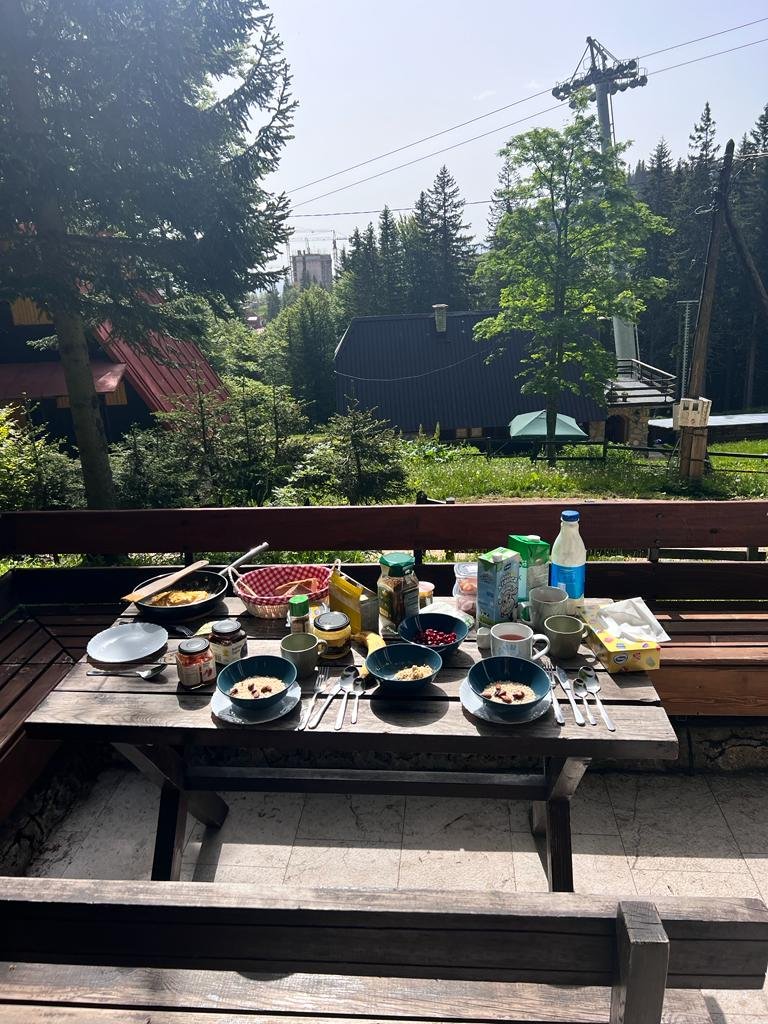









Büyü Istanbul
Magic Istanbul
Today I’ll start by saying it is simply impossible to capture 3000 years of history into a short and interesting blog.
Instead, I will share a number of historical and fun facts to ignite your personal interest in the history of Istanbul, and a number of photos🤗
You may get itchy feet after reading this one. 👣 …….
Magic Istanbul
Today I’ll start by saying it is simply impossible to capture 3000 years of history into a short and interesting blog.
Instead, I will share a number of historical and fun facts to ignite your personal interest in the history of Istanbul, and a number of photos🤗
You may get itchy feet after reading this one. 👣
Let’s start!
Istanbul was established 2600 years ago by Greek fisherman Bizas
Became a main trade location and rich city, which attracted enemies who tried to conquer it 29 times
Romans came in 6th century, Constantin the Great emperor settled in and built 21km long walls to protect the city
In 1453 Turk Sultan Mehmet conquered the city and changed the name from Constantinople to Istan polis = in the city
1453 is the most frequent PIN number in Turkey!
During the 16th century Otoman Empire was the strongest and ruled over Asia, Europe and Africa.
Ottomans - one family ruled for 7 centuries, today family members are well and alive living in England.
Ottoman Empire lost the First World war and Istanbul got occupied by British.
In 1918 Mustafa Kemal Ata Tur ( father of Turks) started the independence war against alliance troops and declared a new Turkey republic on 19/10/ 1923.
Ata Turk built a democratic state and became a new president.
Istanbul is the only city in the world spanning two continents, Europe and Asia connected with bridges and underground underwater metro.
Throughout the history Istanbul was the capital city of 3 empires:
Roman
Byzantine ( Eastern Roman)
Ottoman
Roman Empire was divided into two empires in 390, one catholic ( Latin) and one orthodox ( Greek). Eastern side survived known as Byzantine, while western collapsed in 425.
Istanbul is 270 km long, spreads across 7 hills, has cca 15 m population who legally live here and a large number of refugees from Afganistan and Syria.
Bosphorus channel separates two continents, long 32km.
City highlights - too many to mention, will stick with a few that fascinated me the most!
Blue Mosque - Sultan Ahmed Mosque - Masterpiece of Islam
Sultan Ahmed became sultan at the age of 14, reined for 14 years and was 14th in the family to become a sultan, died at age of 28.
Did you know what had to happen for someone to become a sultan?
For centuries the rein shifted from a father to the oldest son who had to kill all younger brothers to stop them fighting among themselves and threaten his throne.
Sultan Ahmed introduced a change. The rein shifted from older brother to a younger brother, but instead of killing younger brothers they were caged until ruling sultan’s death.
It took 42 years for one brother to become a Sultan. Since he lived in a cage all his life he wasn’t educated or had smarts to rule and this fact alone was one of the reasons Ottoman Empire collapsed.
Mosque is used for prayers but also as a place for gathering.
Predominant colour is blue with over 20,000 unique pieces of ceramic hand made tiles.
Built in 17th century with six minarets, unheard of and unacceptable by Mecca mosque administrators. Mecca mosque had six minarets and was the largest, the best, the most powerful. To make a piece with Mecca Sultan sent his people to build additional minaret and Mecca mosque became the number one again with 7 minarets. Today it has 9 minarets in total.
Turquoise colour comes from the word Turkey - a mix of blue and green colours represented in the Blue Mosque.
In todays Turkey population is split:
4% Jews
4% Cristians
92% Muslims
Aya Sophia - Church of Holly Wisdom - Masterpiece of Orthodox Christianity
Built in the 6th century and was the world largest Christian cathedral for 1000 years.
It is the birth place of Christianity being split into catholic and orthodox.
Got converted into a mosque in the 15th century when Muslim Turks conquered the city of Constantinople. It was easier to convert then to build new.
Post the Turkey independence war and Republic declaration in 1923 Aya Sophia was converted into a museum.
The myth says Turkey people were sad for years, wrote melancholic music and no one could explain the reasons.
One day three years ago the government made a decision to convert Aya Sophia museum back into a mosque and all sadness went away! As long as there is good tobacco, coffee and cats people are happy 😊.
Today, curtains cover human and animal characters on the mosque walls during pray times.
Basilica Cistern - underground water cistern
Built 1500 years ago by the Bizantine Empire.
The same engineers built Aya Sophia.
It is the largest Roman water cistern in the world, but Istanbul has 200 water cisterns in total.
Did you know why it was built?
Following a civil unrest in 532 city was destroyed. They had to find the water that was at a higher level than land and build acqua duct to bring water to suffering citizens.
They had no resources, had to use recycled materials from destroyed buildings and churches, basilica etc.
Water was mixed with vinegar or wine to kill the germs and fish was introduced to clean it naturally, like a small pond with eco system
Ottomans never used it.
It holds between 80 - 90 000 cubic meters of water.
Incredible invention and unique in its architectural design,
Hamam - Turkish Bath
A life time experience that cannot be described in words, you need to experience it to appreciate it, worth every penny.
Let’s just say, I have never ever felt as clean as I did after the Ottoman treatment that included a whole body rubbing with “kese”.
There were nearly 300 hamams in Istanbul, 60 of them are still in use and mostly commercialized. There are separate sections for men and women. We visited the oldest Hamam in town called Cağaloğlu built in 1741.
A number of world famous people visited this place: Omar Sharif, John Travolta, Cameron Diaz, Ophrah Winfrey, Steve Irwin, Harrison Ford, Tony Curtis, King Edward VIII and many others and now including Nebojsa and I!
Finally, a few fun facts:
4 commonly known words come from Roman times in Istanbul:
Carisma
Justice
Nike
Porno
If interested to know the story behind these words ask a question in the Comments Box.
Mosque is a place for praying and gathering. A number of minarets had a meaning in old days:
One minaret - built by citizens
Two minarets - built by a royal family
Four minarets - built by a sultan
Enough of words, let the pictures bring the magic to life!
Magic Istanbul photo album









Blue Mosque photo album


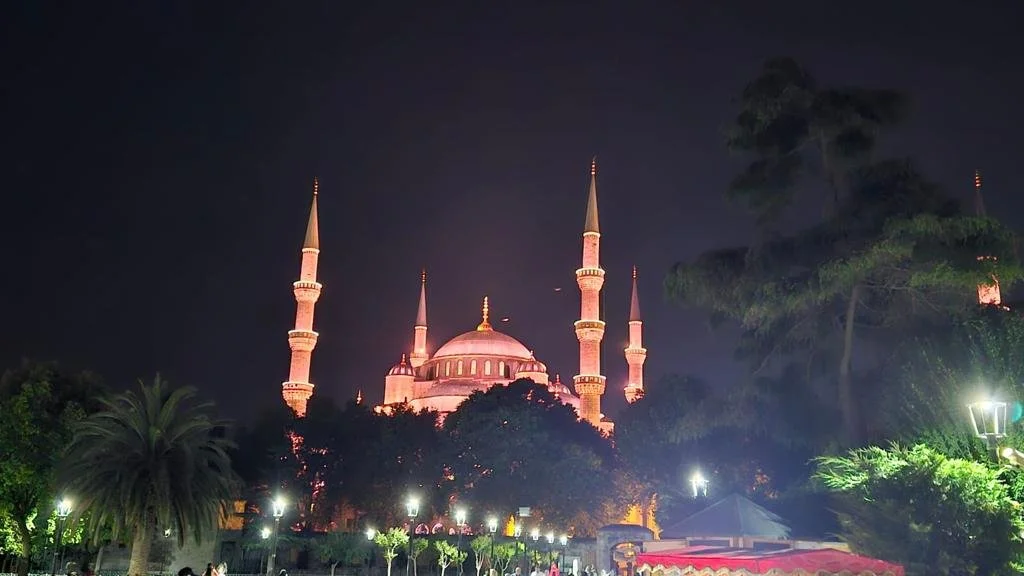











Aya Sophia photo album




Basilica Cistern photo album
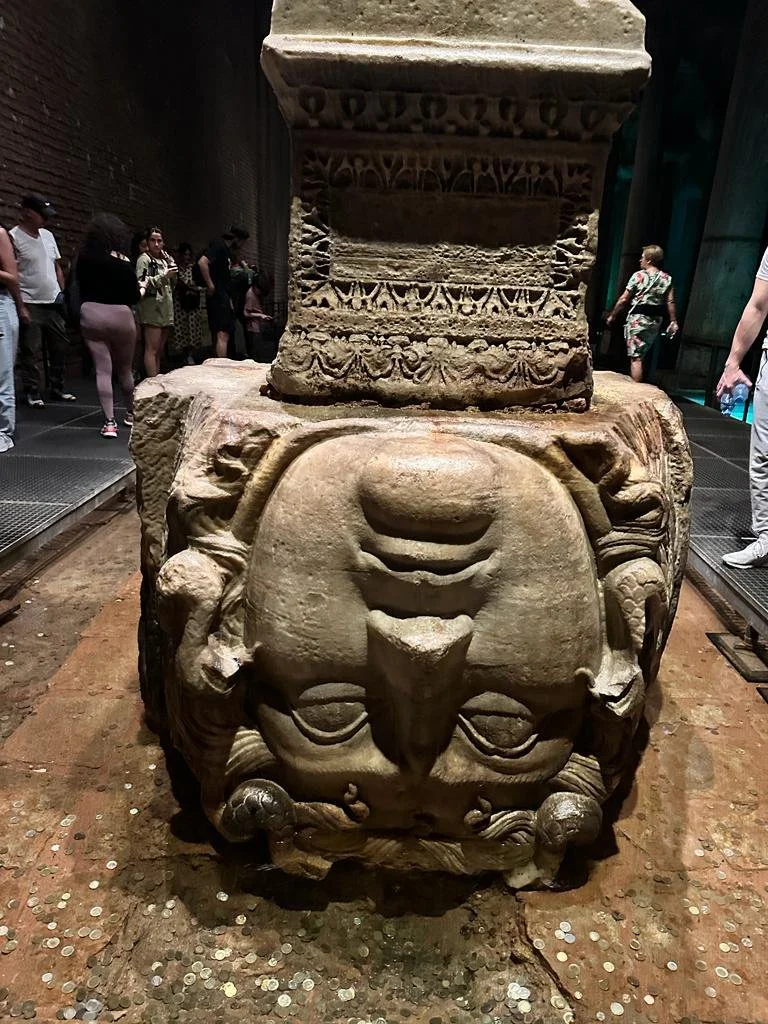








Cağaloğlu Hamam - Turkish Bath





Lezzetli Yemek
Delicious Food
A few days have gone by with thousands steps and non stop walking but no activity can burn the calories of Turkish delicious food.
People are so friendly, prices affordable in comparison to other European countries and food is simply yummy! ….
Picture tells it all!
Delicious Food
A few days have gone by with thousands steps and non stop walking but no activity can burn the calories of Turkish delicious food.
People are so friendly, prices affordable in comparison to other European countries and food is simply yummy!
From the famous kebabs, to lavish ( type of bread), to mezze platters to die for, to spices and nuts as much as you can take to sweets that blow your mind.
Yes, baklava is the most famous desert but there are tens of different types of baklava. My favourite is the one where everything is made of walnuts and honey, even the actual pastry. Unbelievable!
Lokum is served with a Turkish coffee and it’s a soft sweet made back in a day for the famous Sultan Ahmed after he broke his teeth eating hard sweets.
Rahatlokum (known as Lokum or Turkish Delight) = “to comfort one’s throat” and the variety is enormous! The better ones are made with honey and the ones made with sugar are often the presents for mothers in law.
The very first ever Lokum store was opened in Istanbul in 1777 and it still runs selling the very best Lokum in the world. Did we buy any? Of course, and after trying who knows how many my pick is double pistachio and rose.
Turkish coffee is served to guests only and always with a piece of Lokum. If guests start by eating a Lokum it signals they are hungry and a host will bring food. It’s a test for guests and a little secret not many people know about.
Did you know about the famous Turkish viagra? It comes as a tea and as a desert (walnuts with honey), and it apparently works !
A few of our favorite dishes so far:
Yaprak dolma - vine leaves rolled with rice and spices filling served with yogurt Iskender kebab - local kebab (Iskender = Istanbul) Kofte - mince meat balls cooked in tomato sauce with different spices, yum!
Testi kebab / meet and veggies cooked in pottery dish that needs to be broken up before eaten Gozleme - flat savory pockets usually filled with salty white cheese, spinach or minced beef.
Pide - another type of bread
Lavish - type of bread, tin dough tiled and slammed against hot wildfire oven that looks like a big rugby ball and empty inside!
Borek - all different fillings, spinach and feta cheese is my preferred choice Simit - student street food, round sesame with cream cheese is my pick!
Manti - Turkish ravioli served with a yogurt and tomato sauce, delicious 😋
Kunefe - Kadayif traditional Ottomans desert with cheese in a middle served hot
And the list goes on….feeling hungry? Yep, we are, it’s time to try something new and then walk and walk more!
A few travel tips:
If you like wondering around the city and learning about it then Guru Walks are a great choice. They are available worldwide, free of charge and based on a donation of your choice. Run by local qualified tour guides who share a lot more information about their country, rituals, tradition and tricks and tips. Highly recommended, we have used them when travelling around South America and now again in Istanbul.
Download the Guru Walks app and off you go!
eSIM card
Thank you Petra for introducing us to this new tech invention! We are using FlexiRoamX app. So simple, no changing of SIM cards and worrying about it. Choose a plan and start Googling!
Istanbul Card
A great way to see more by using Metro, ferries, buses, anything really and a good break from constant walking.
Although Turkey became capitalist country in 1950s, it has retained a number of socialist aspects to life. An example is BELTUR - government funded restaurants in top locations serving delicious food at affordable prices.
My next blog comes soon and talks to history of this area and amazing monuments we’ve visited in this short stopover before we get to Bosnia.
Baklava
Sweet viagra!
And more Baklava
Lavish bread my favourite!
Merhaba
Hello from Istanbul - Queen of Cities!
I expected to be fascinated with this big and vibrant city that spans two continents, Europe and Asia. Expectations are beyond being met! Wow, wow, wow!
Photo shoot at Grand Baazar
Hello from Istanbul - Queen of Cities!
I expected to be fascinated with this big and vibrant city that spans two continents, Europe and Asia. Expectations are beyond being met! Wow, wow, wow!
We landed at 5am, got to the Sultanhan hotel, enjoyed the traditional breakfast and a strong Turkish coffee, so nice! By 10am we were already out wondering the streets of the old town.
I am soaking it all in and there is plethora of things to visit and explore. We went to the Grand Baazar with 61 streets and over 4000 shops. There is something there for everyone, from spice shops, souvenirs, teas, clothing and leather stores, shoes shops - I have never seen this many shoes shops in one place! Everyone was trying to sell me a leather jacket and golden jewellery and although they are famous for being great salesman, I’ve got a compliment for being equally a good saleswoman, ha!
Honeycomb with fresh mozzarella cheese is my favourite gourmet discovery today!
Guru walks are booked for the next few days, my brain is working hard being super curious about it all.
My First Blog
Ready to see the world!
In the next few weeks, a big milestone will kick in for me, 25 years of service with IAG New Zealand! Who would have thought a young woman, new to New Zealand, with no English, no insurance background, and a desire to learn and try new things would land in insurance and then make it her career? ….
Ready to see the world!
In the next few weeks, a big milestone will kick in for me, 25 years of service with IAG New Zealand! Who would have thought a young woman, new to New Zealand, with no English, no insurance background, and a desire to learn and try new things would land in insurance and then make it her career?
It's safe to say, it has been a phenomenal experience, a roller coaster full of ups and downs, lots of big jobs done well, with many mistakes made along the way that led to growth and more growth.
After what’s been an amazing experience, I feel grateful and privileged to be able to do something uniquely special for my family and I. My husband Nebojsa and I have decided to take a well-deserved career break and do what we love doing the most – travel. I will return to work on 1 May 2024.
This trip will allow us to spend quality time with our loved ones who live overseas, give us new experiences as we explore a few countries and most importantly, give us the opportunity to celebrate life. This is our shout to ourselves for making it work in a new country, after coming from nothing to nothing and with nothing, raising two lovely human beings, Petra and Miroslav and making it work.
As we embark on our new adventure, I will be writing short travel blogs to capture memories, share experiences and show the beautiful world. Since I have never done anything like this, I am feeling anxious and excited, one and the same emotion just a different perspective. Safe travels to us!
Đorđević family - Petra, Nebojša, Draženka and Miroslav















